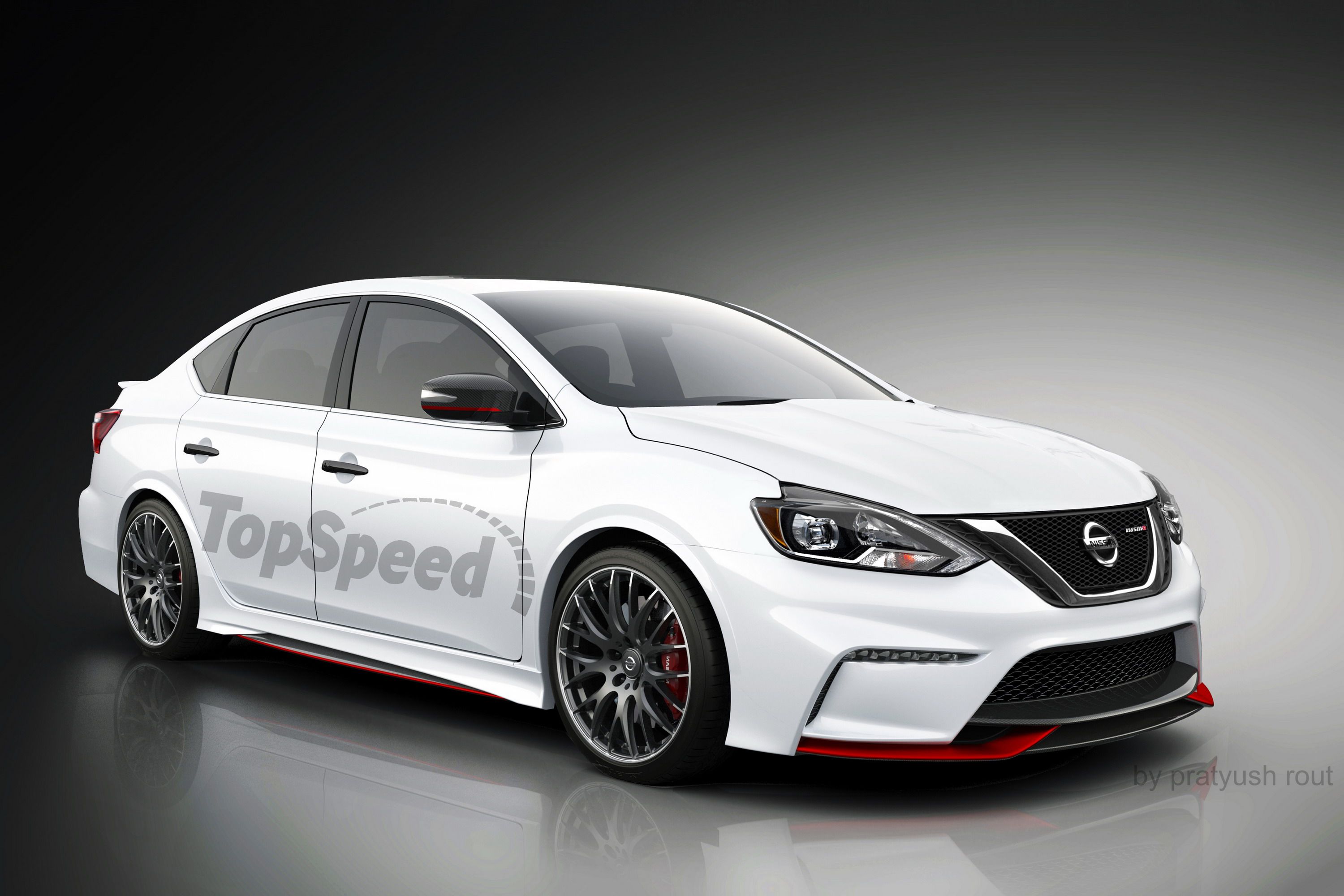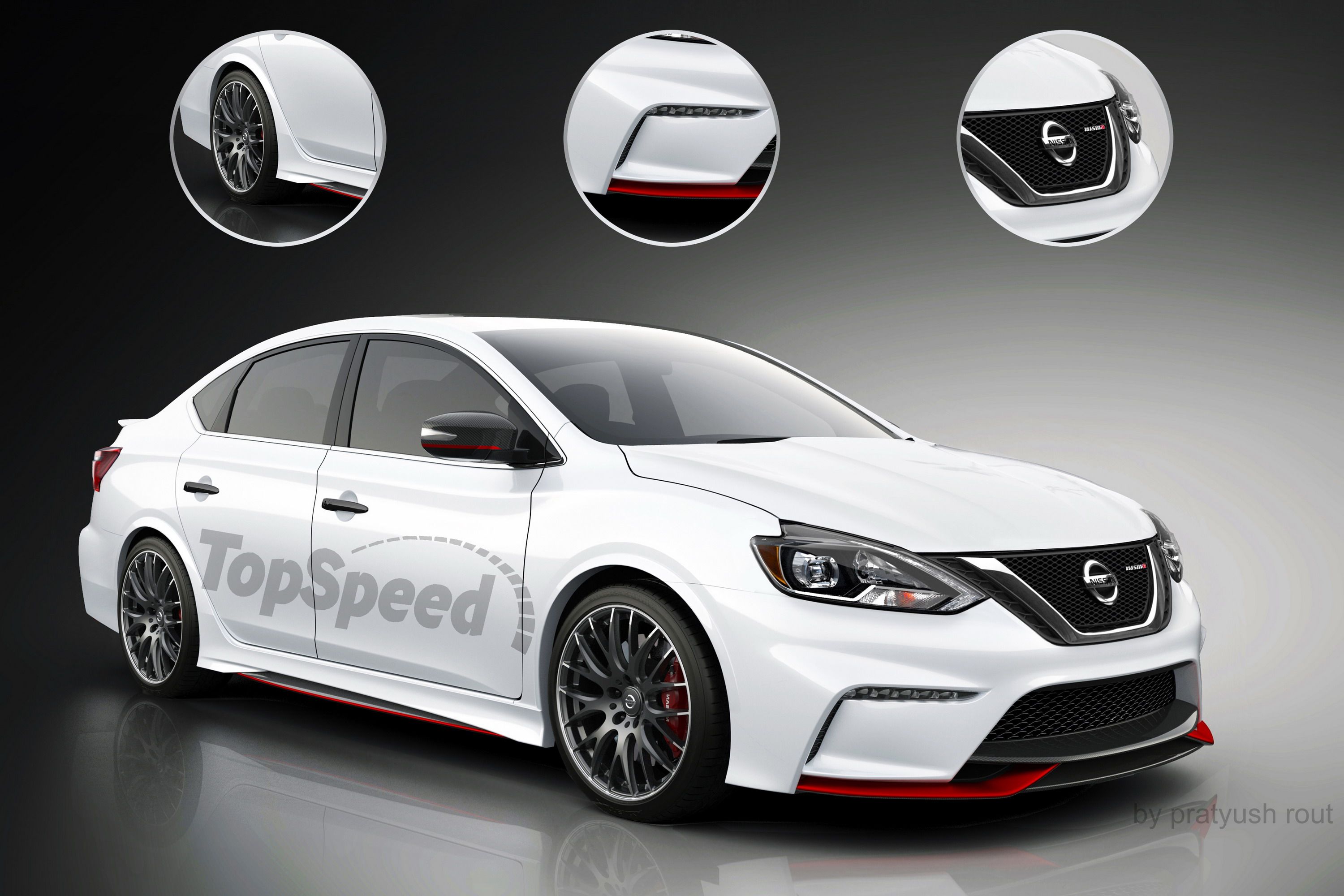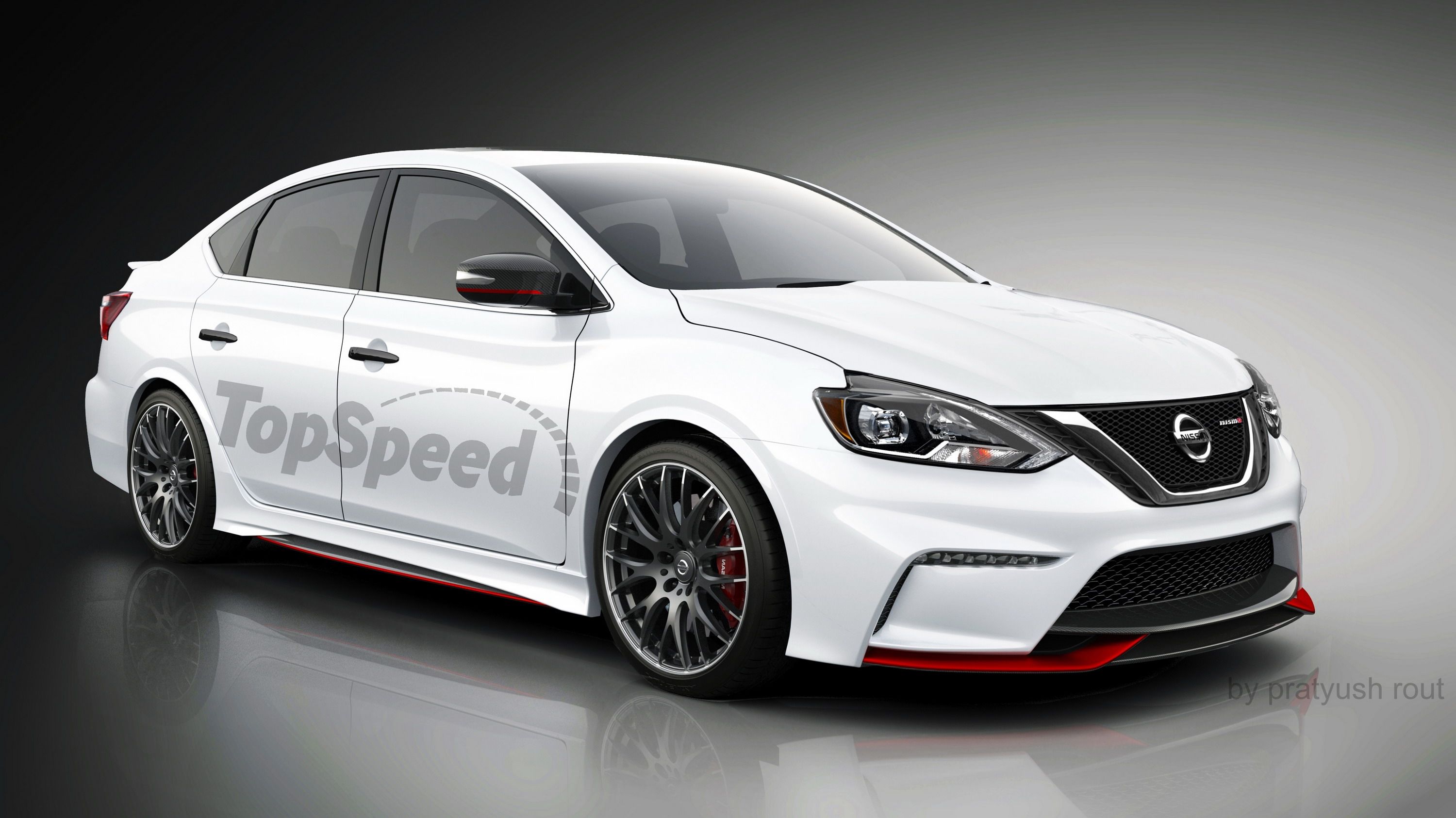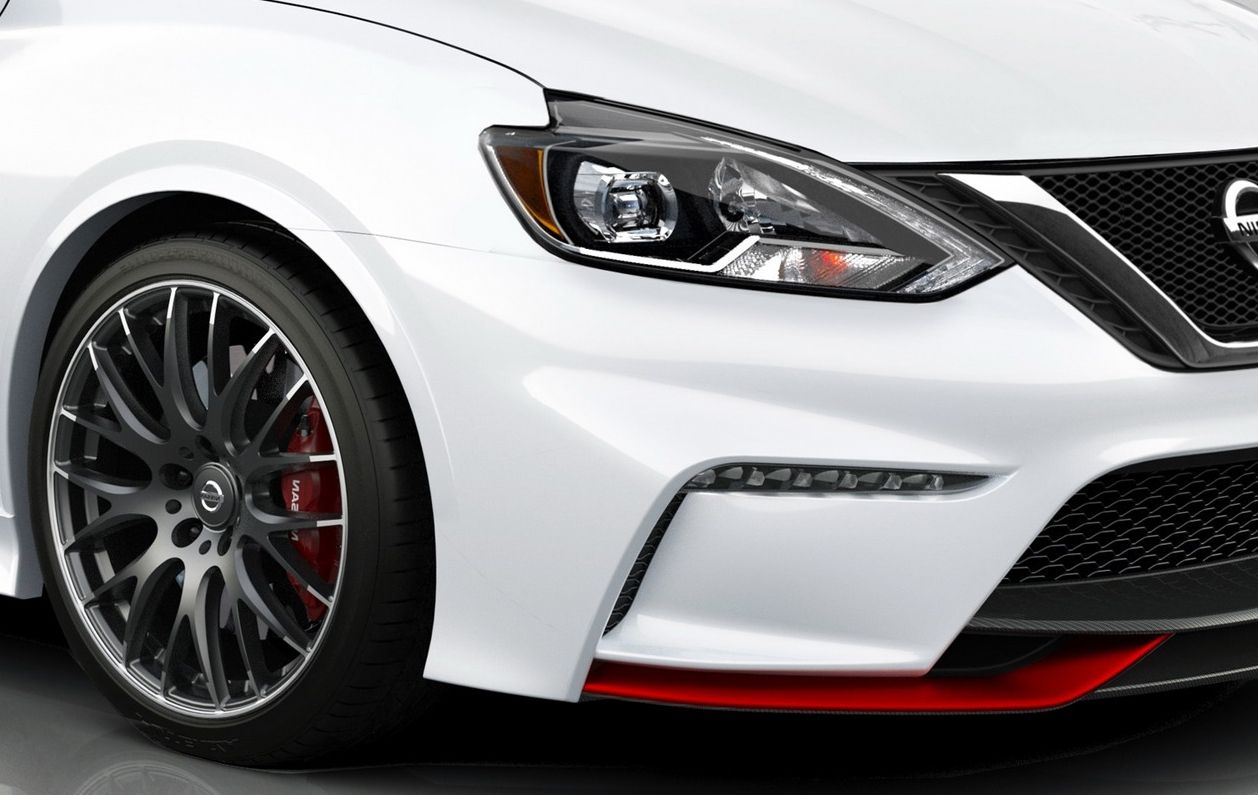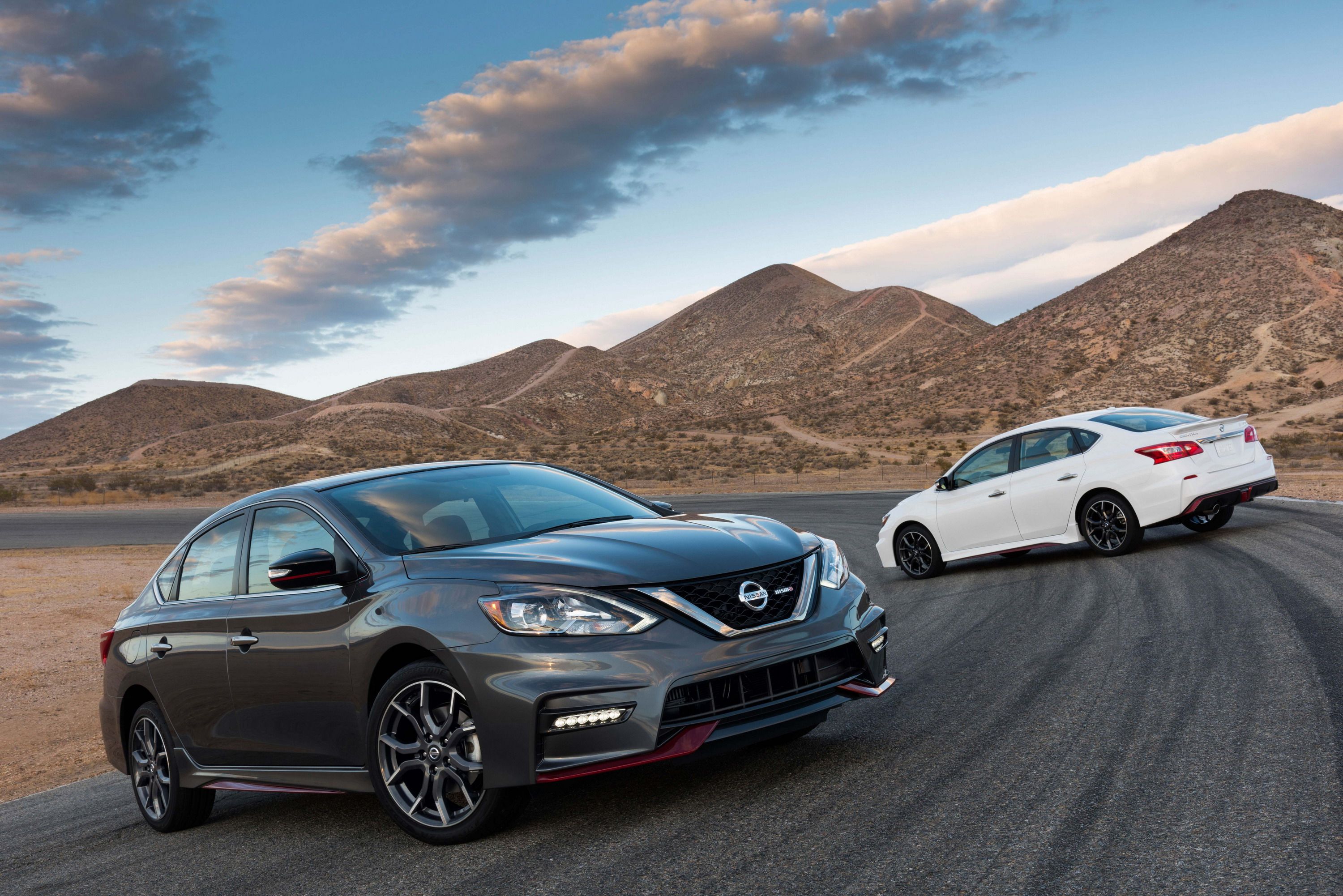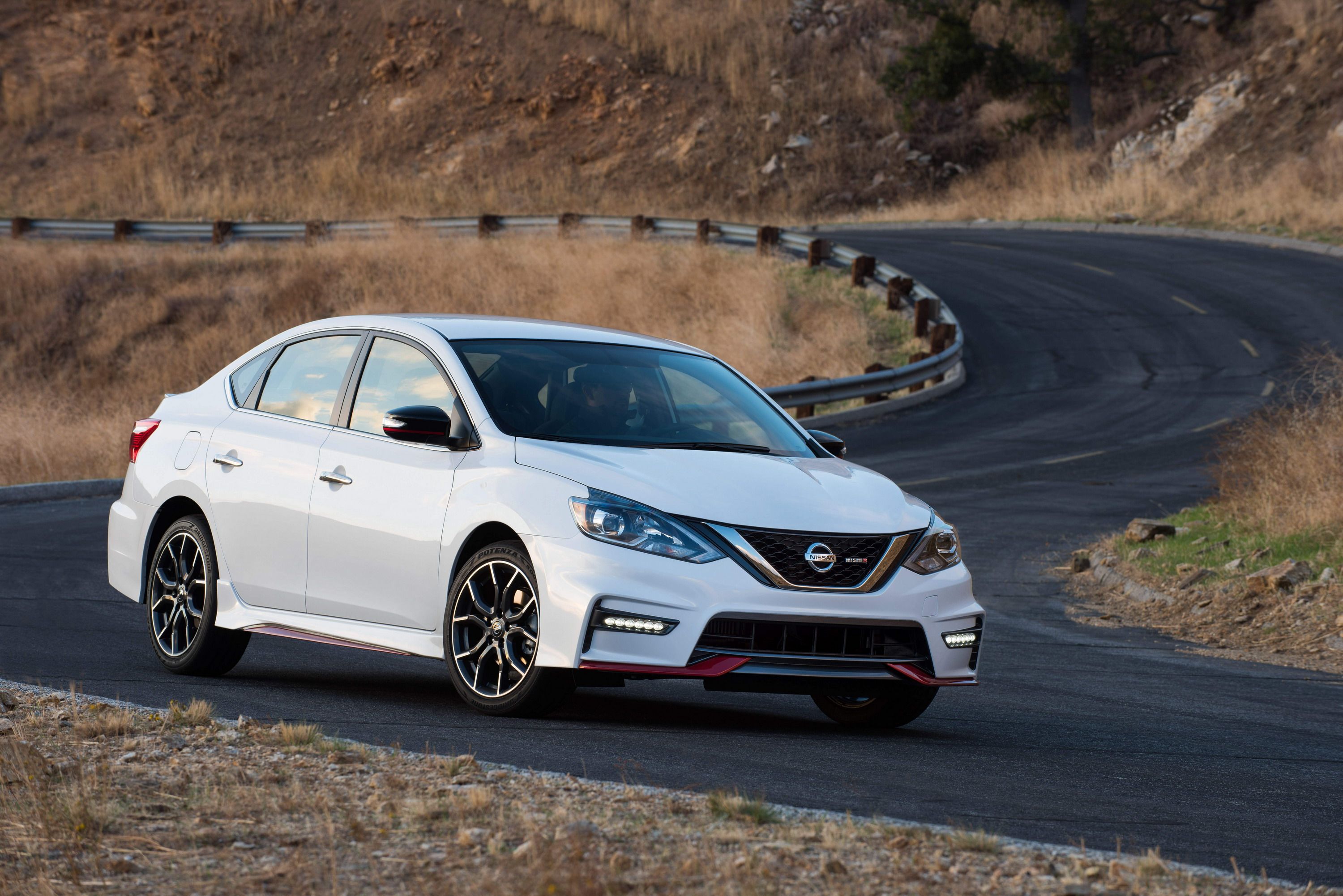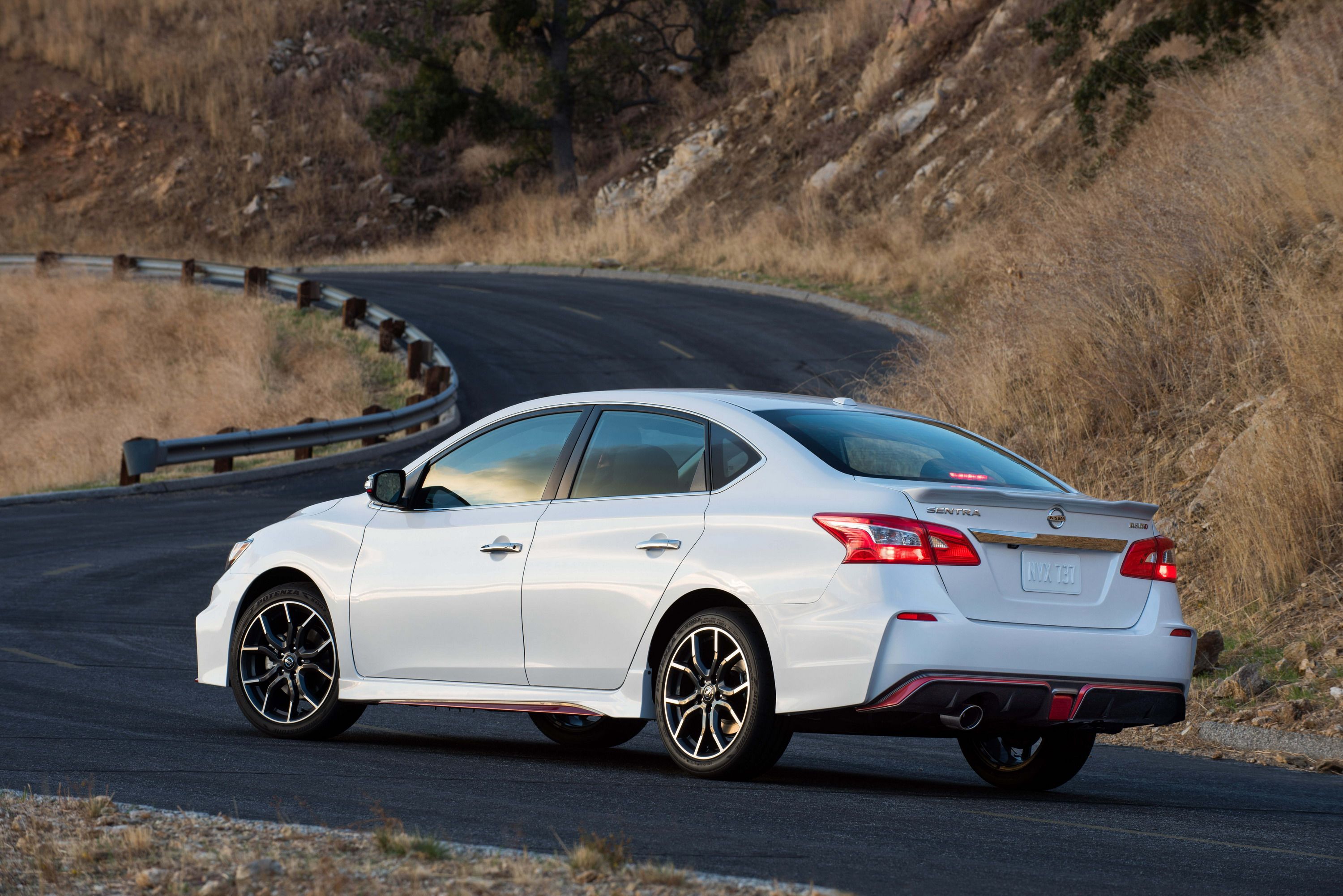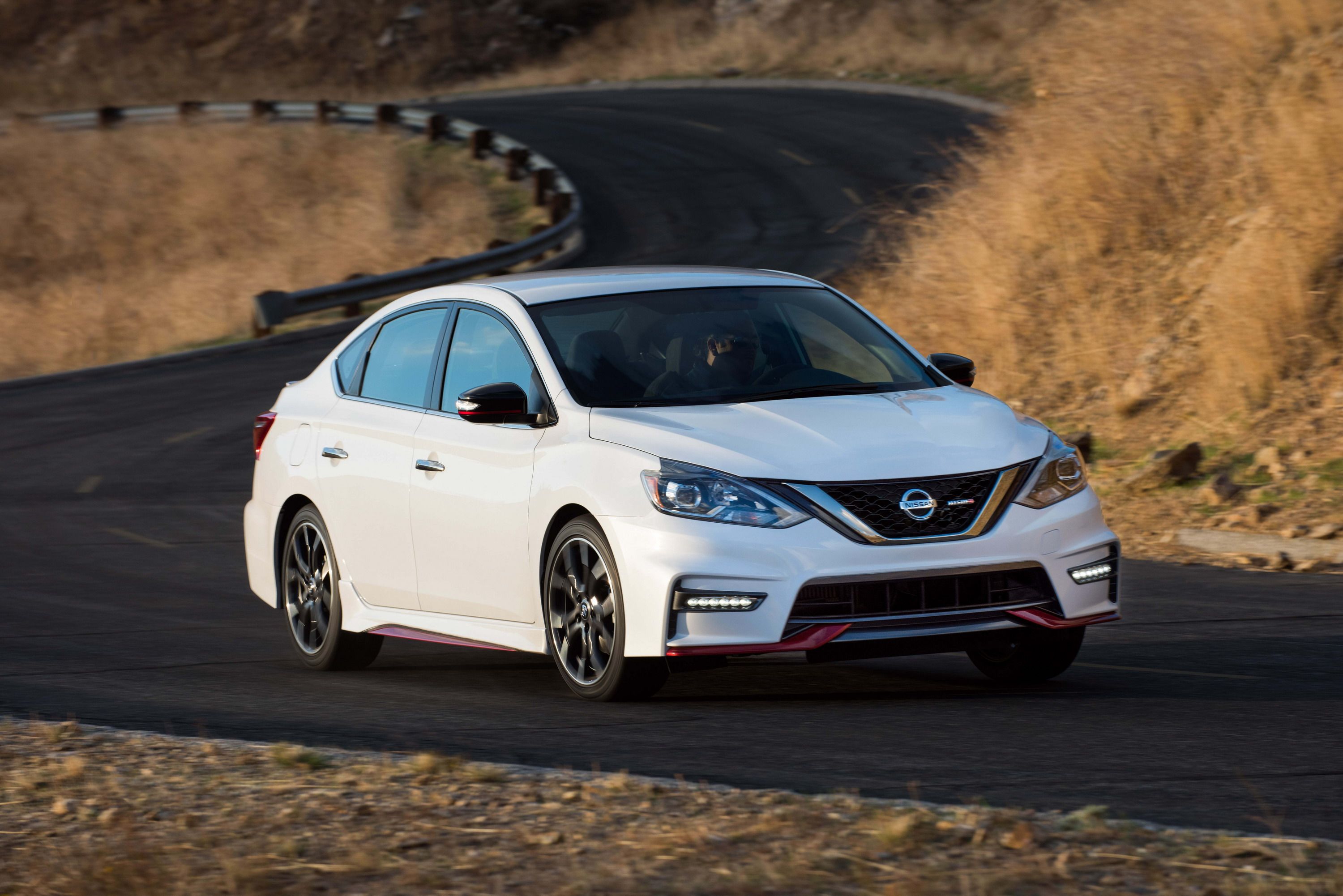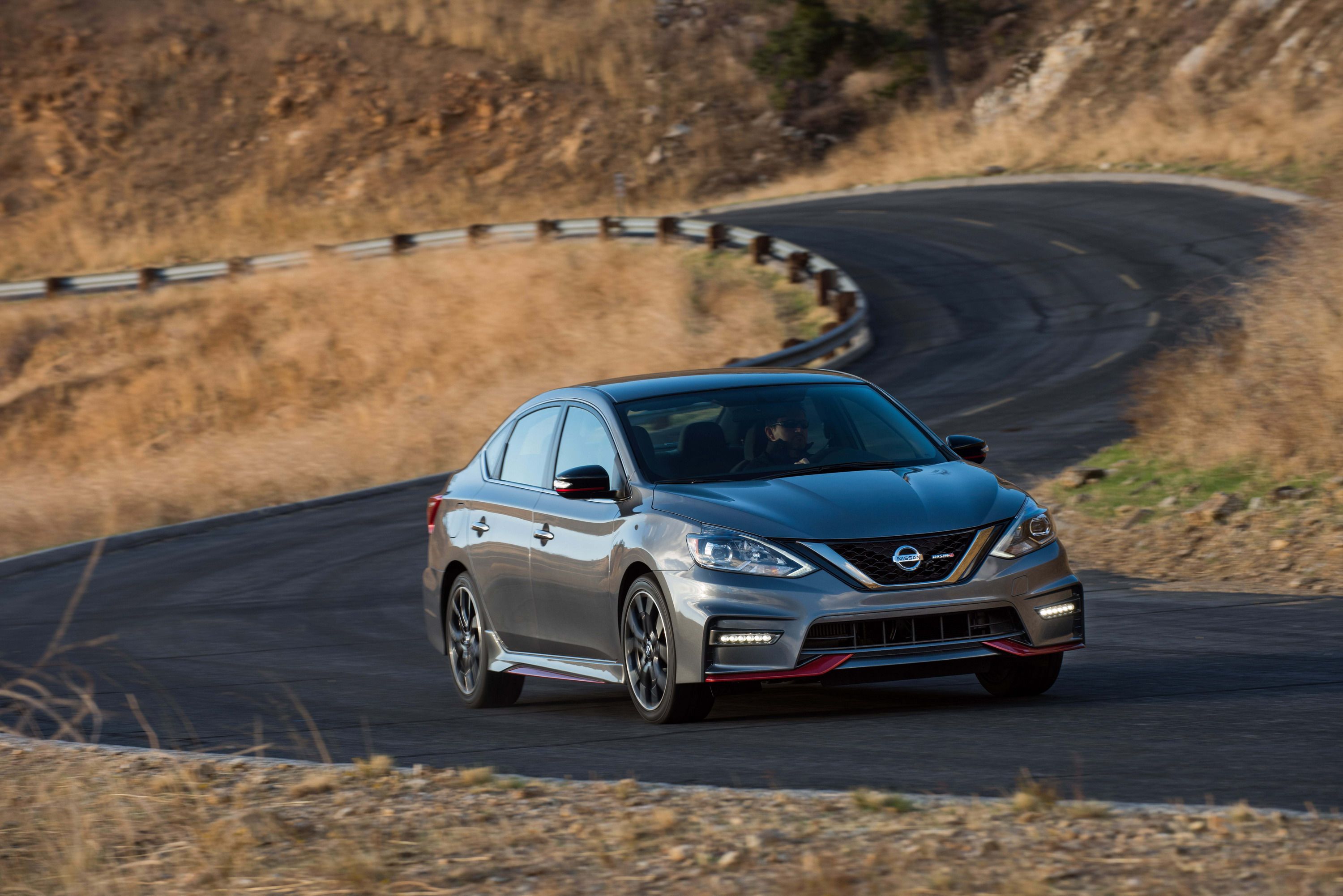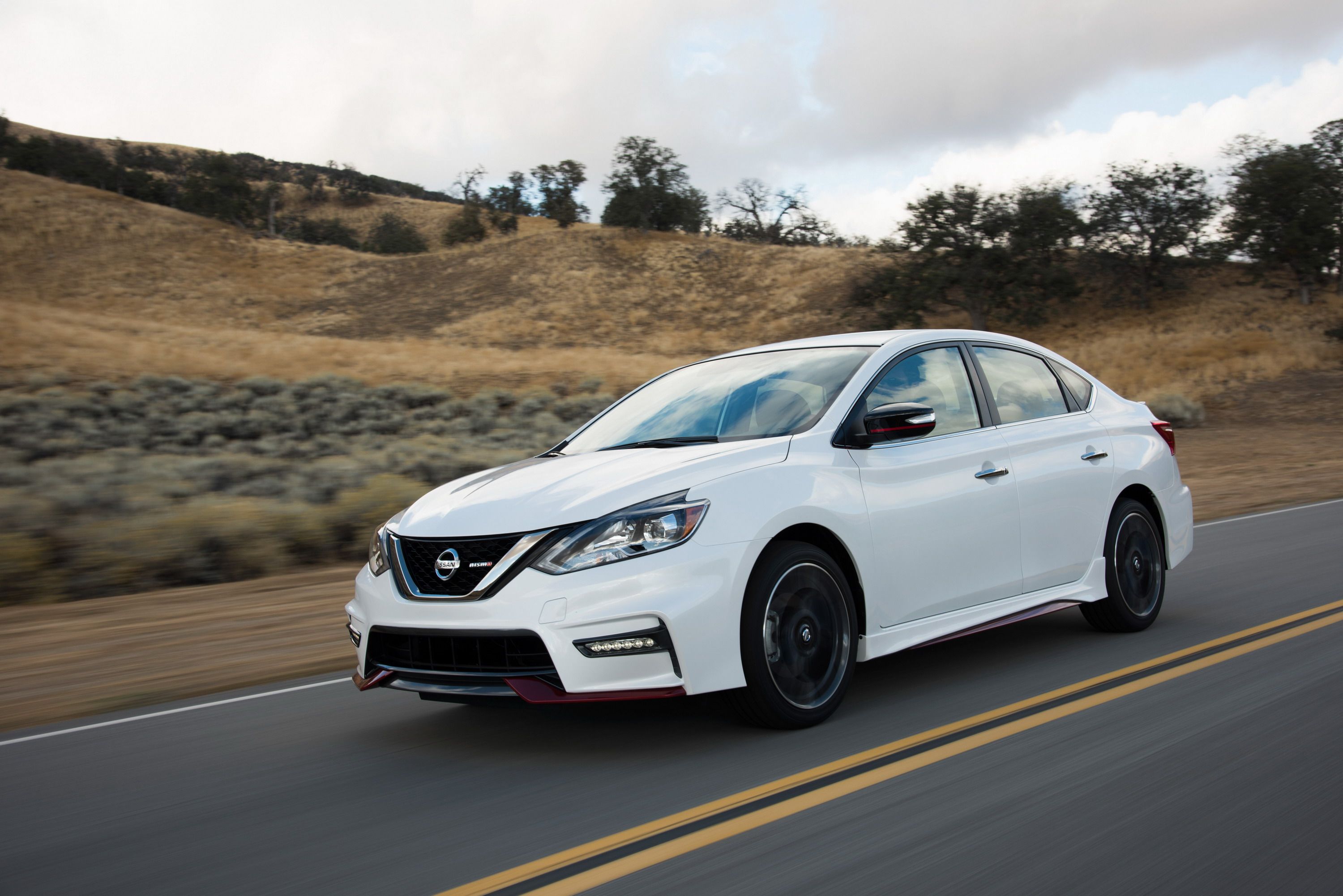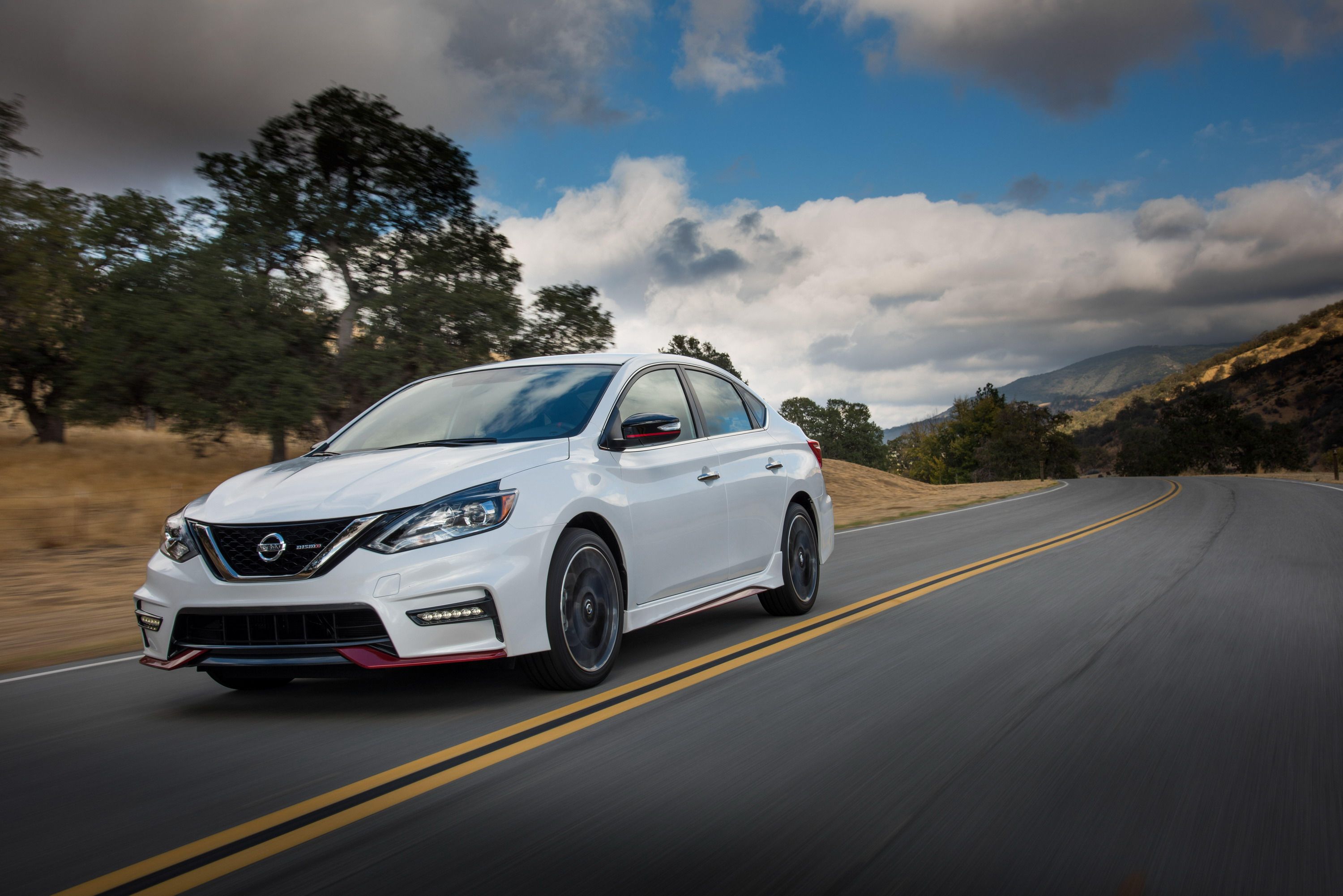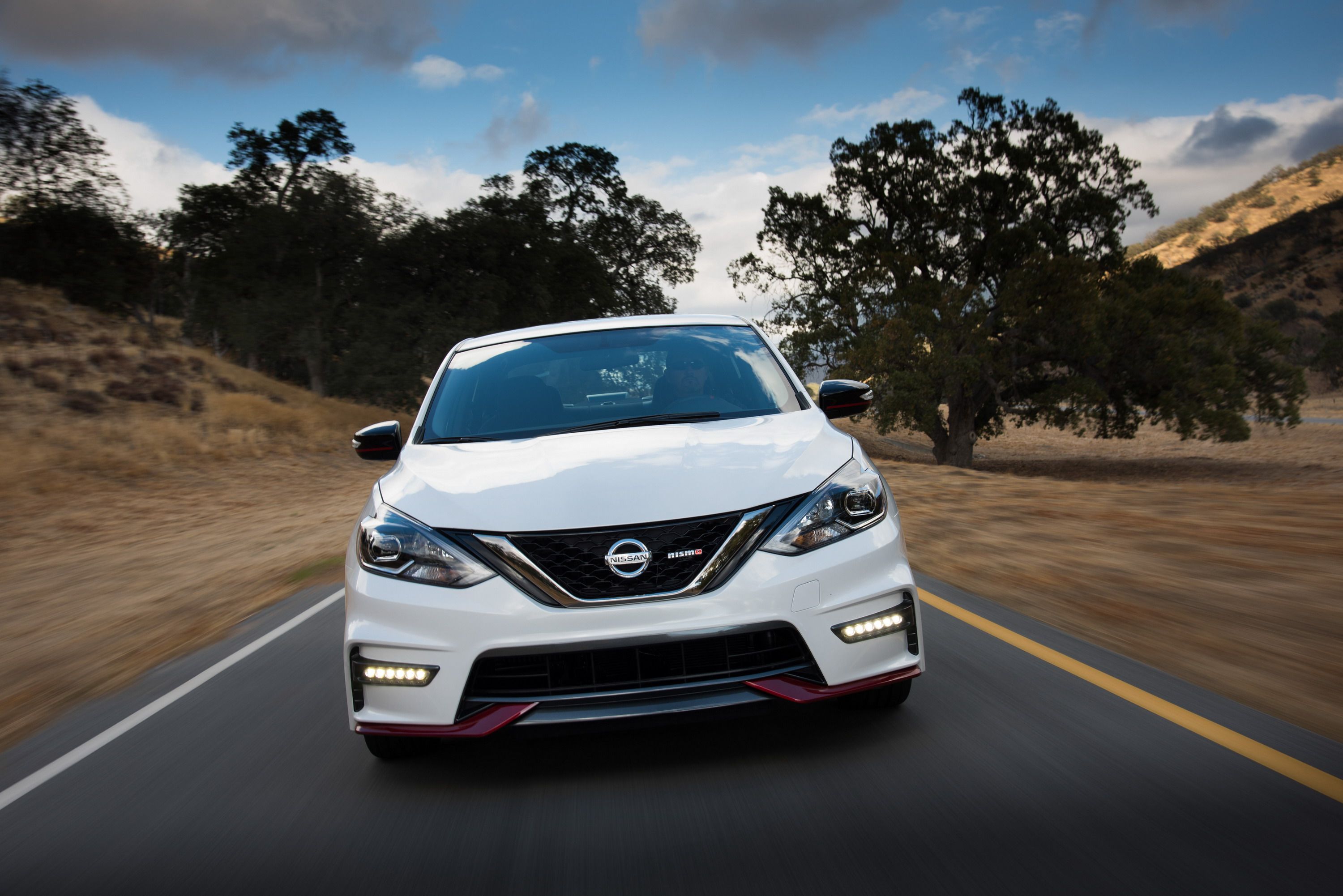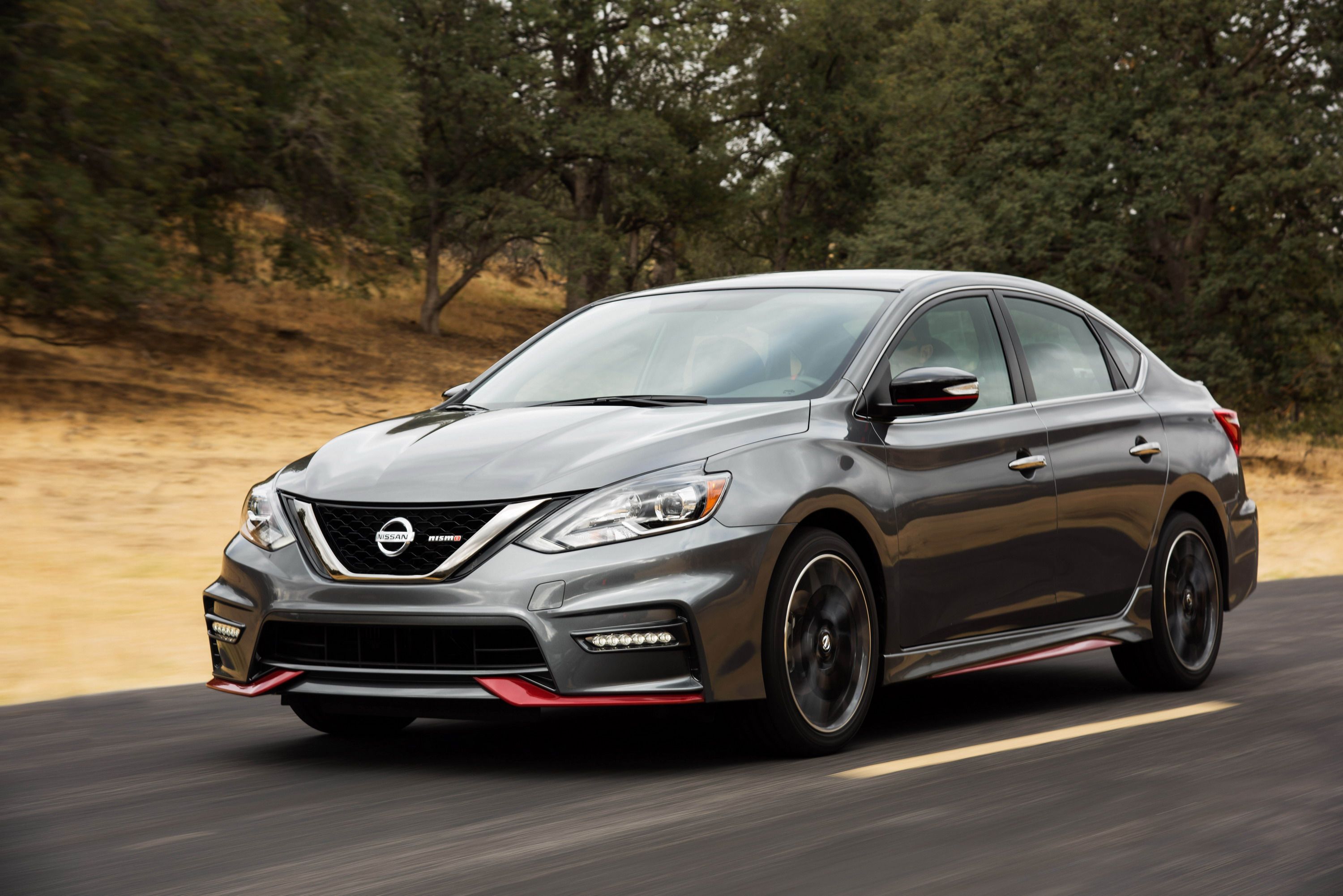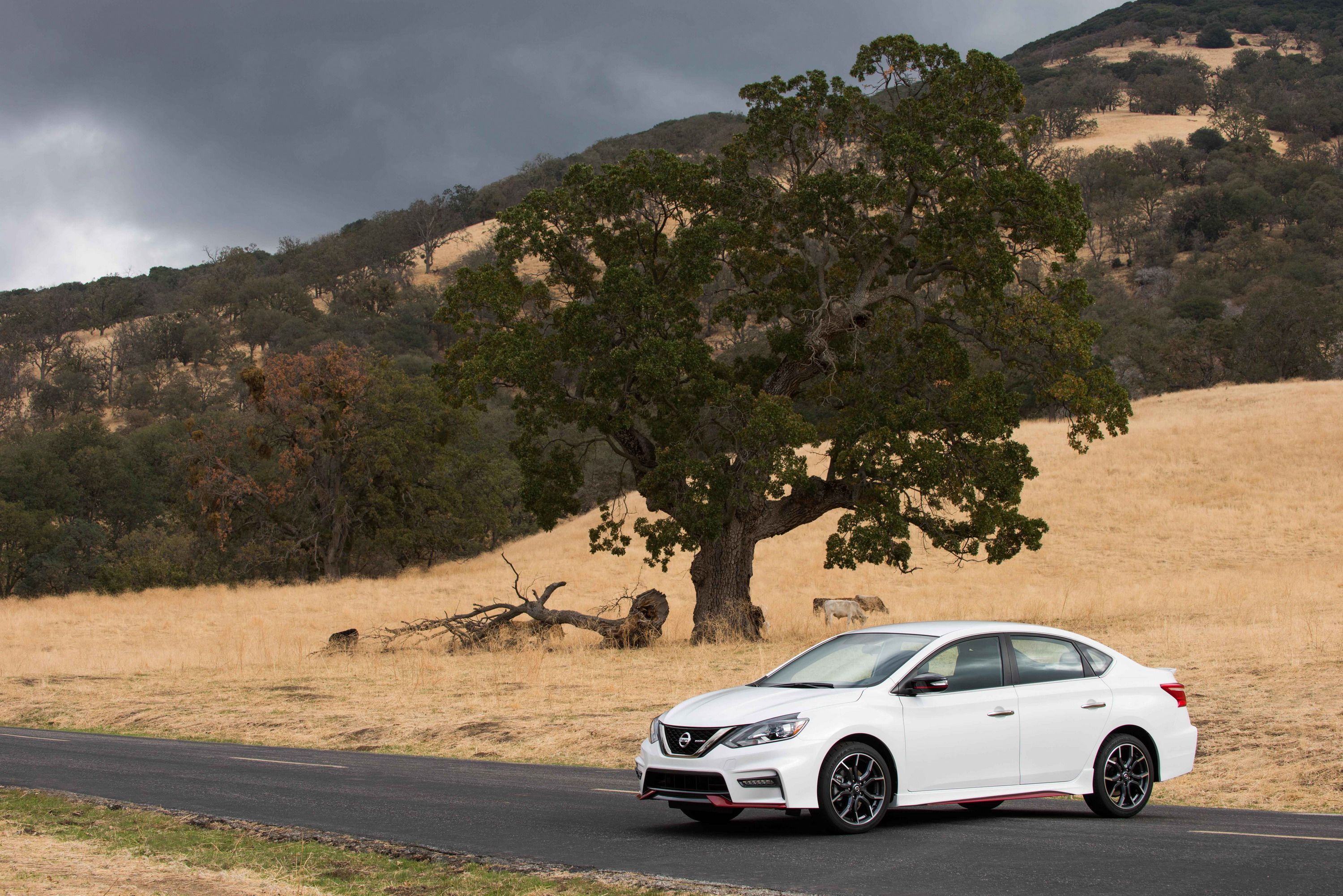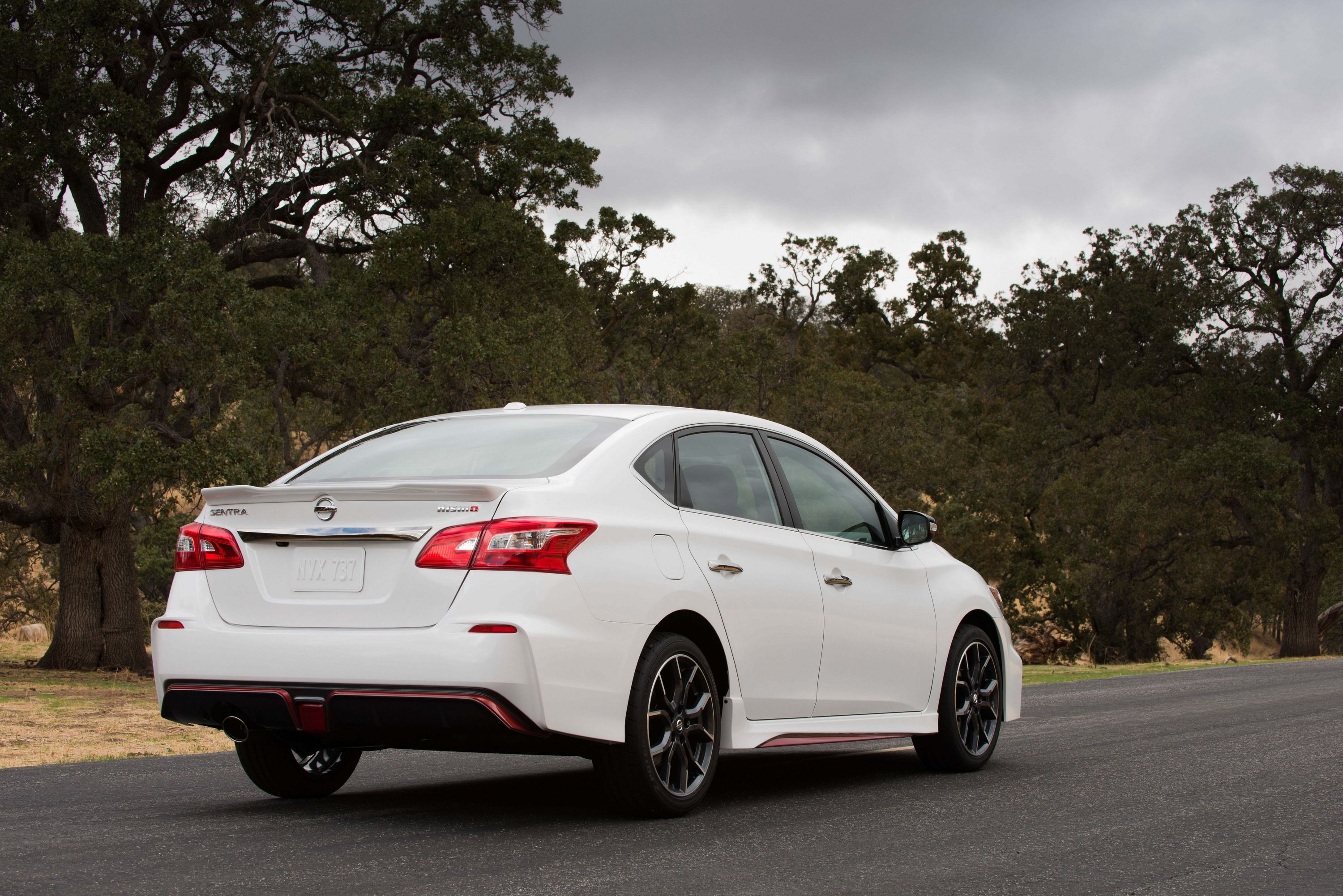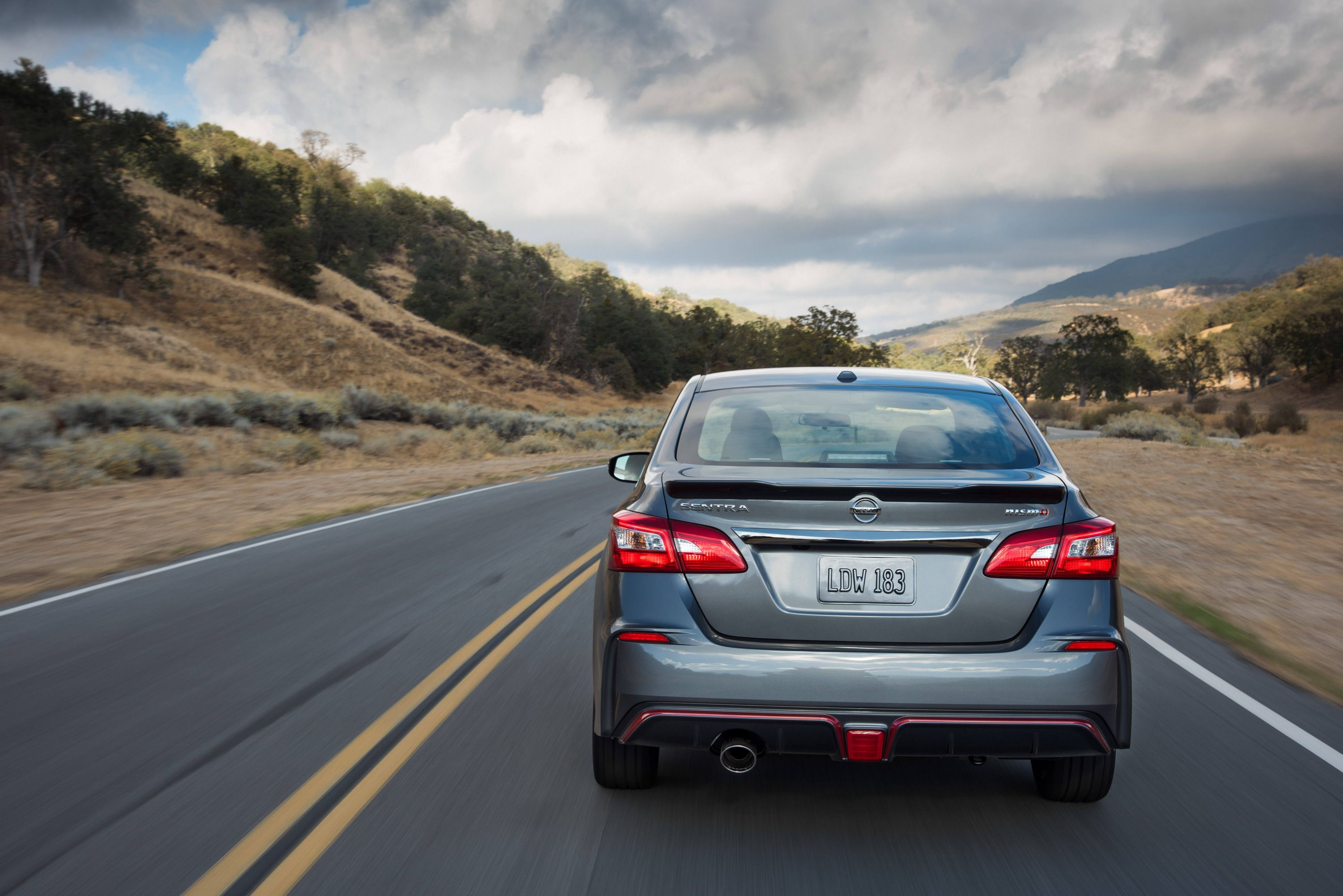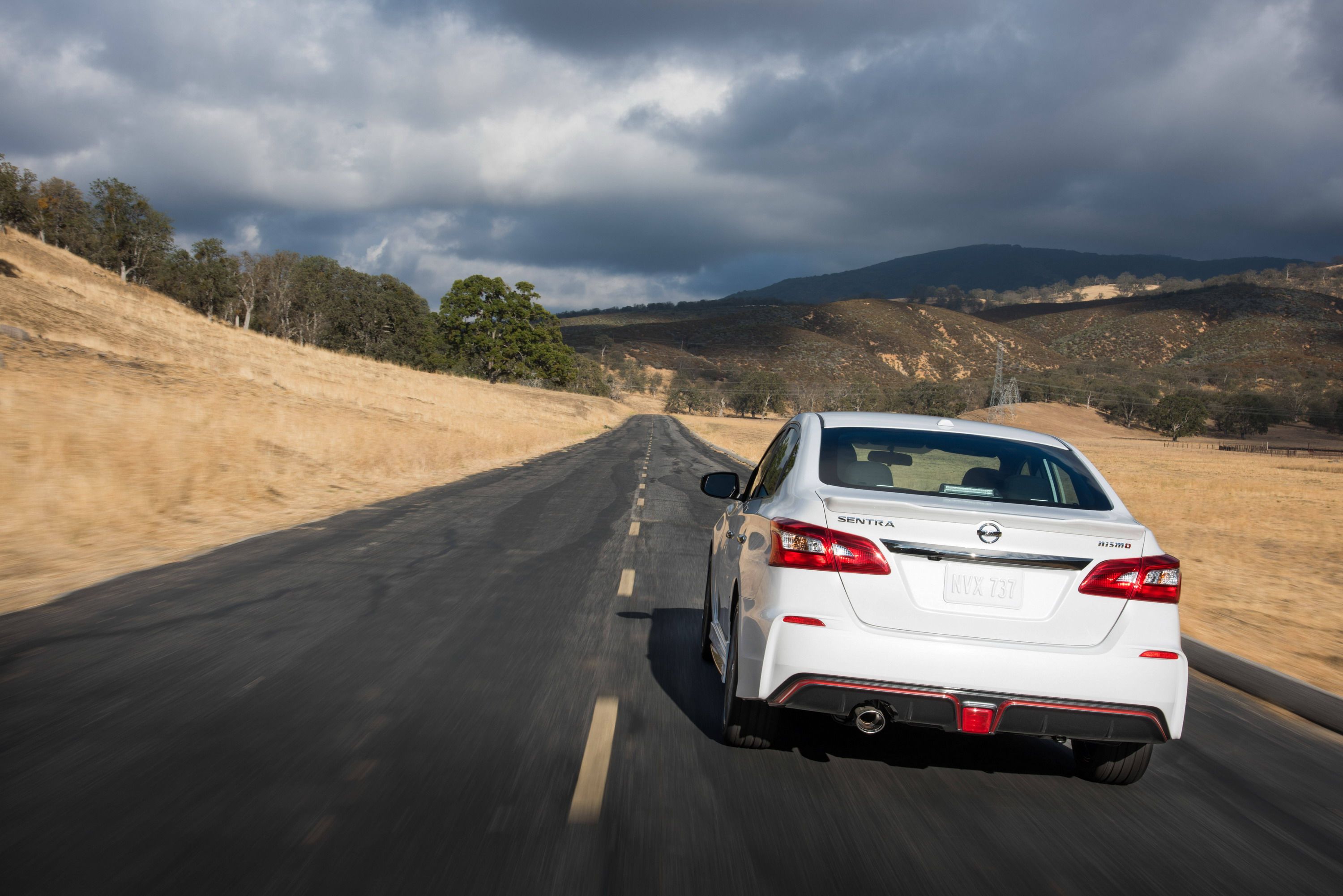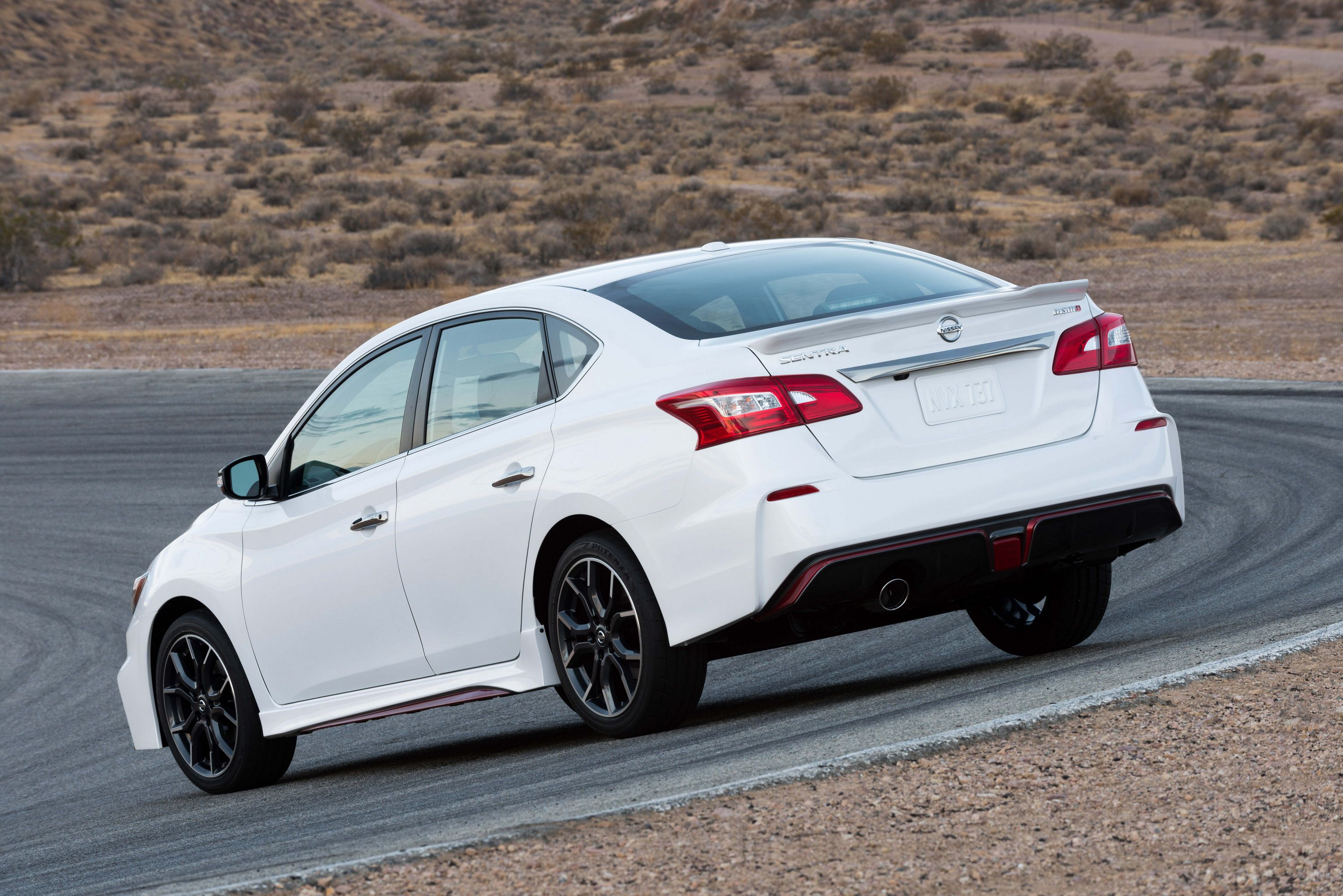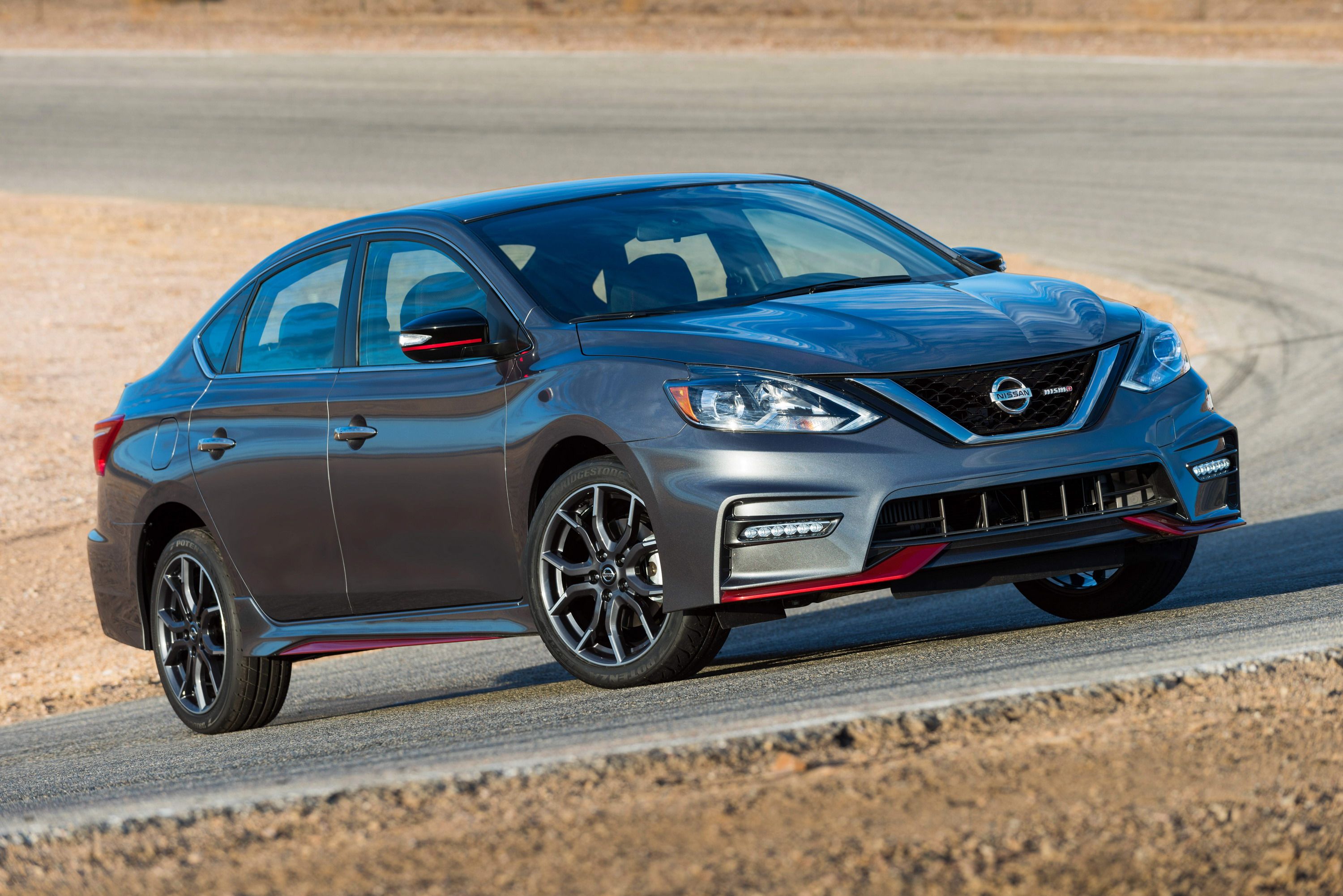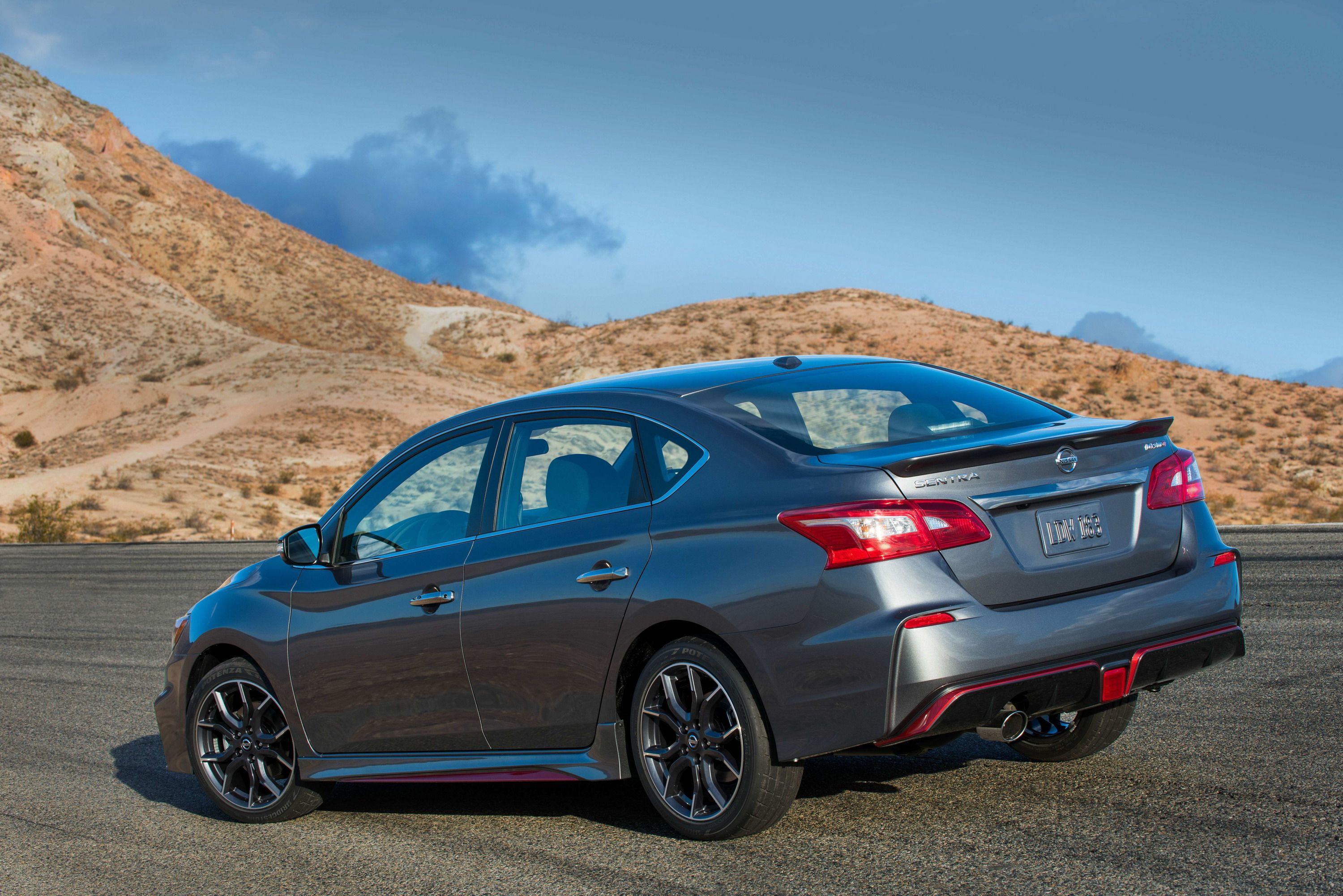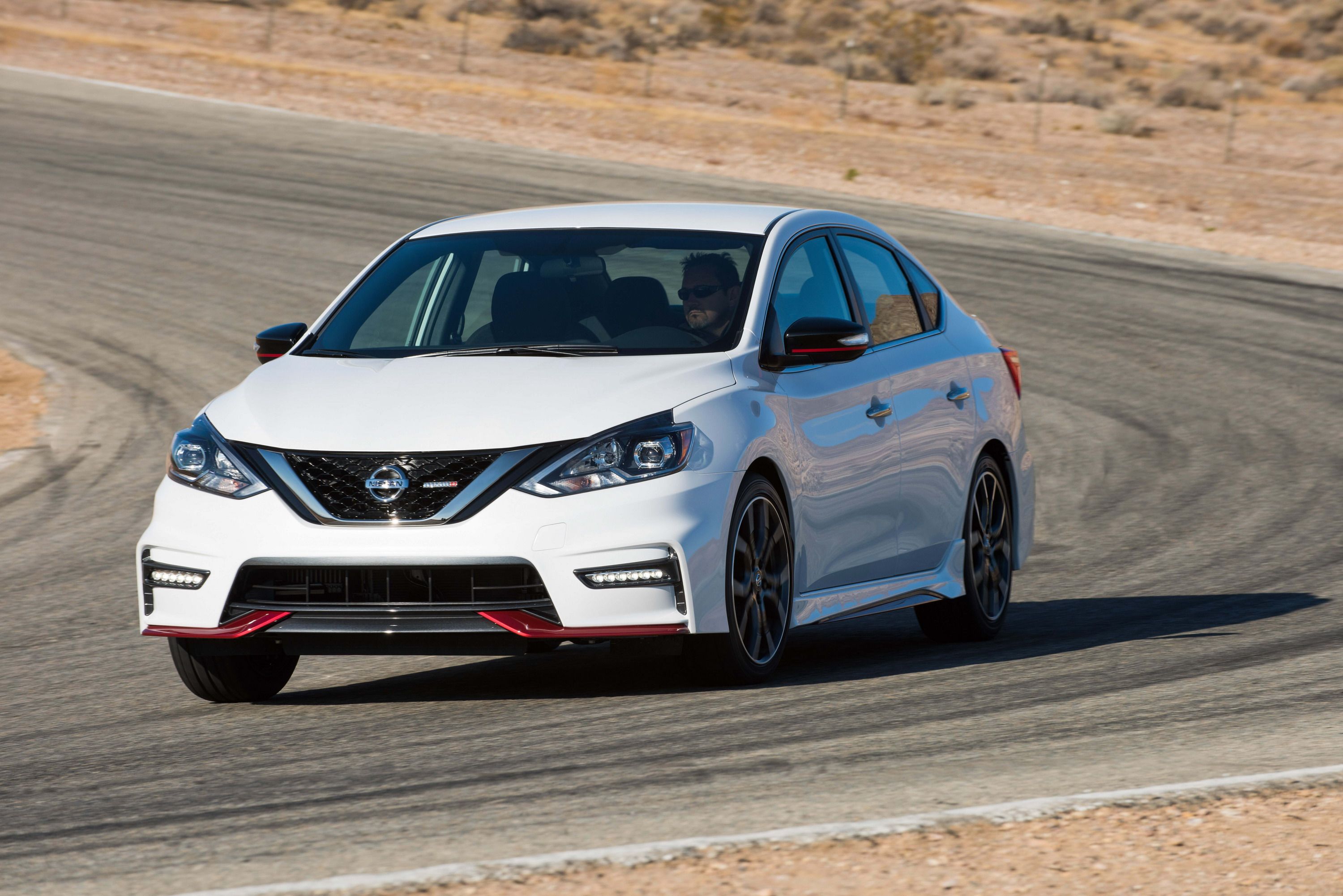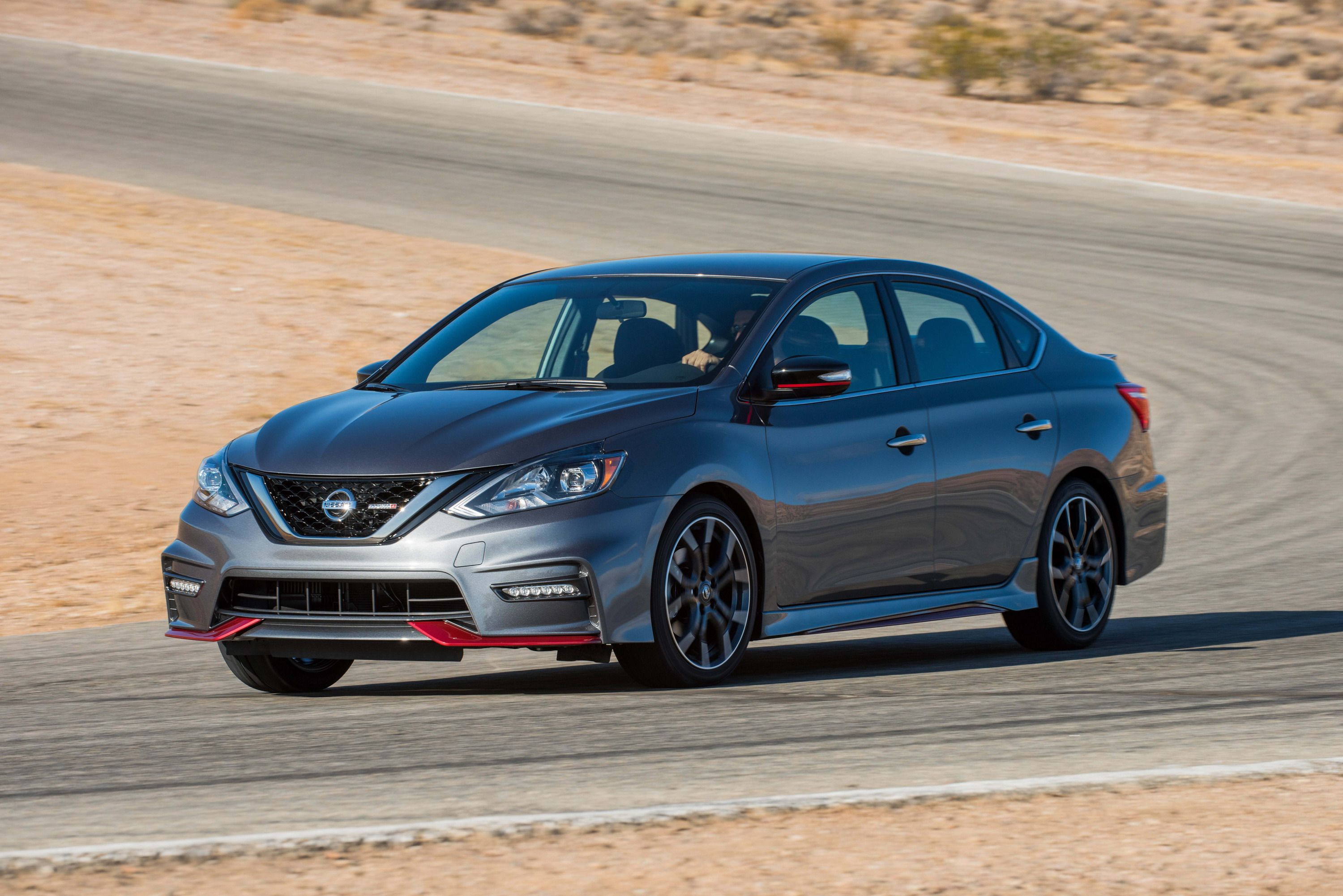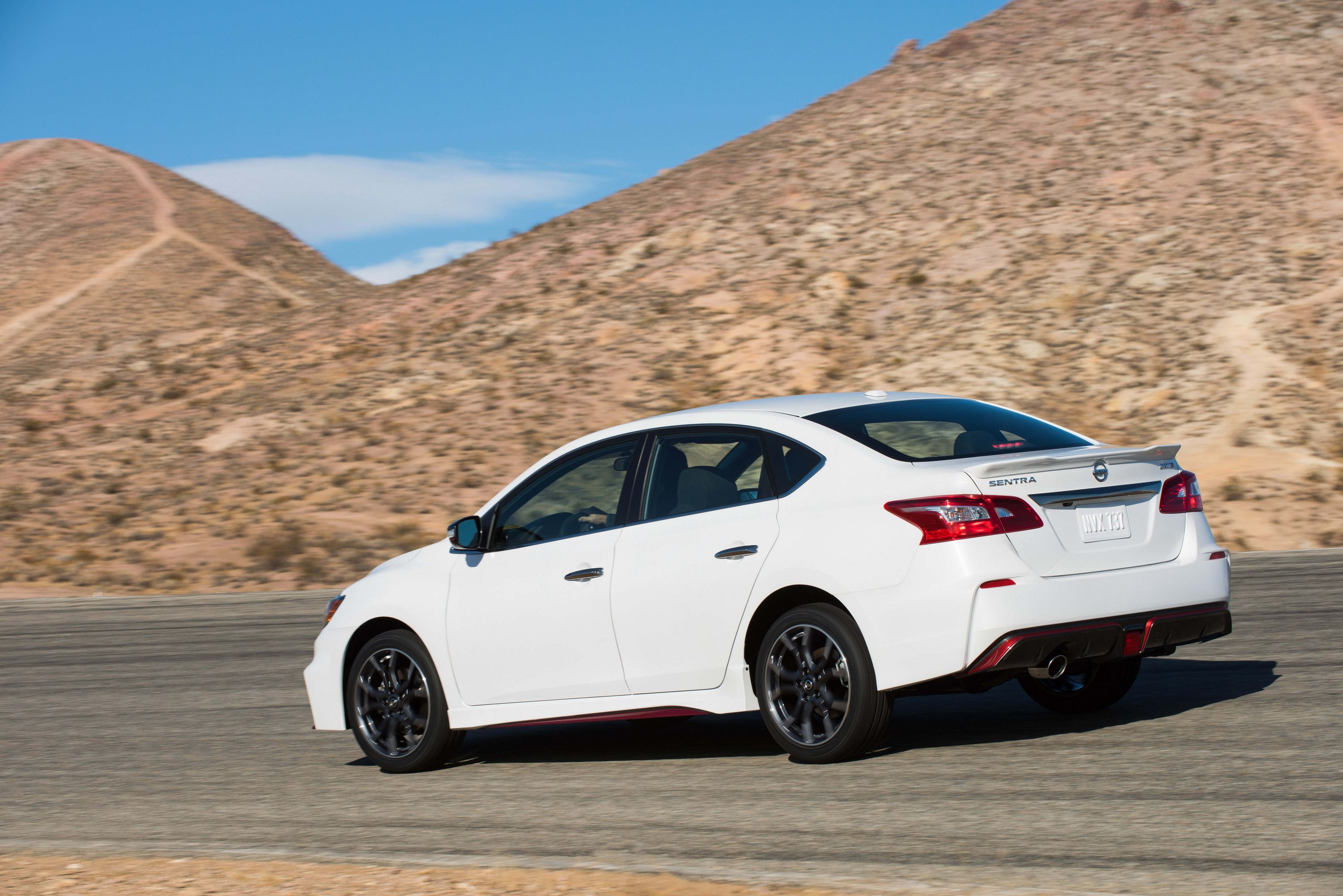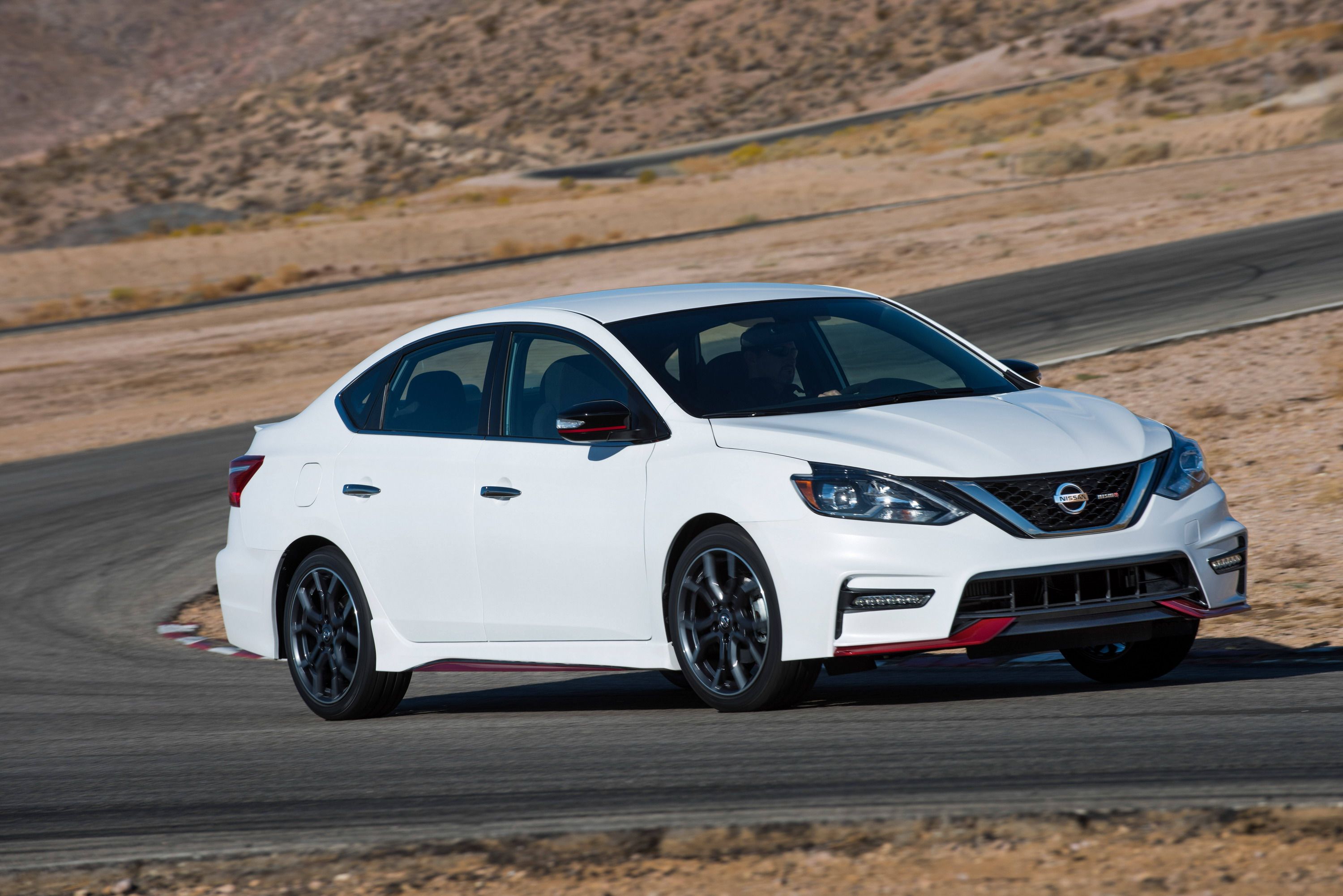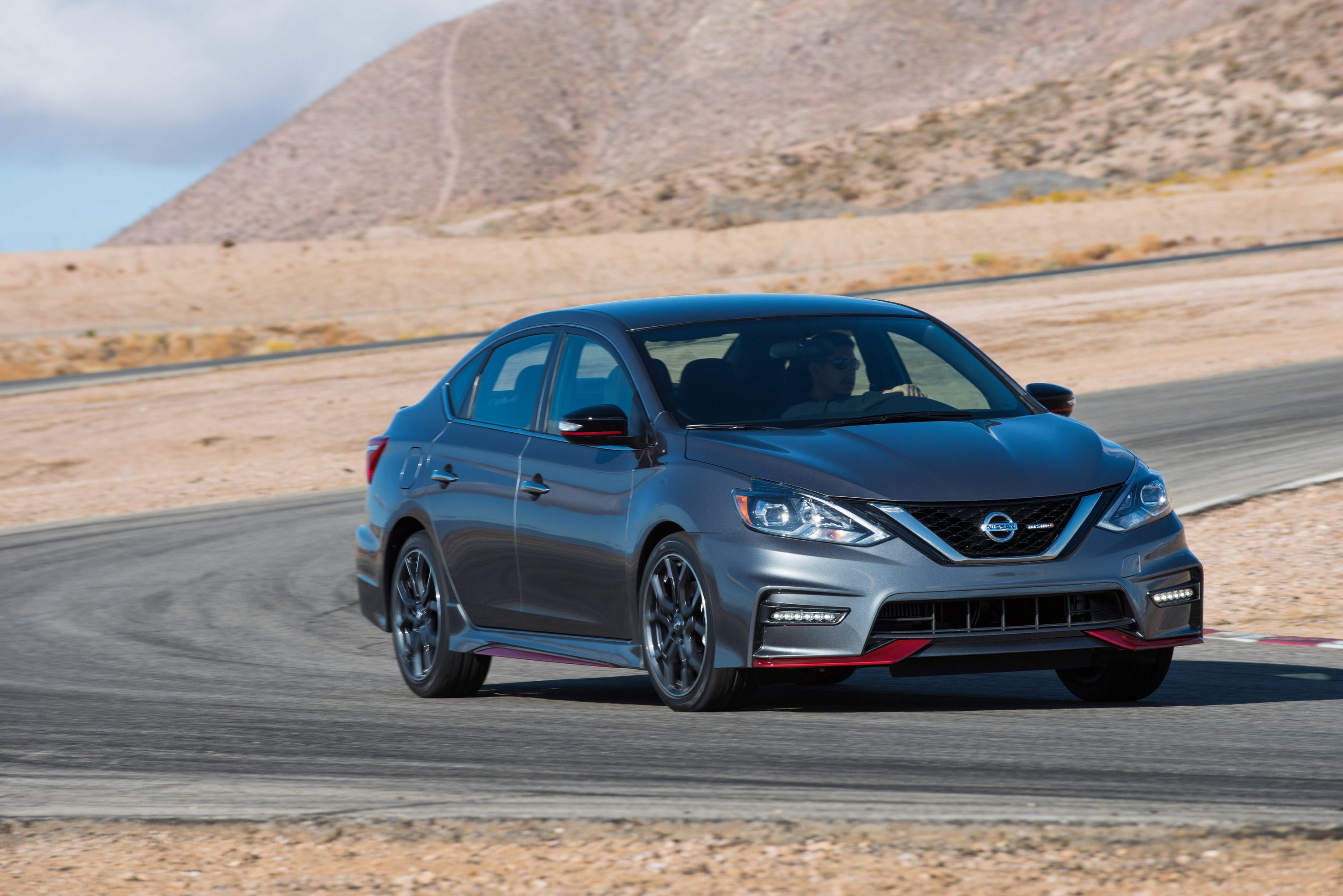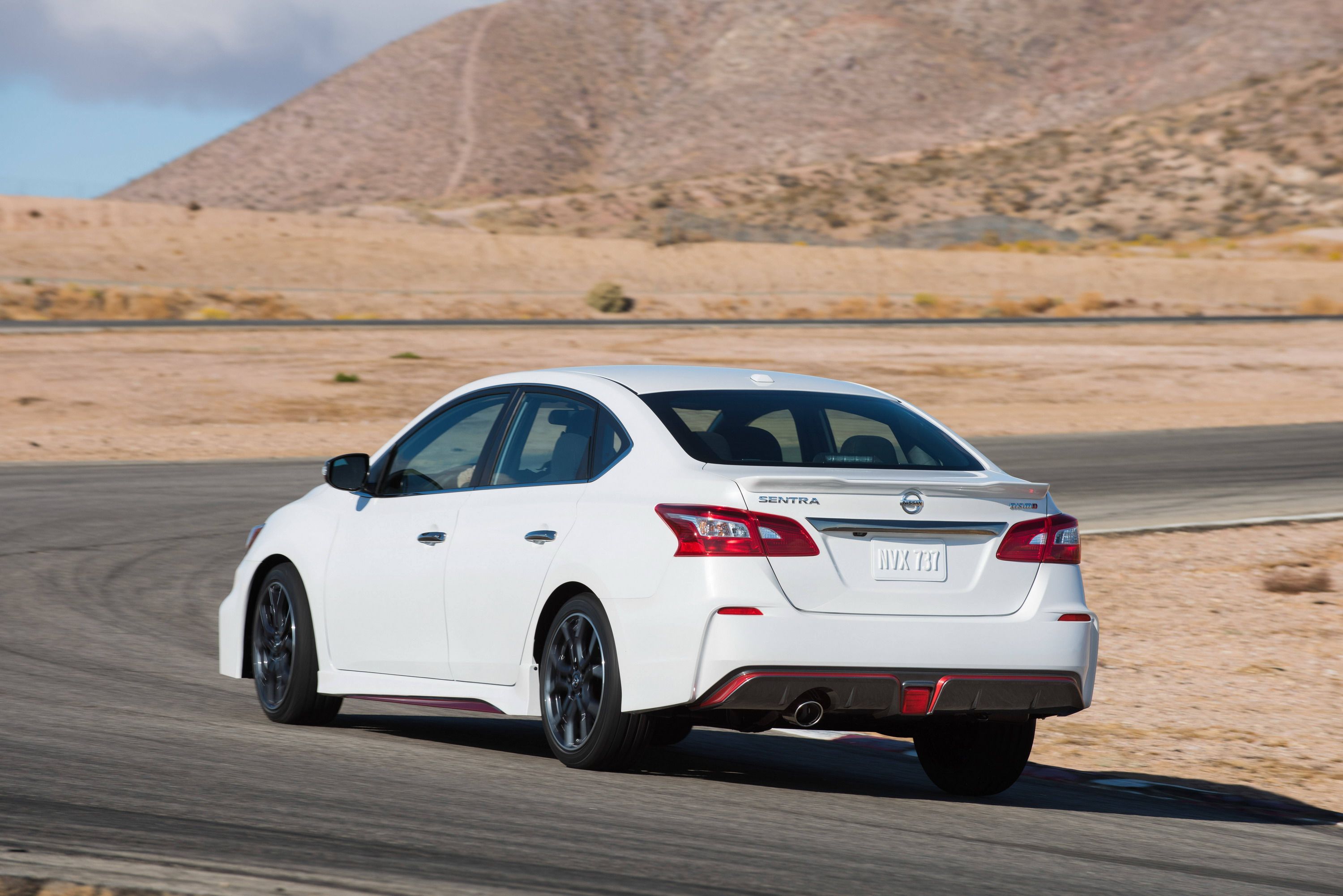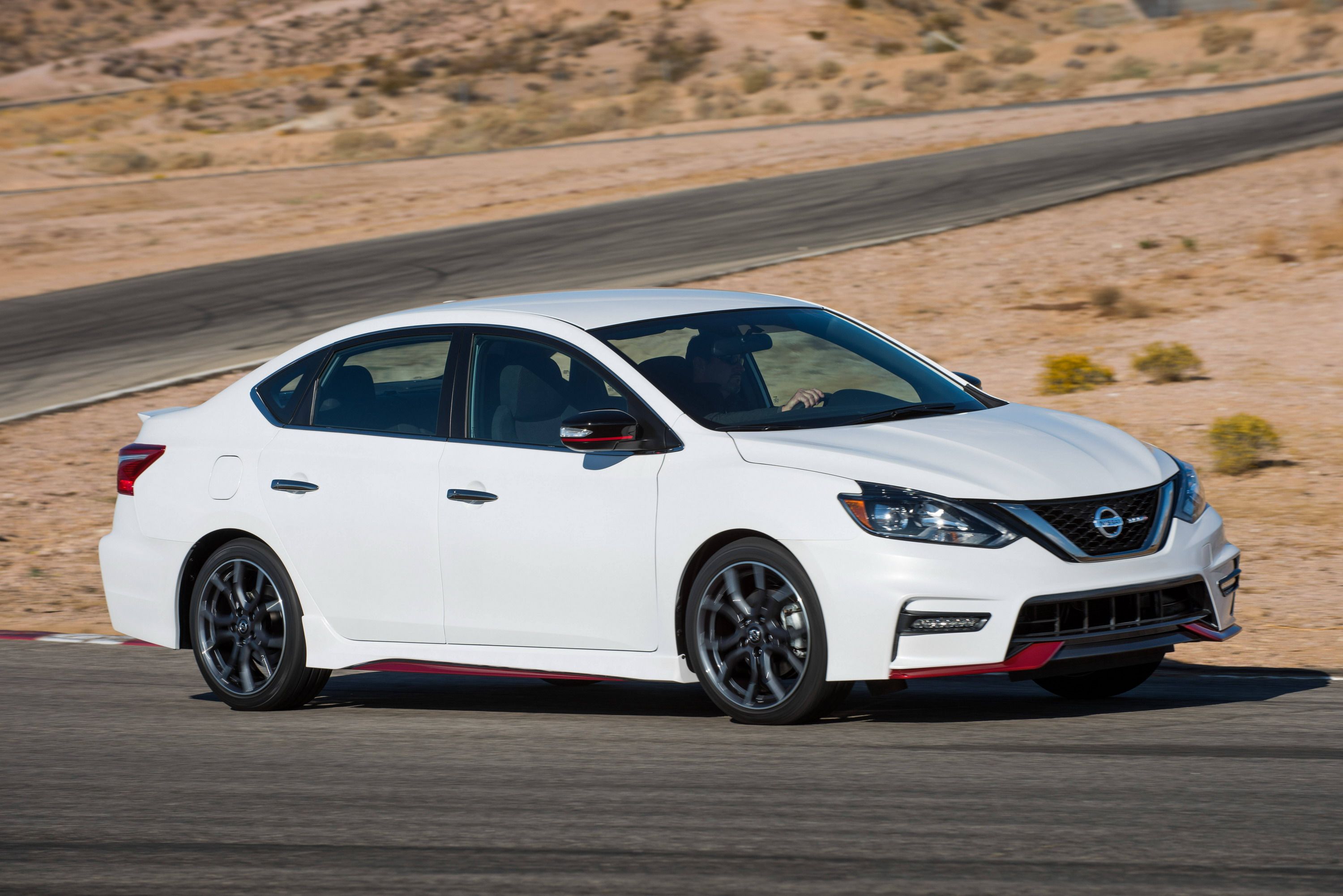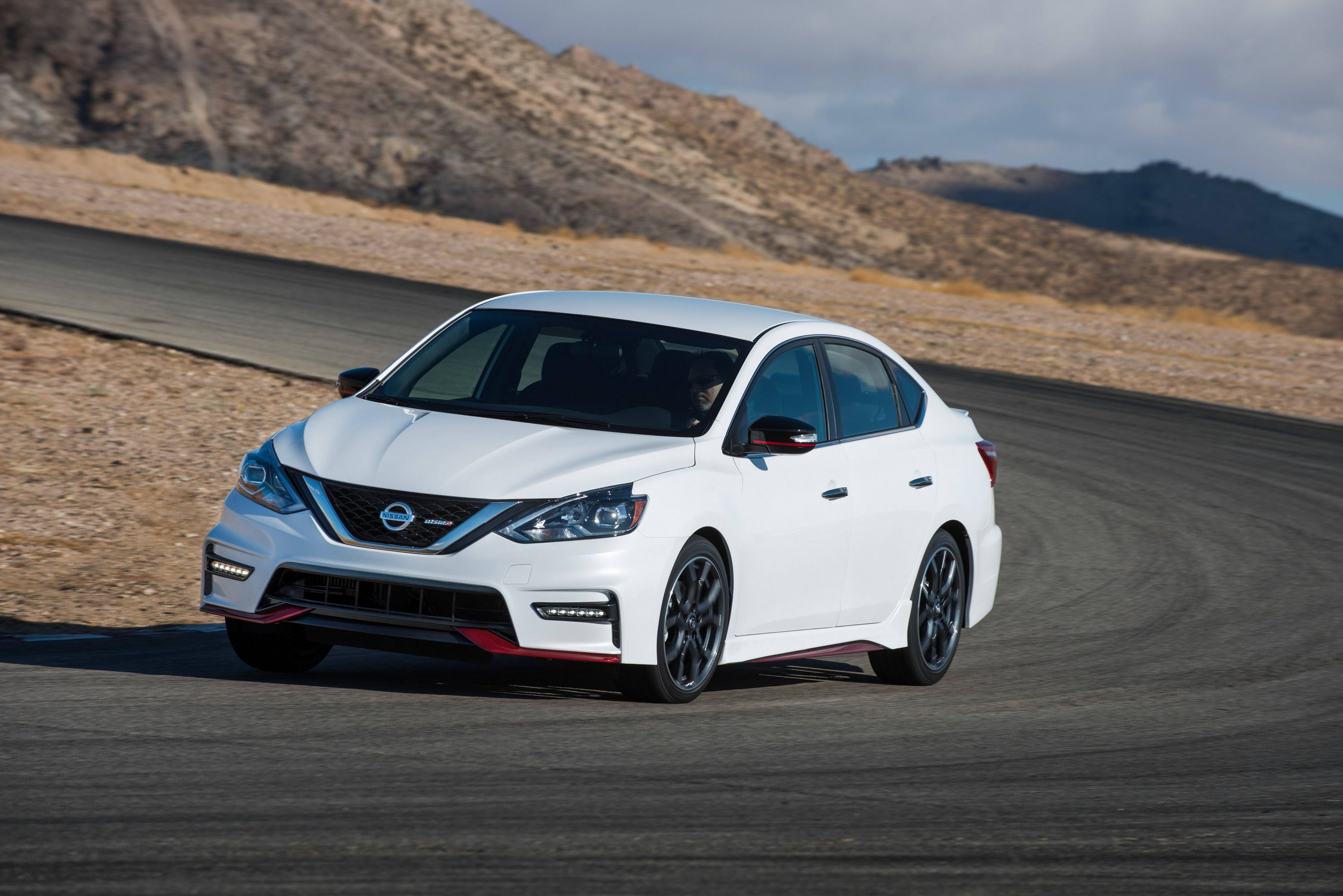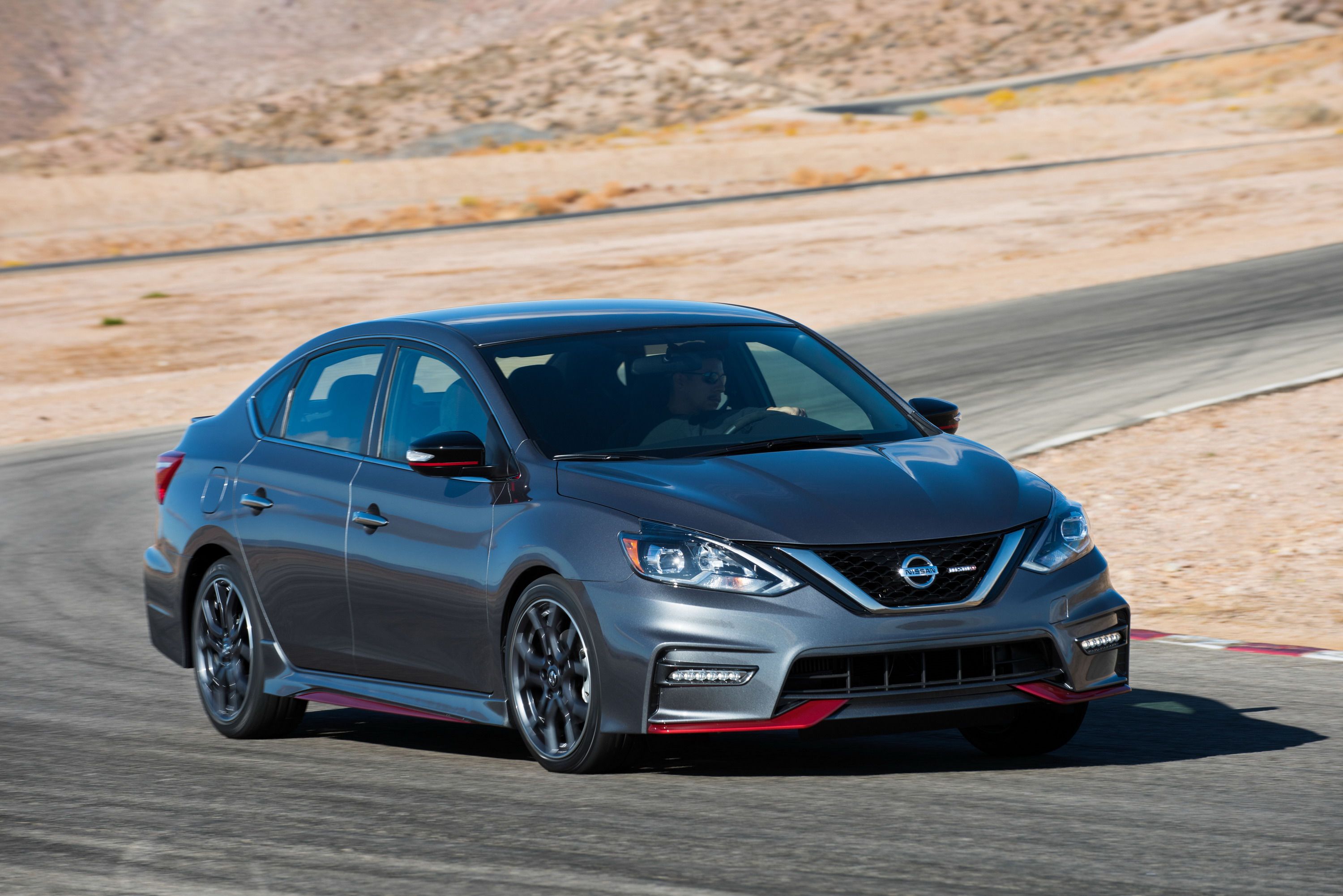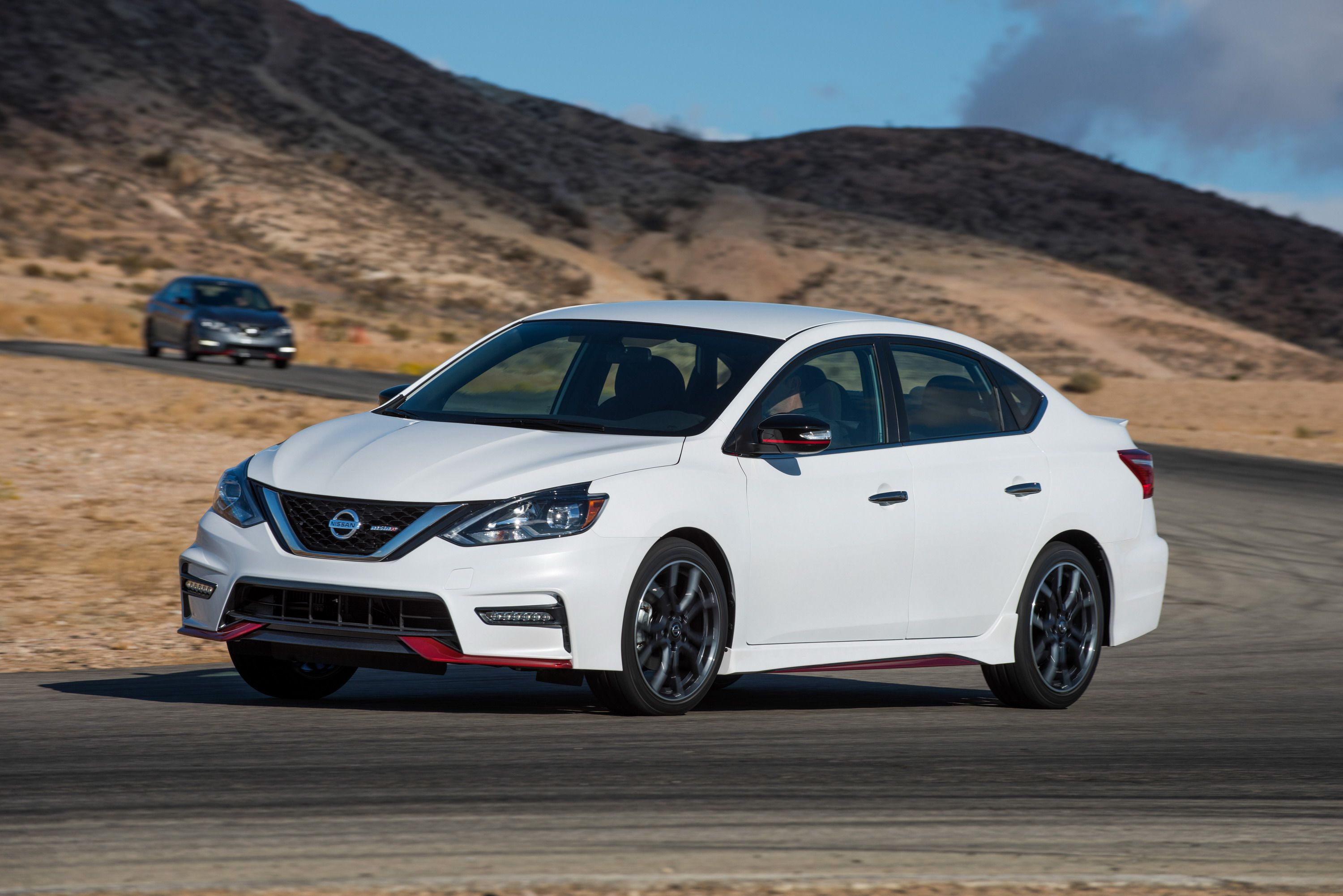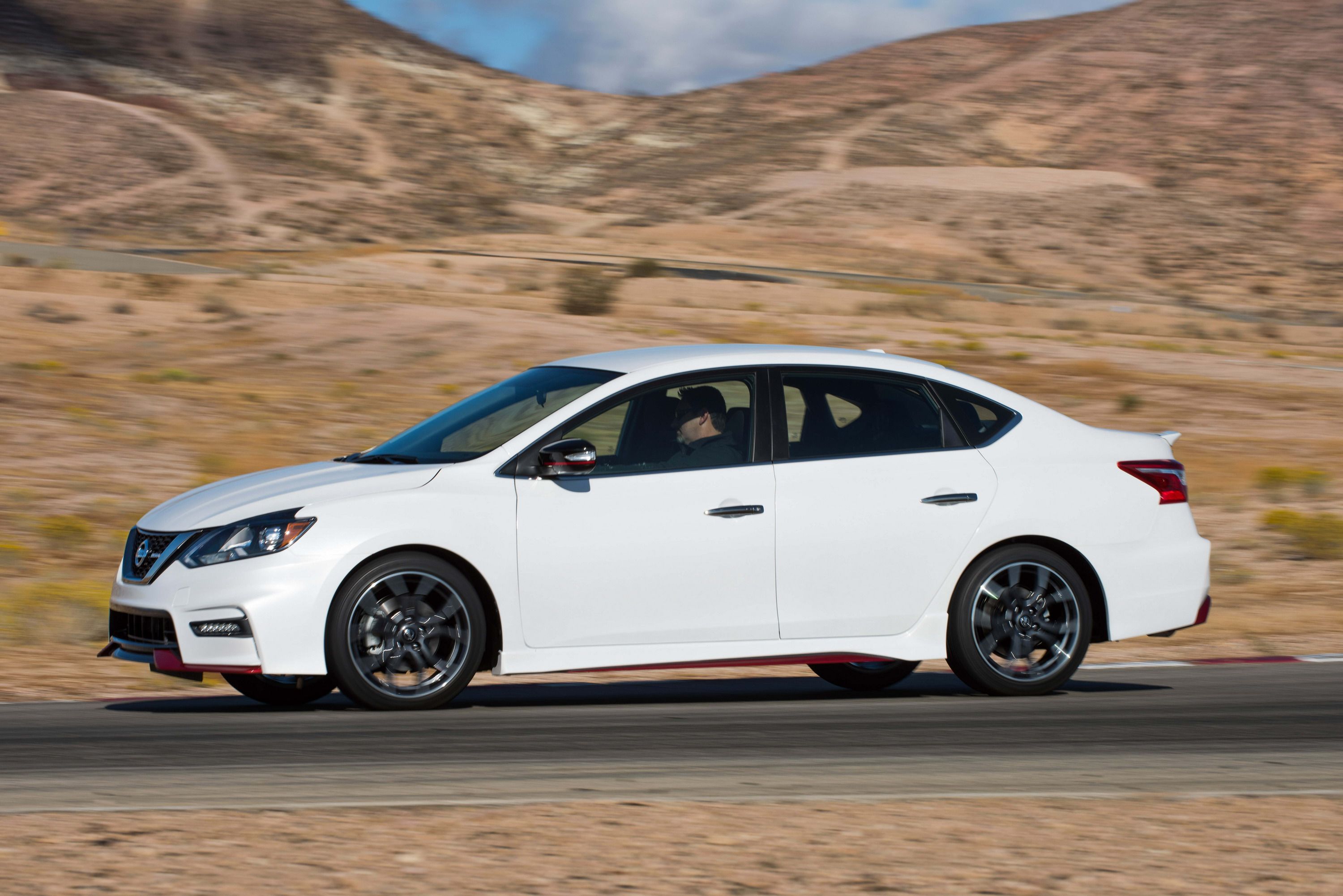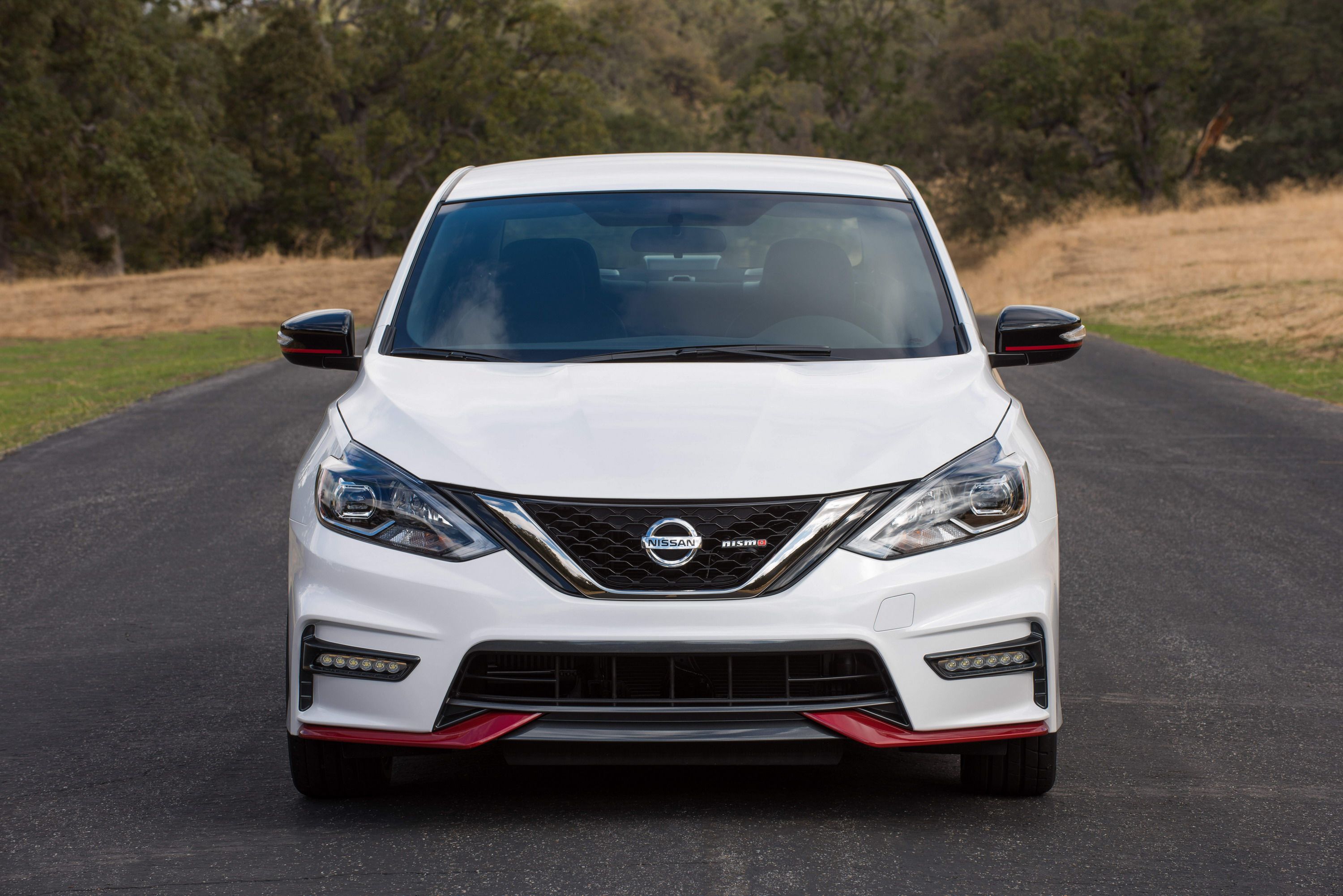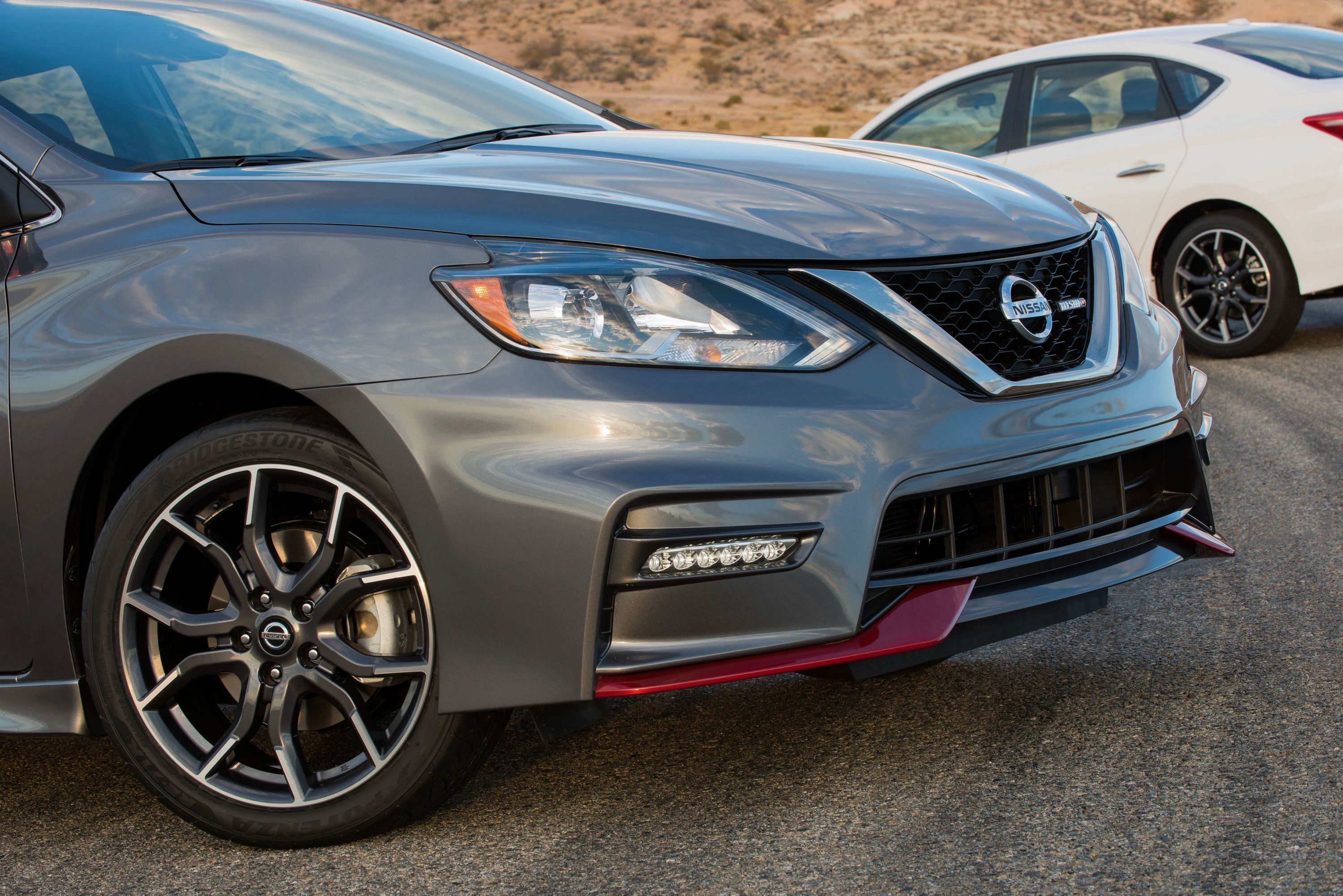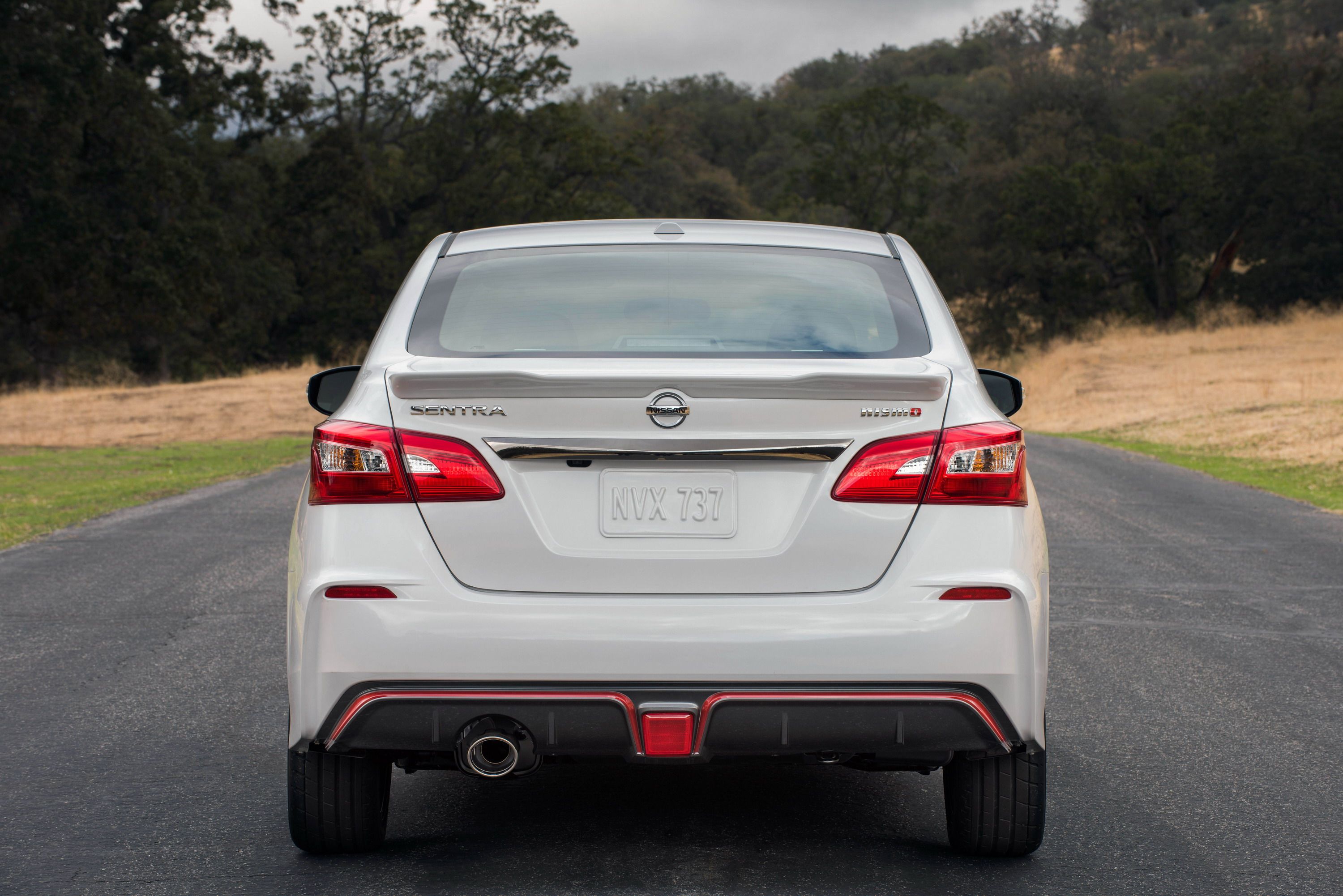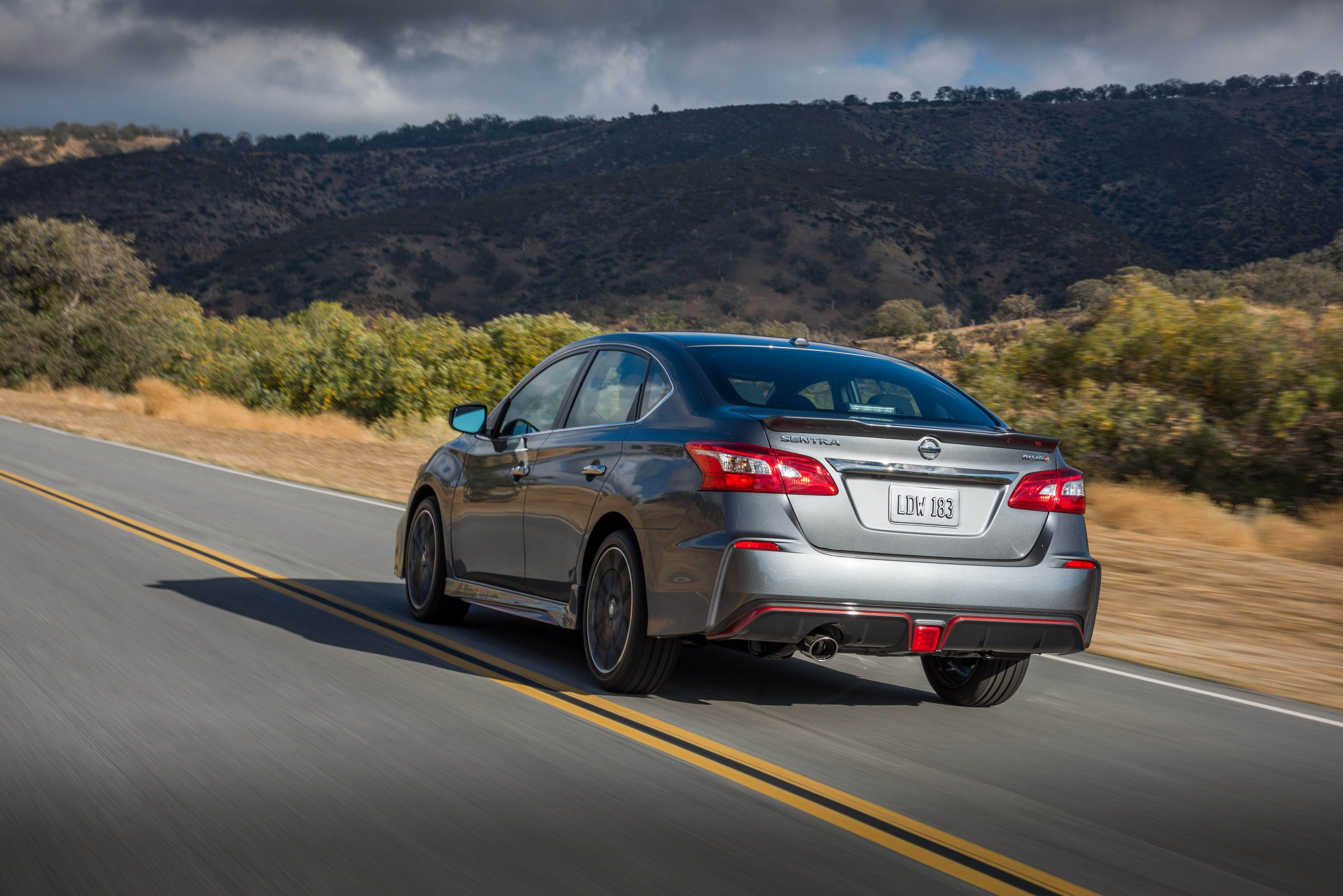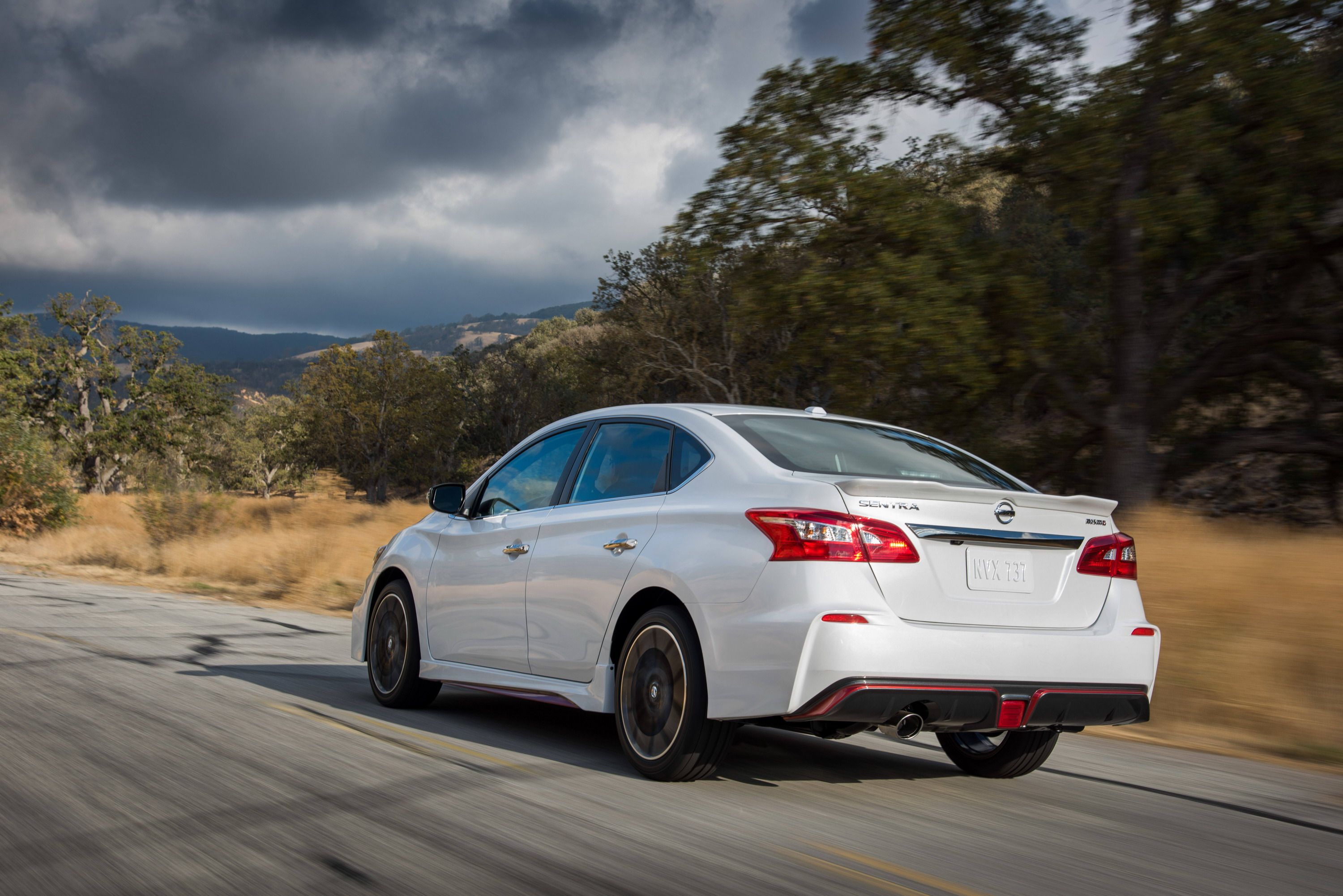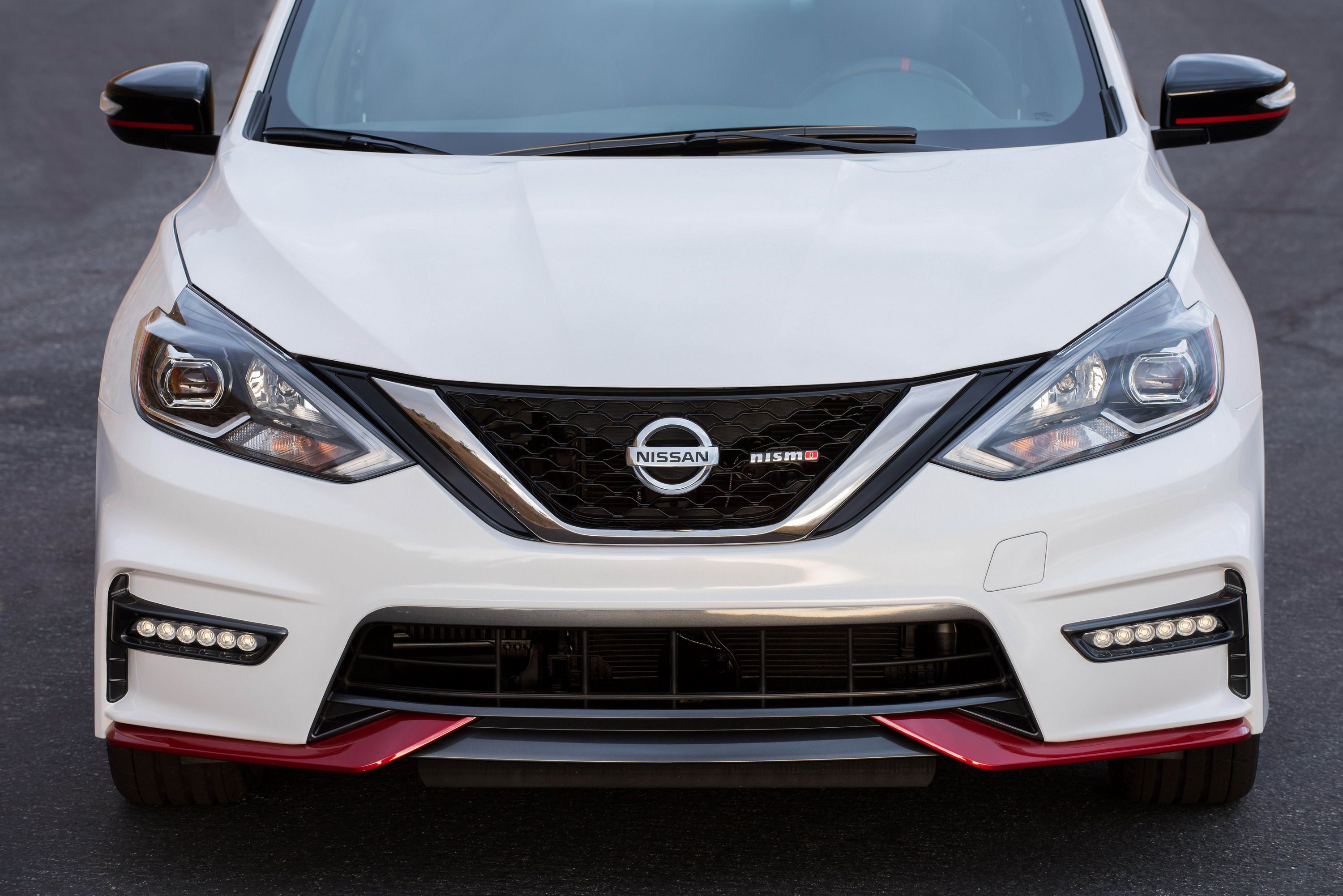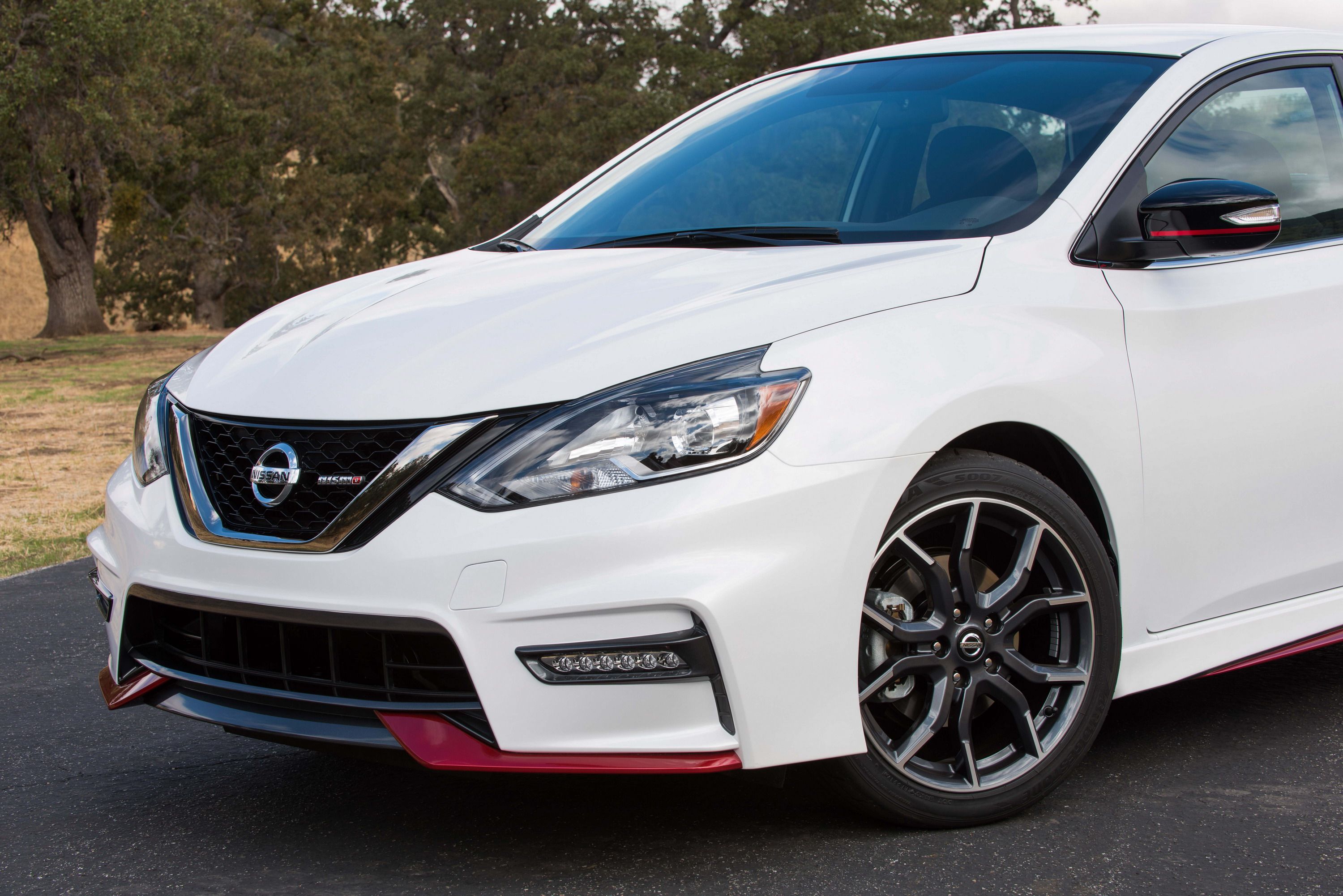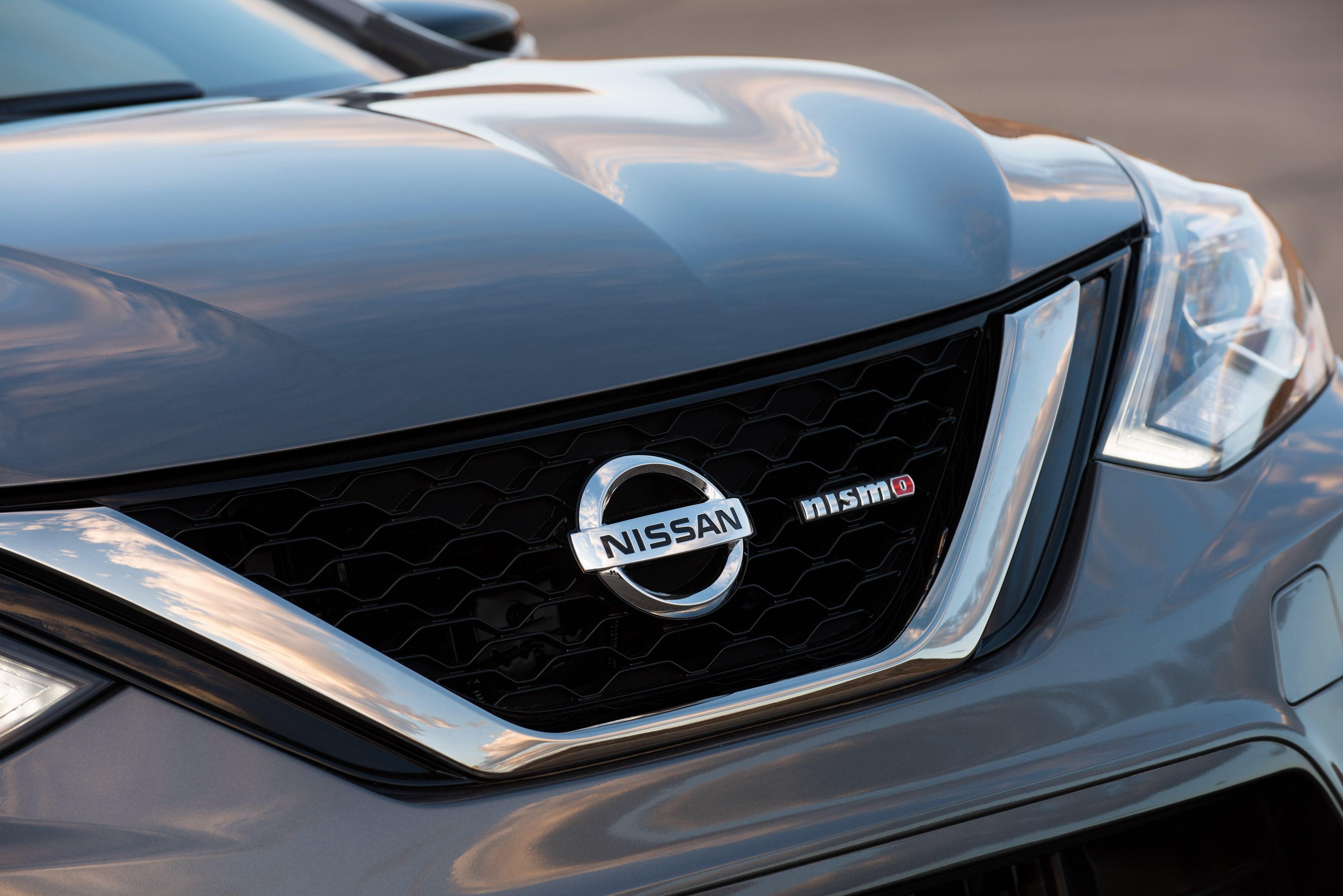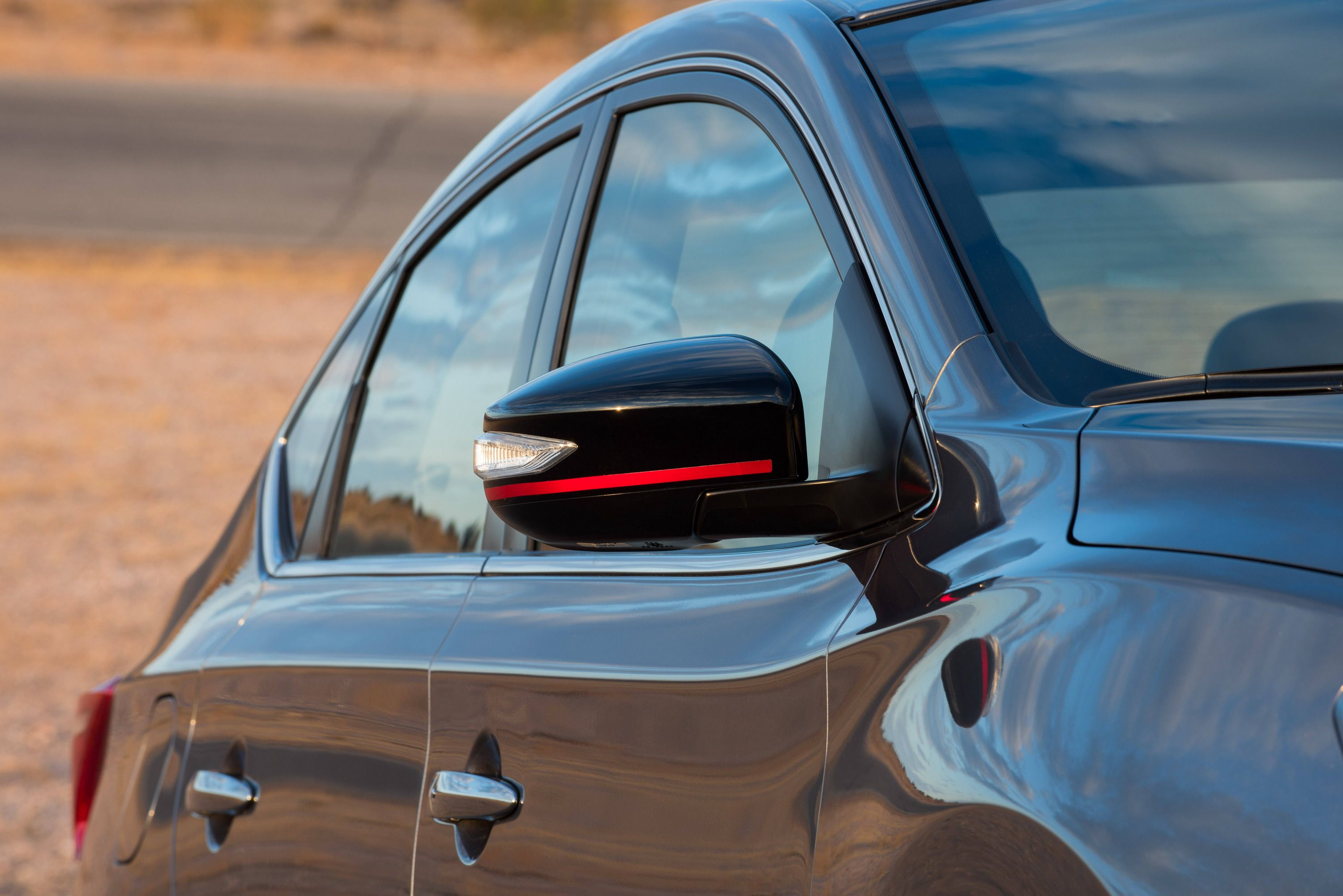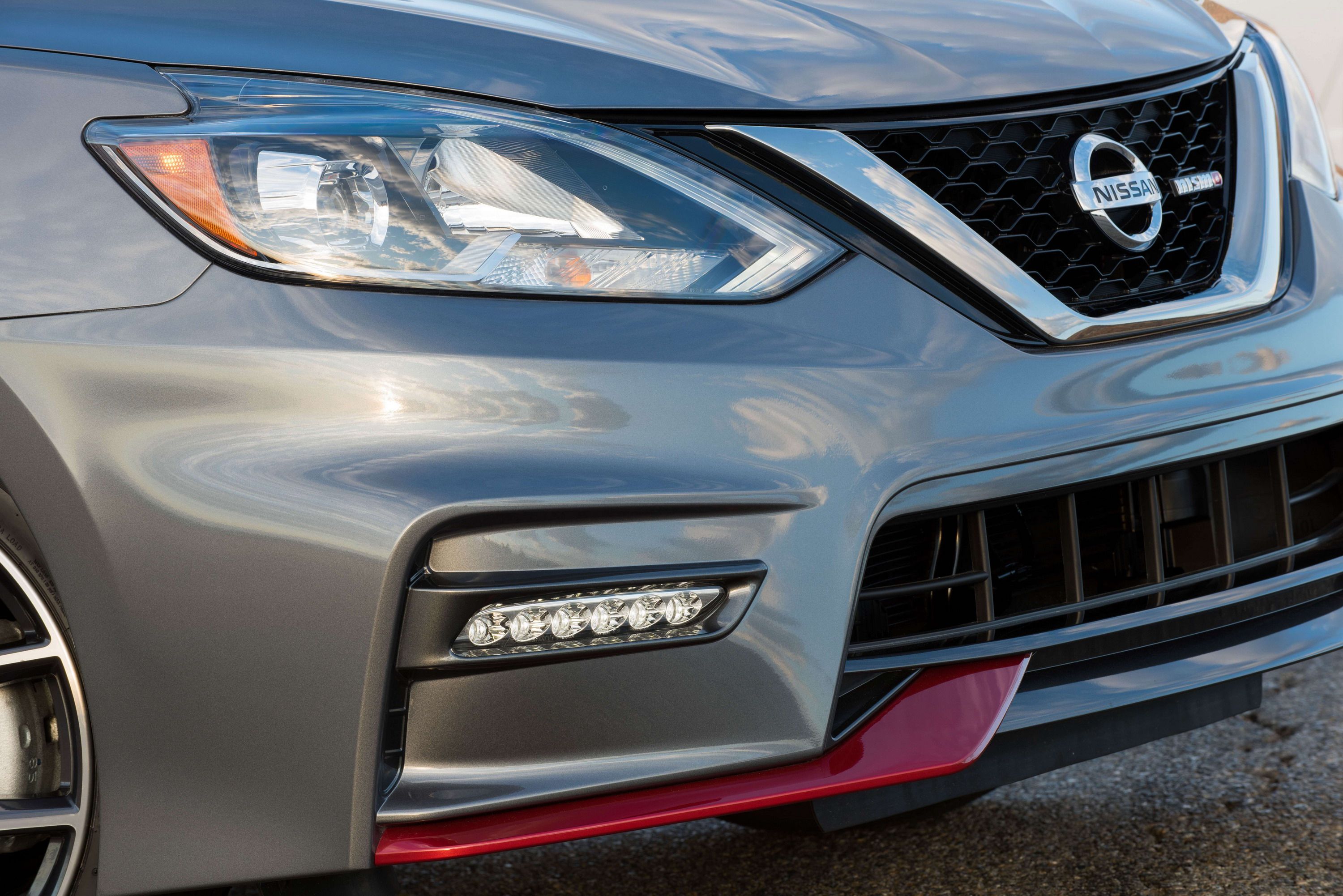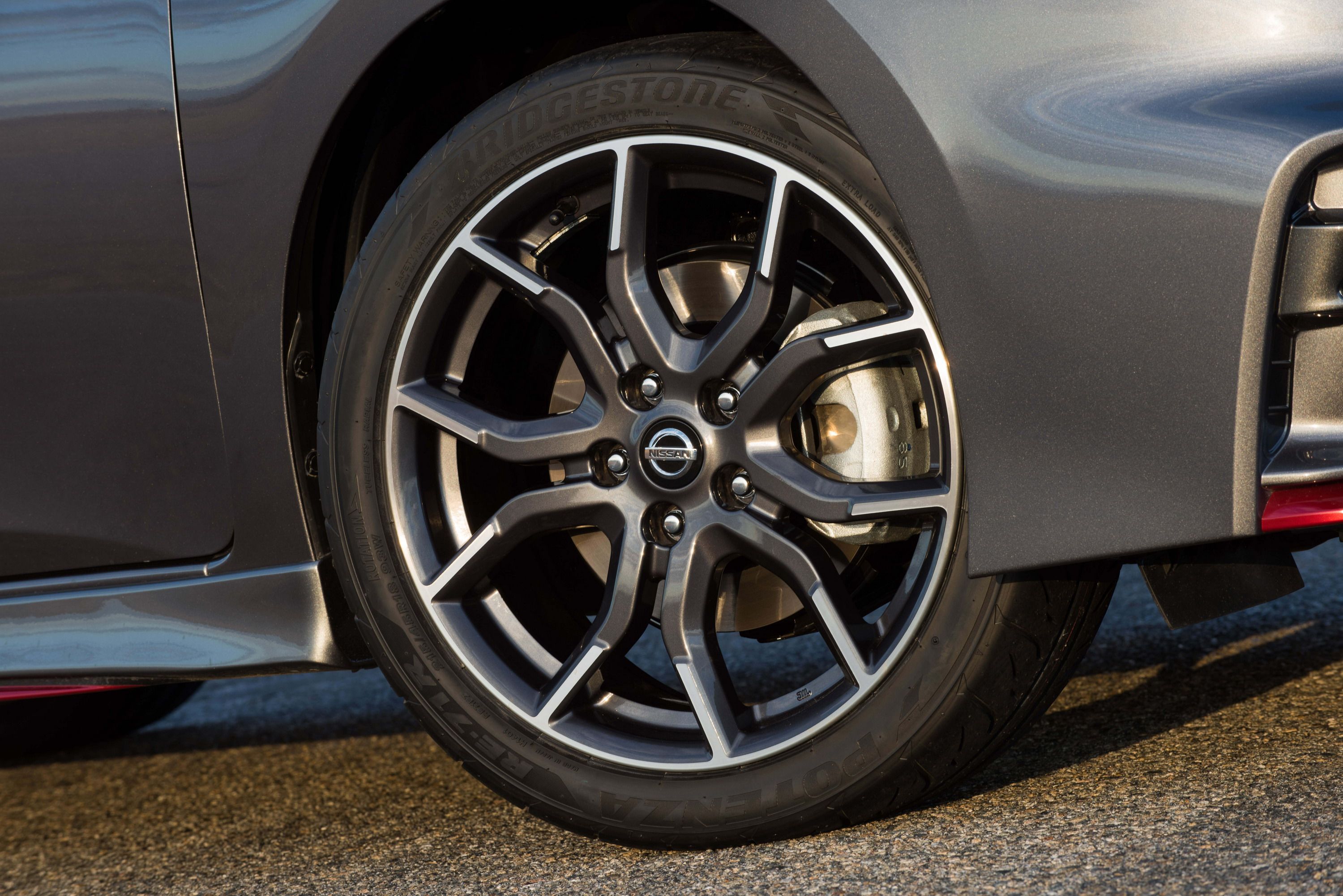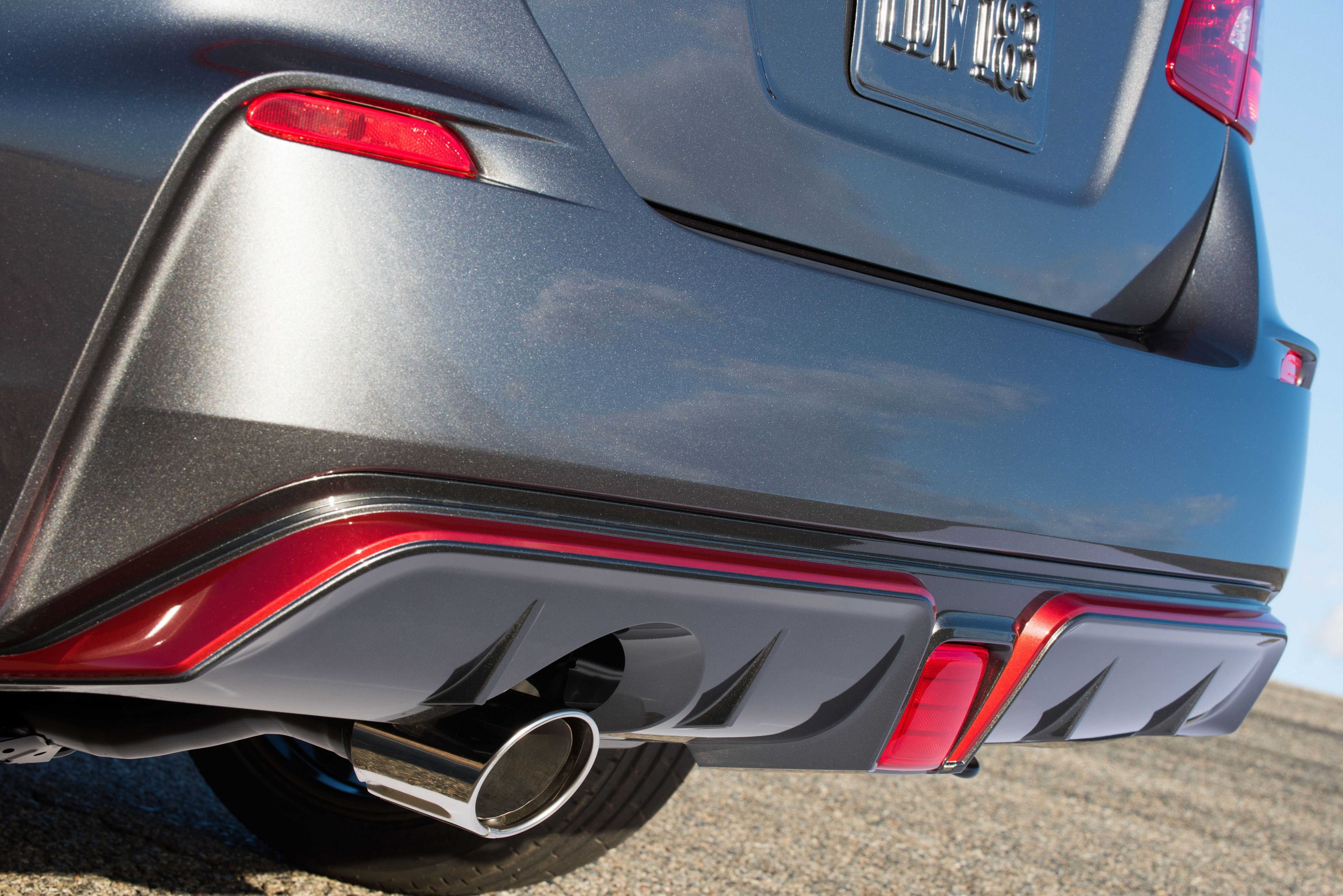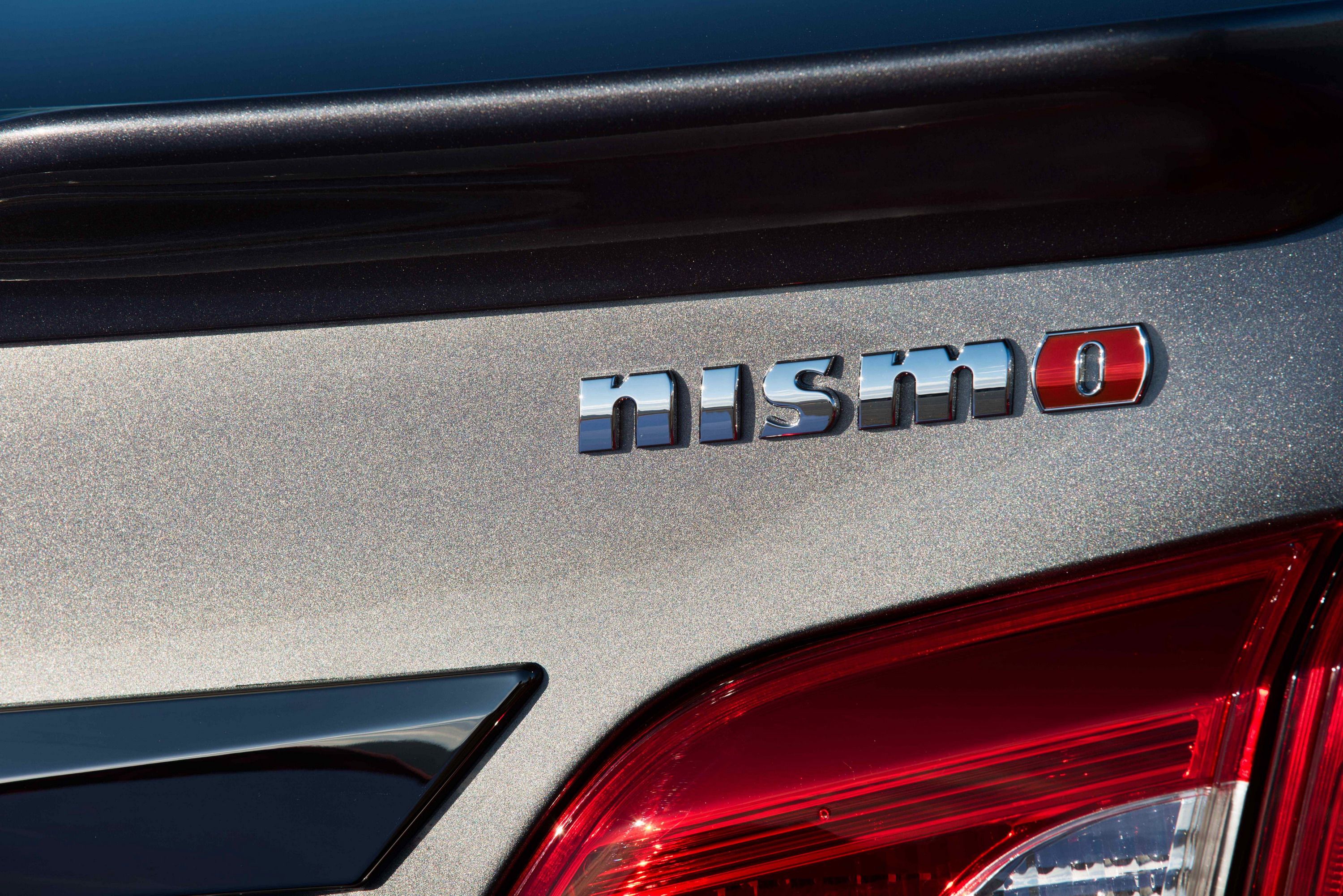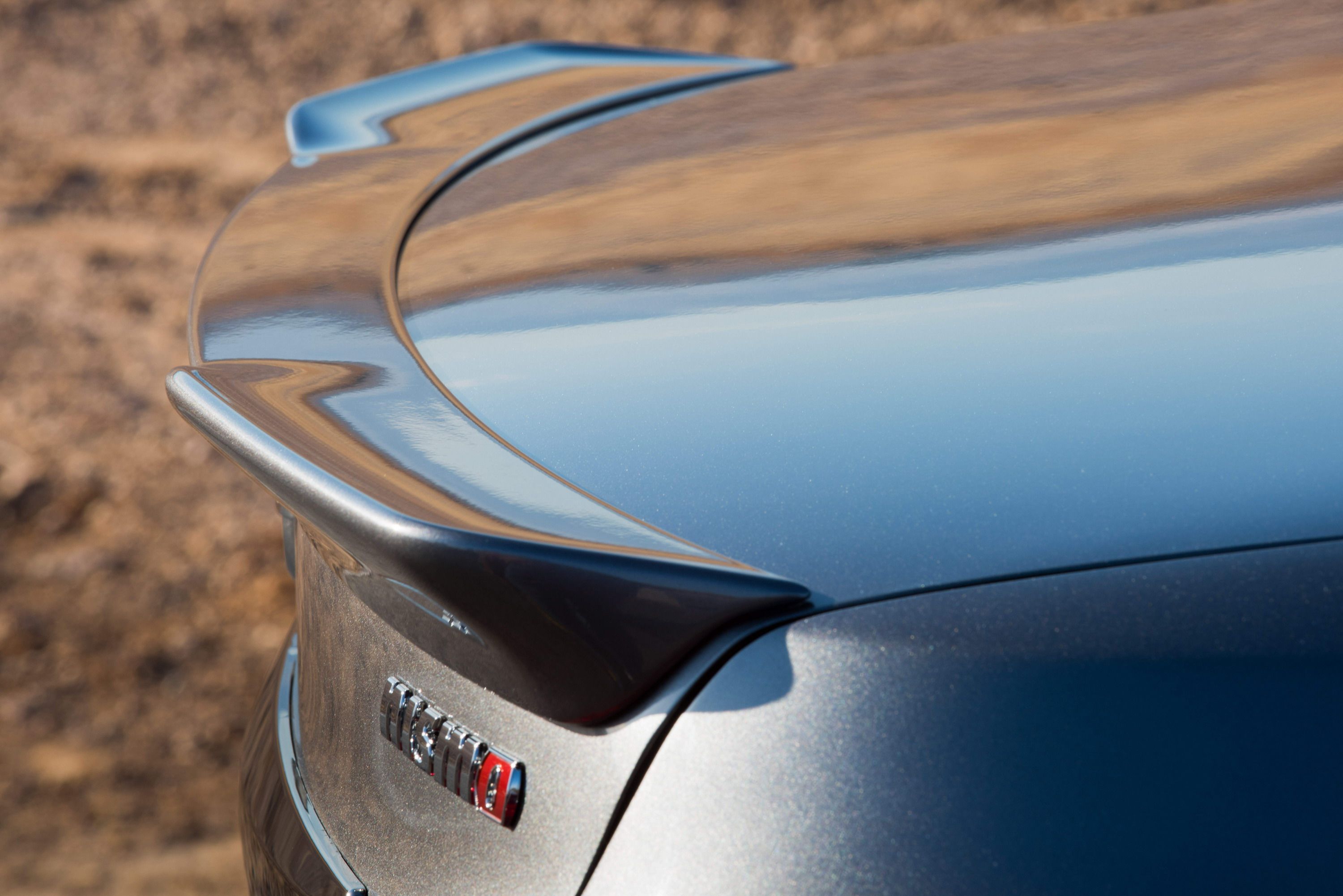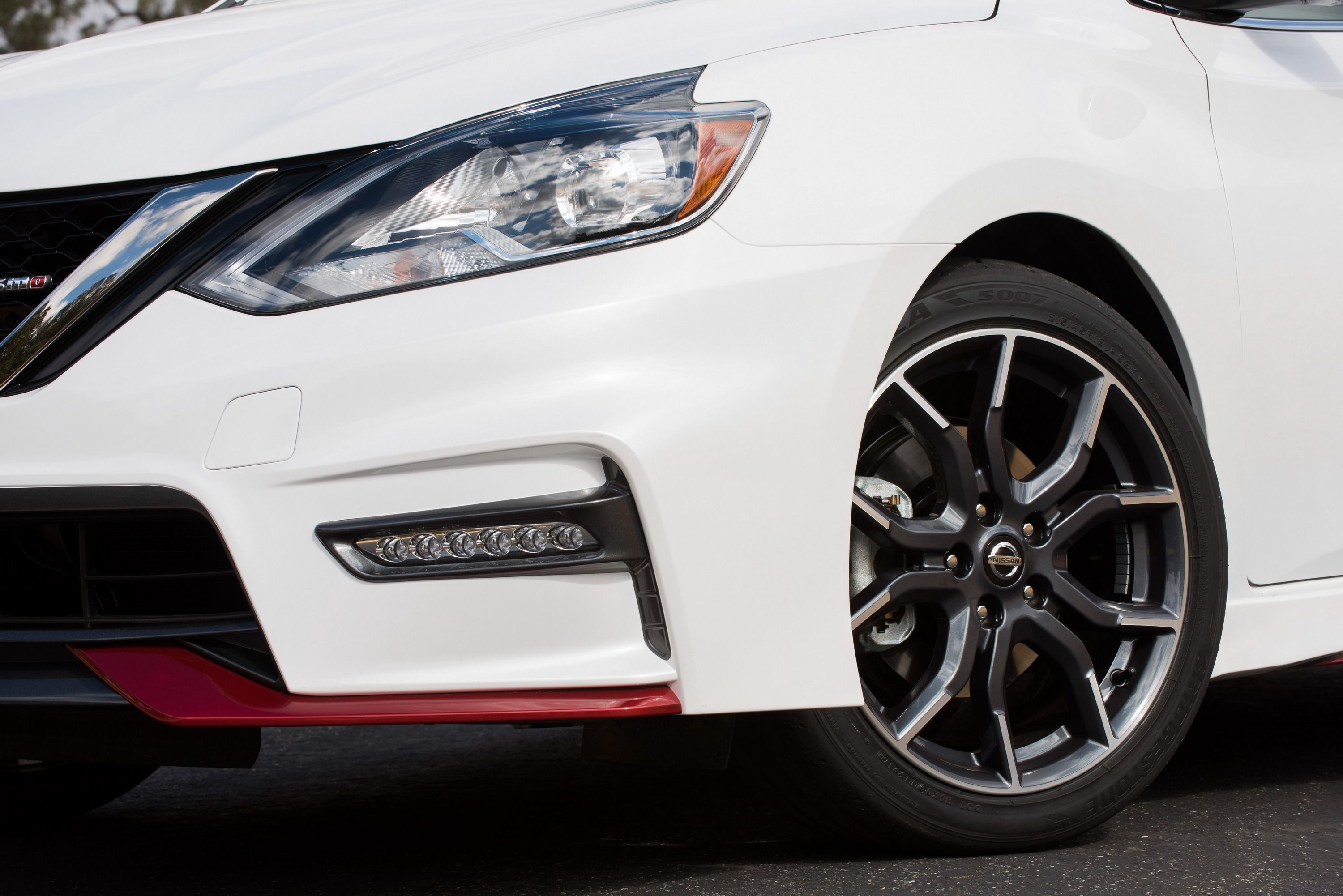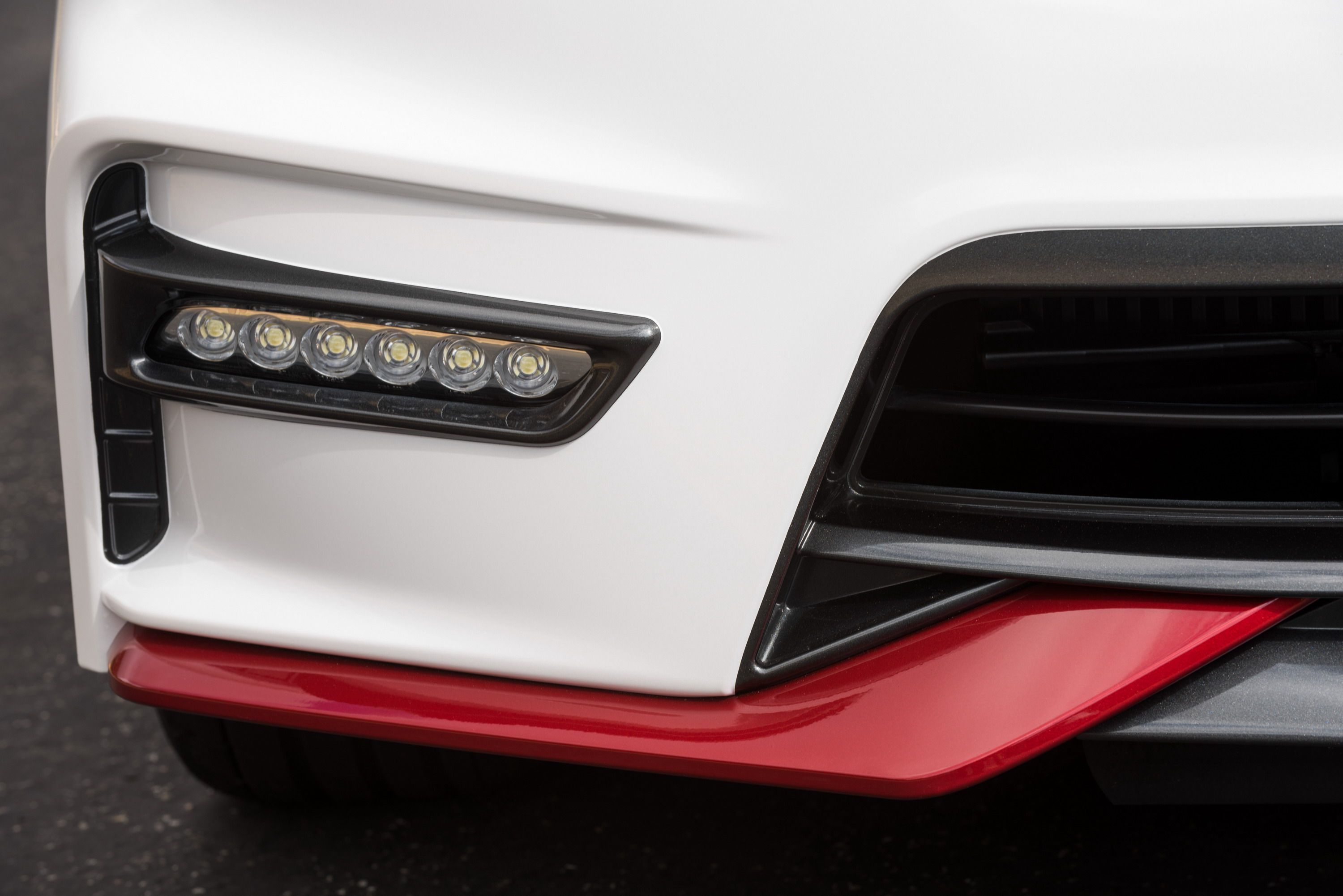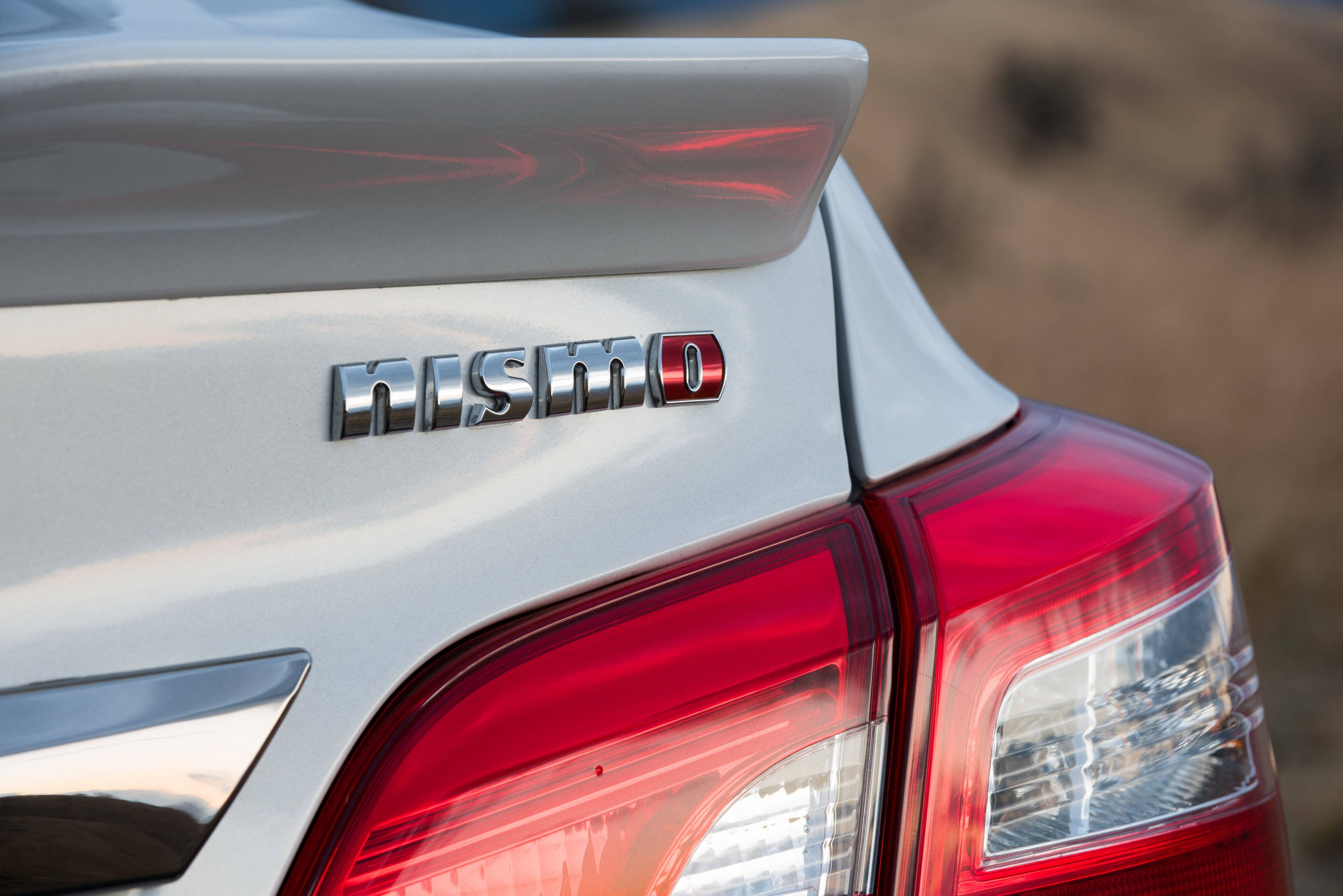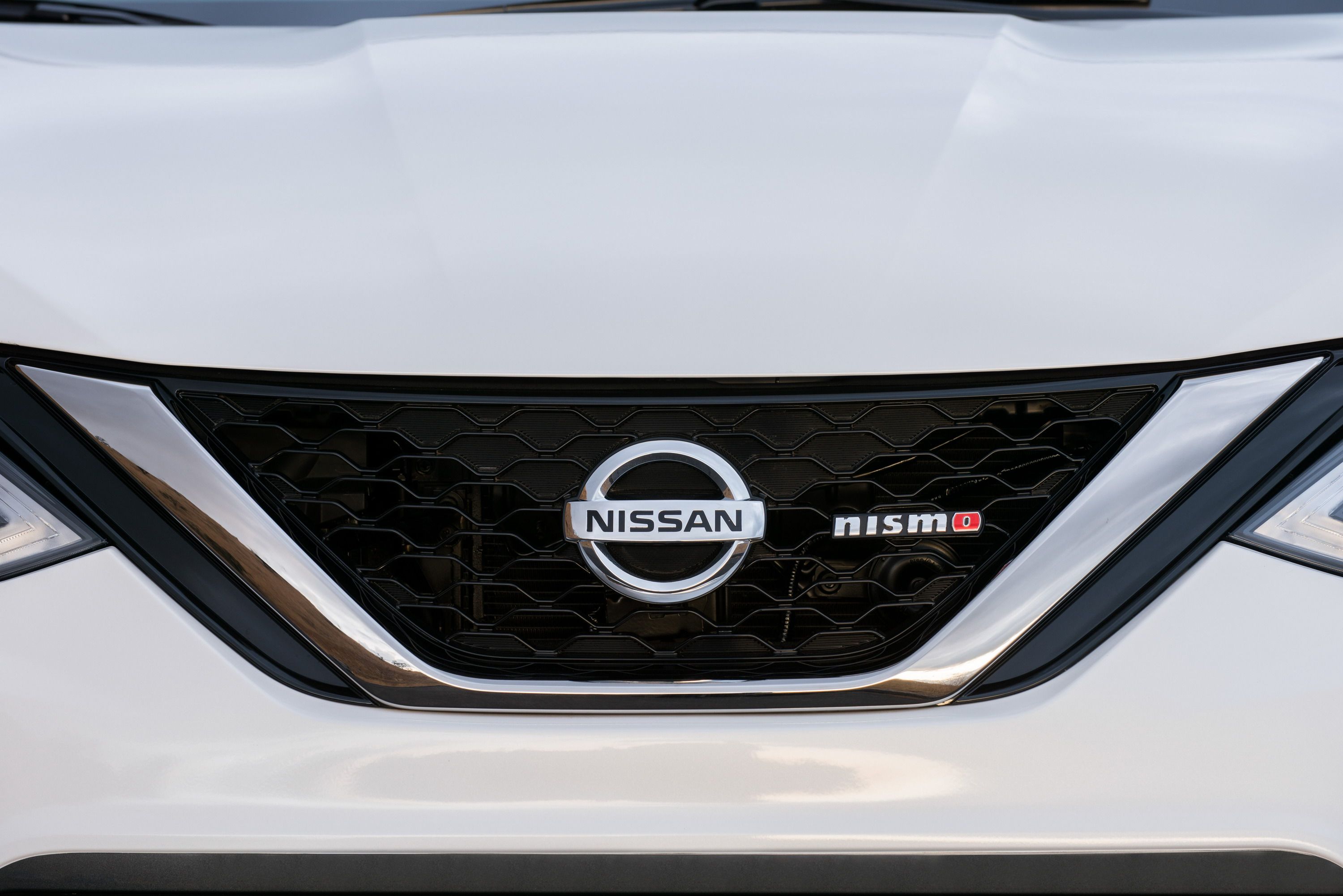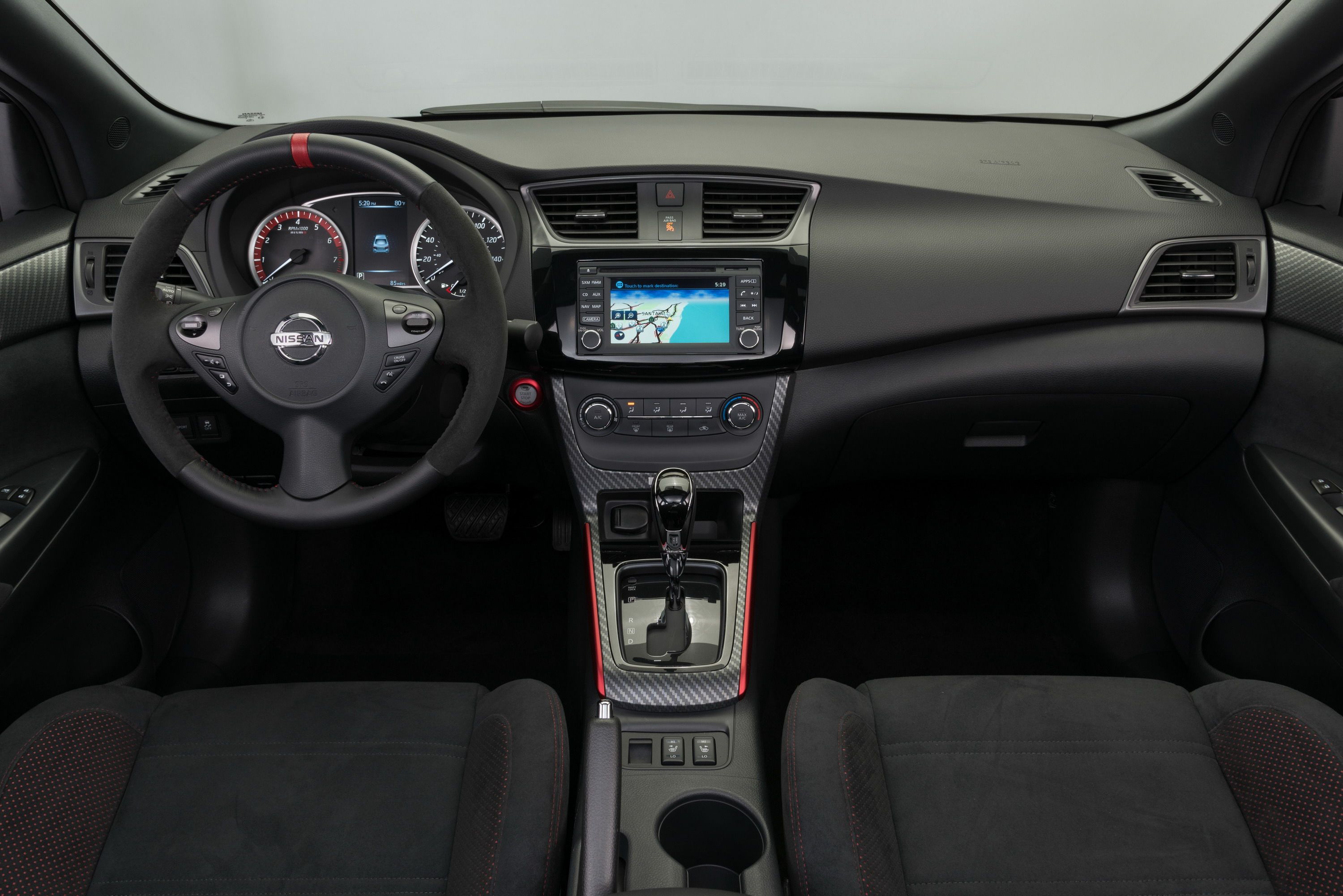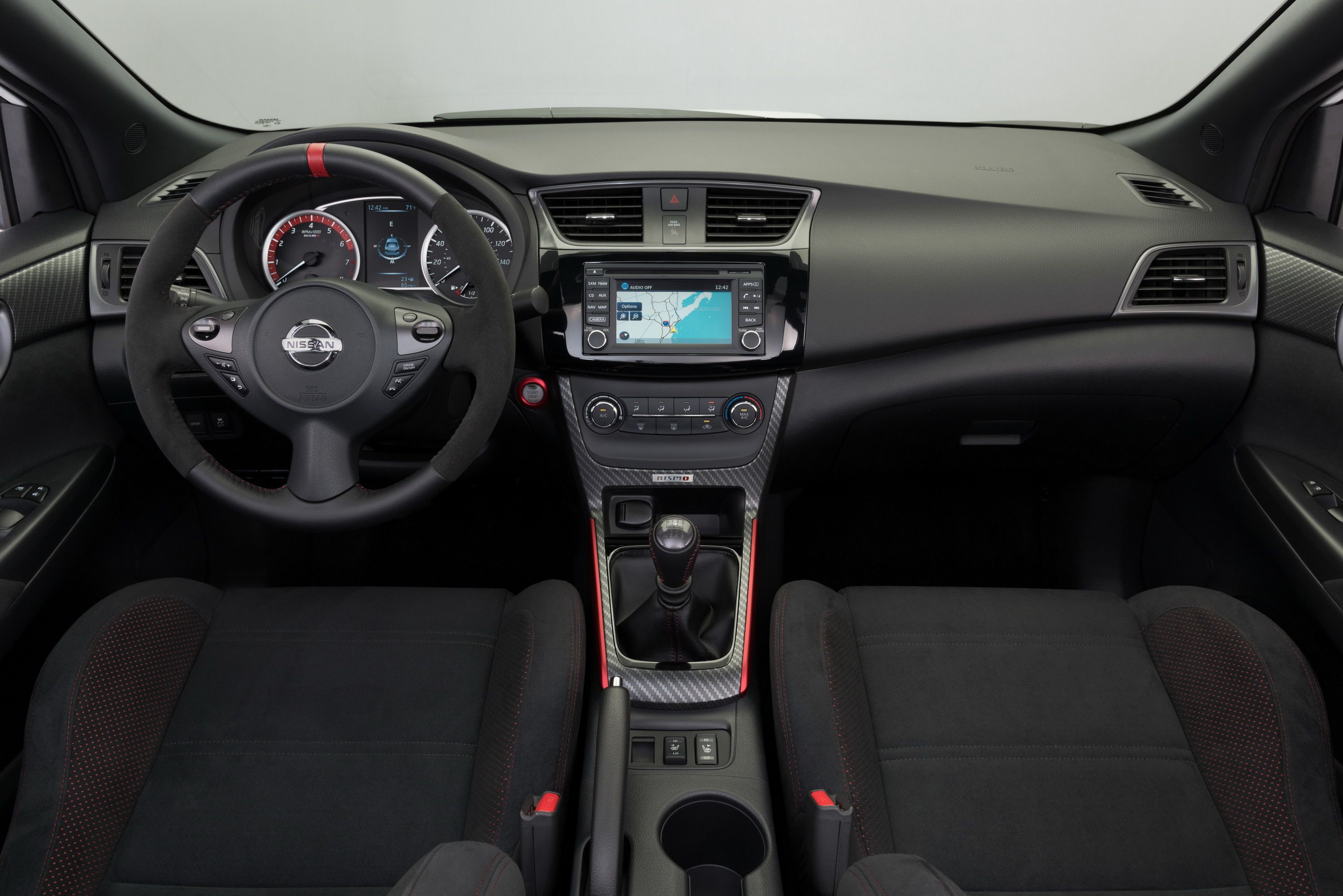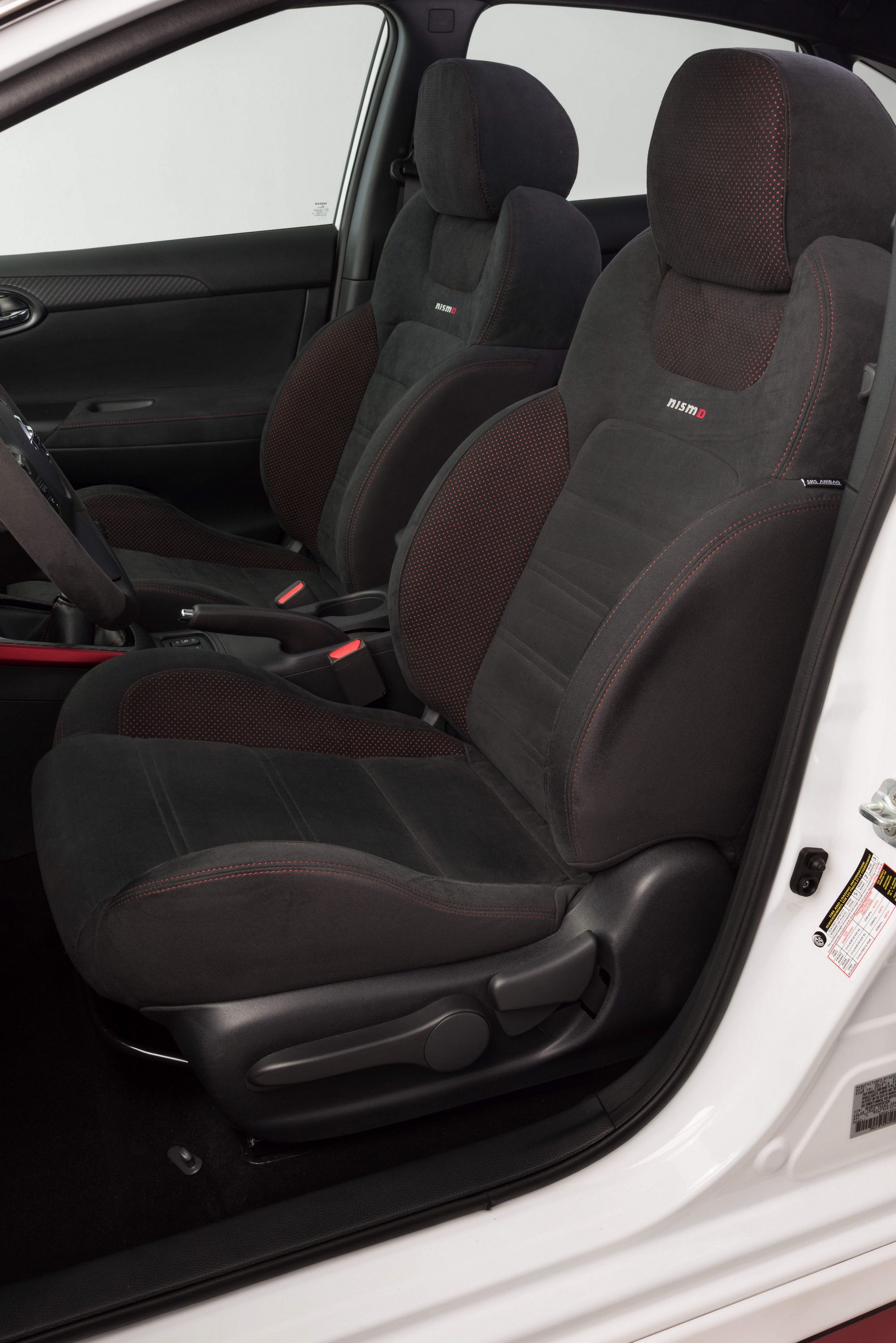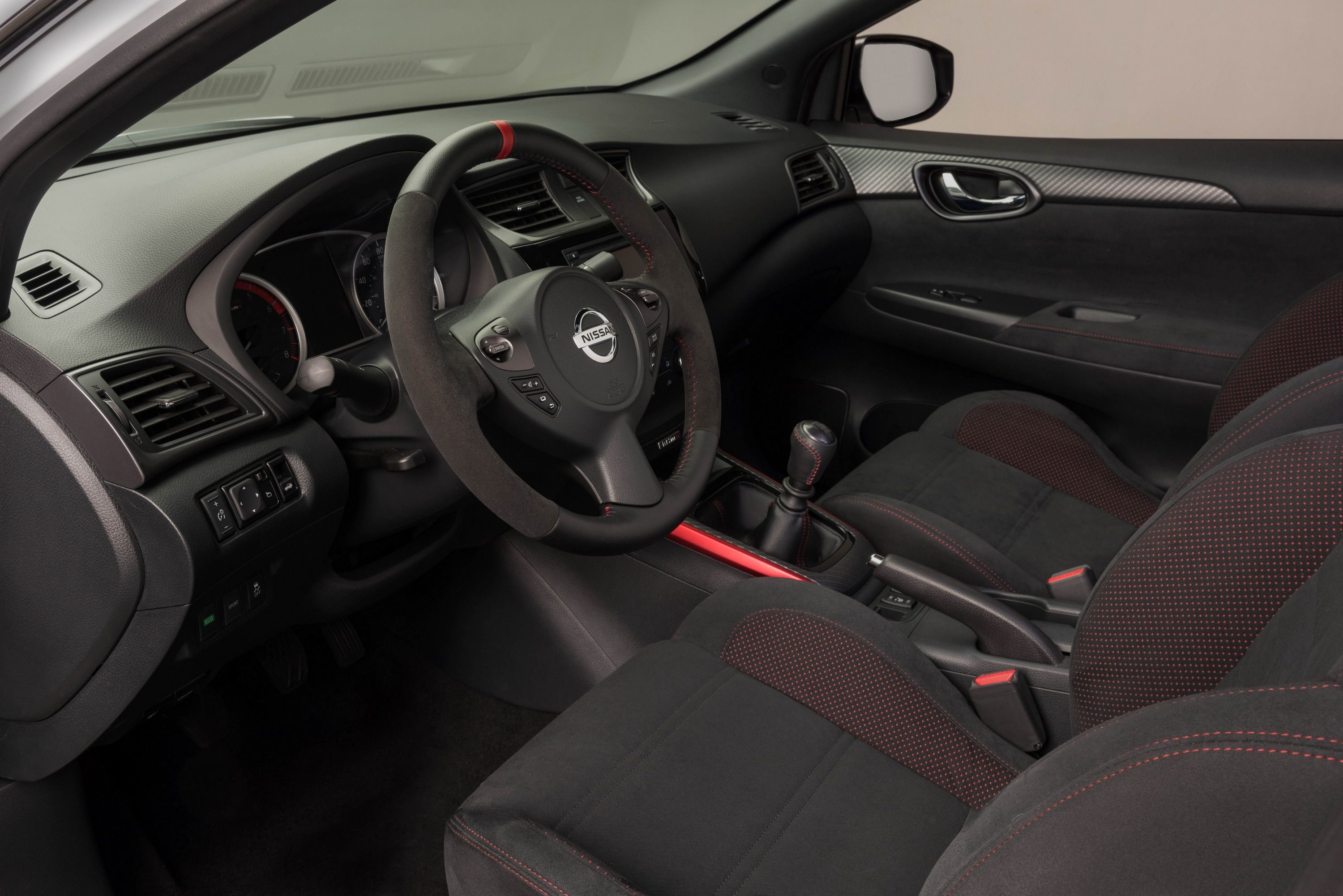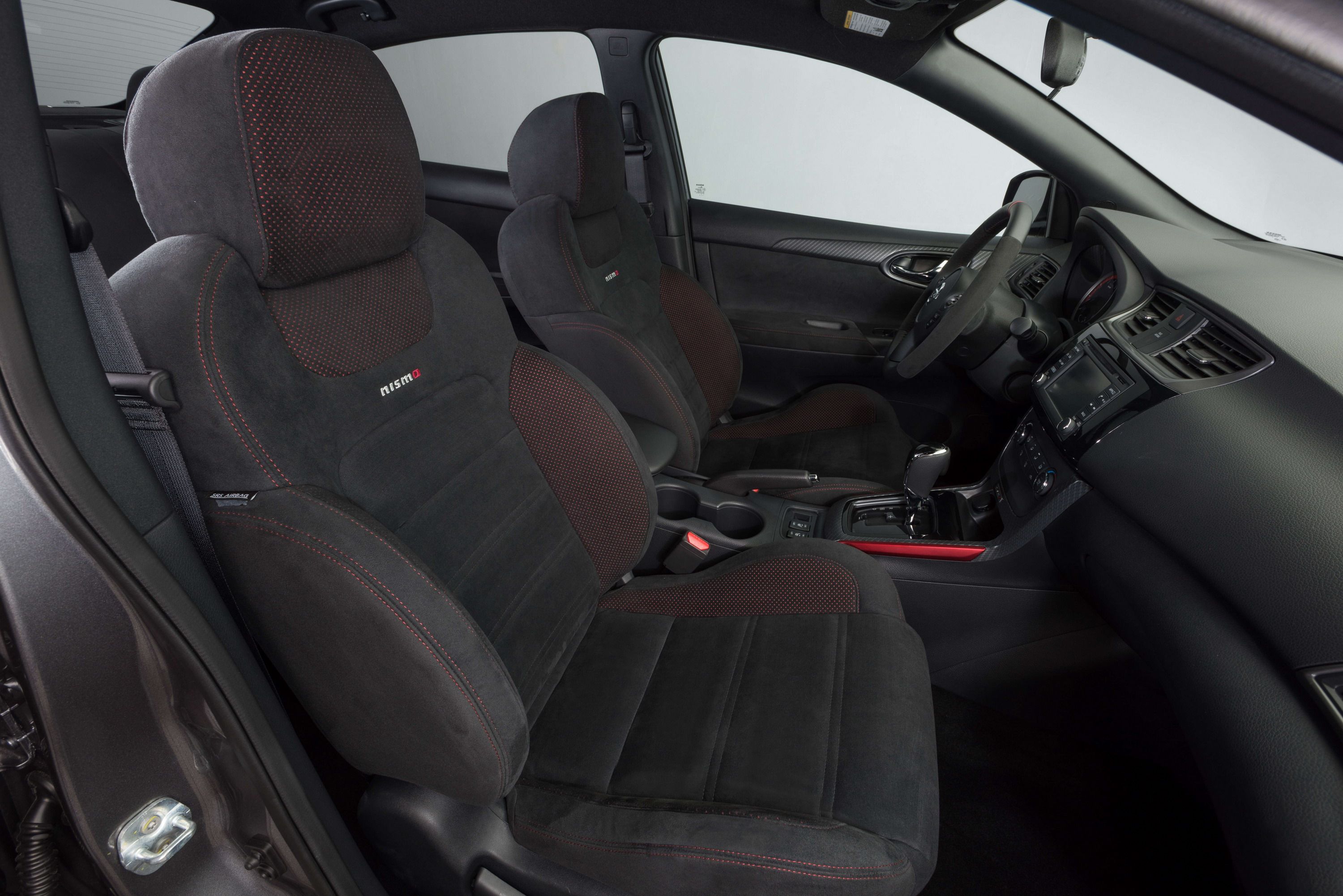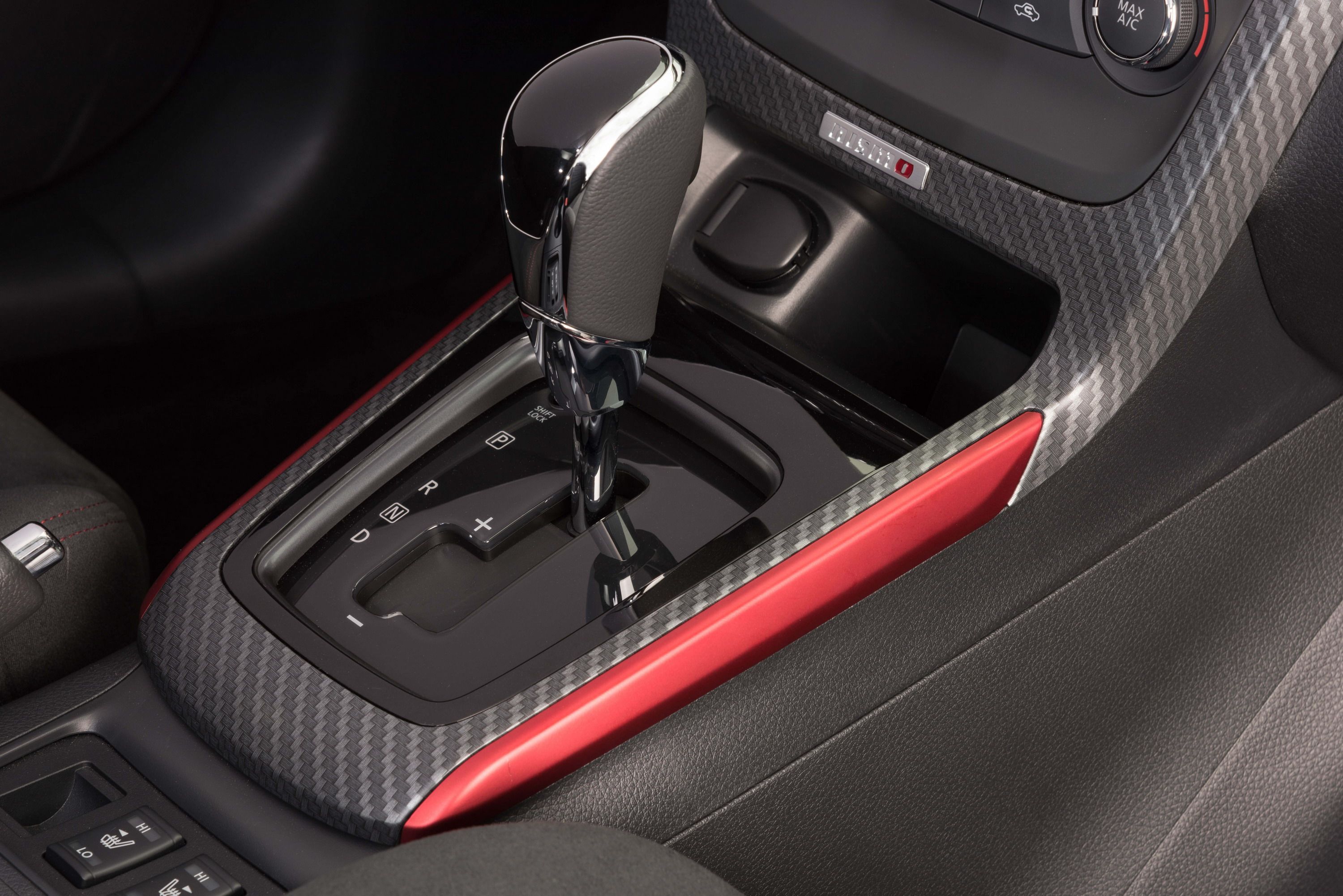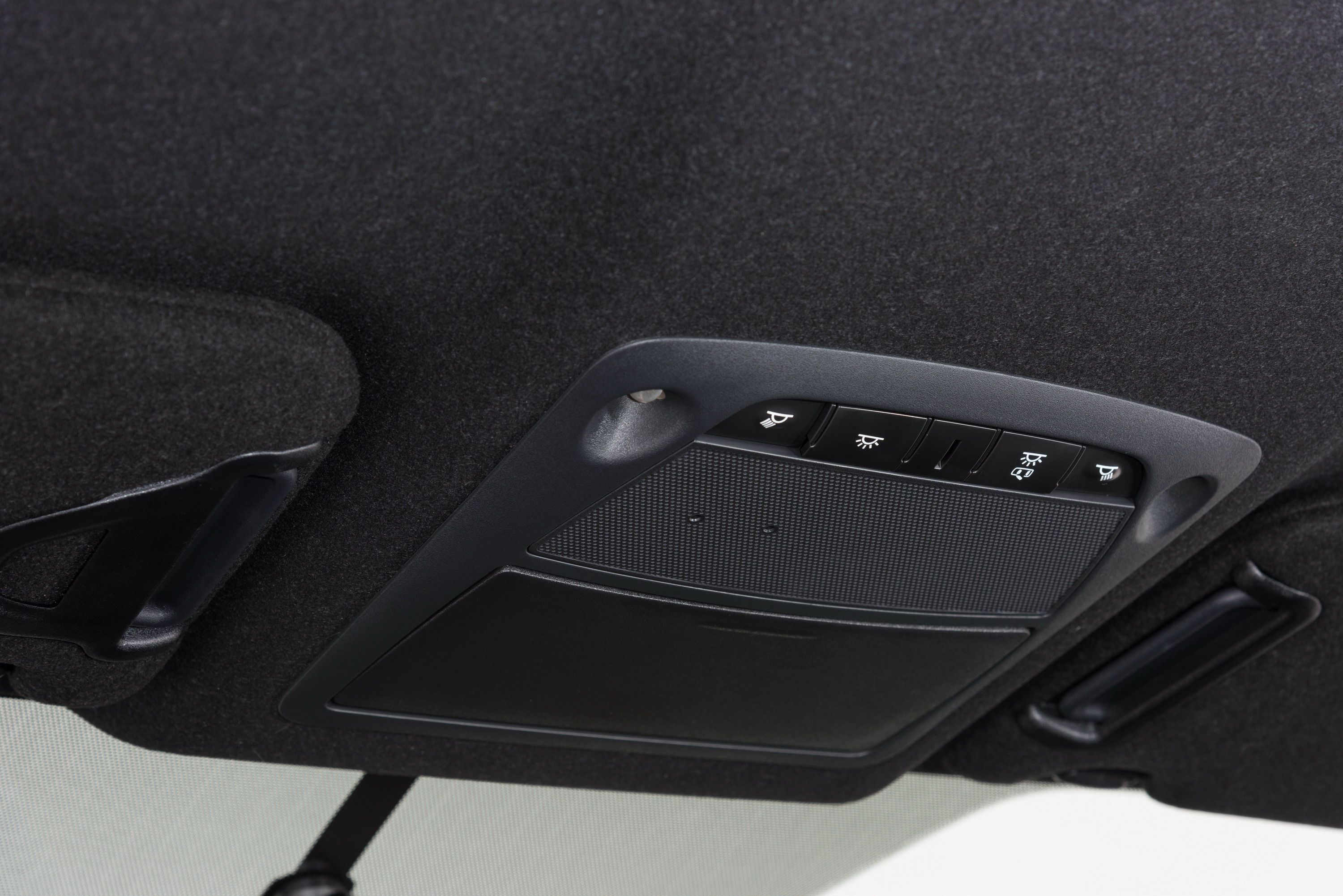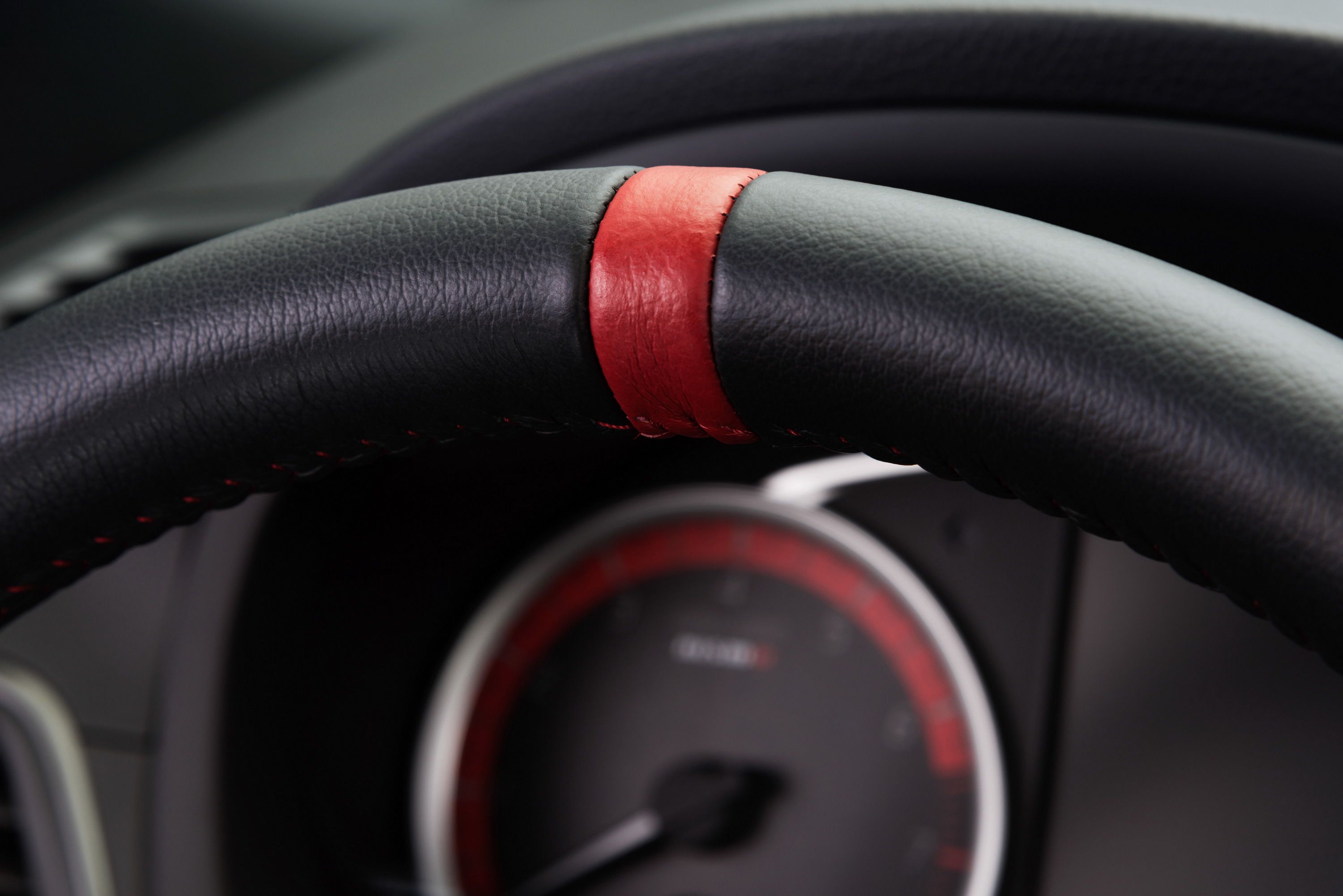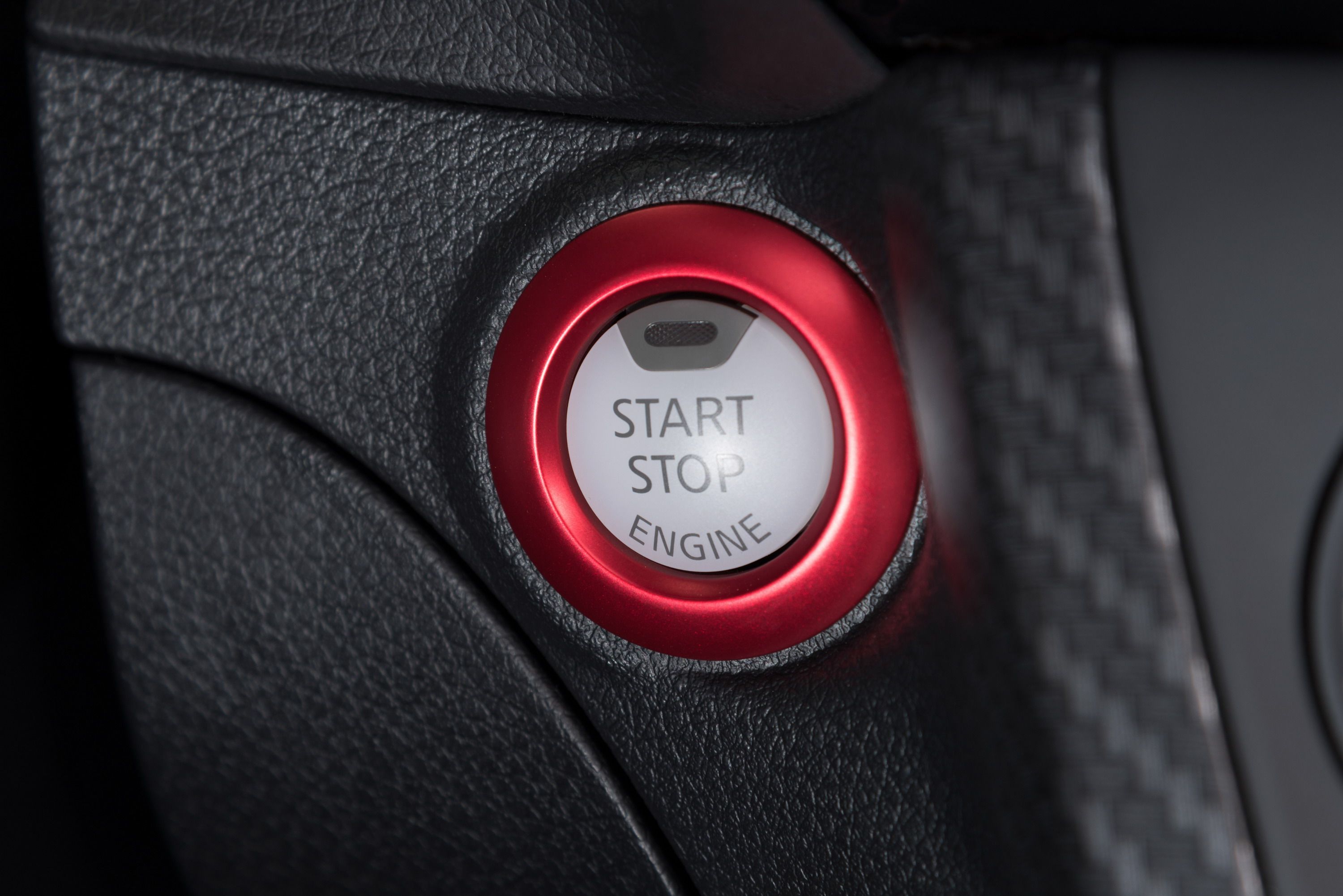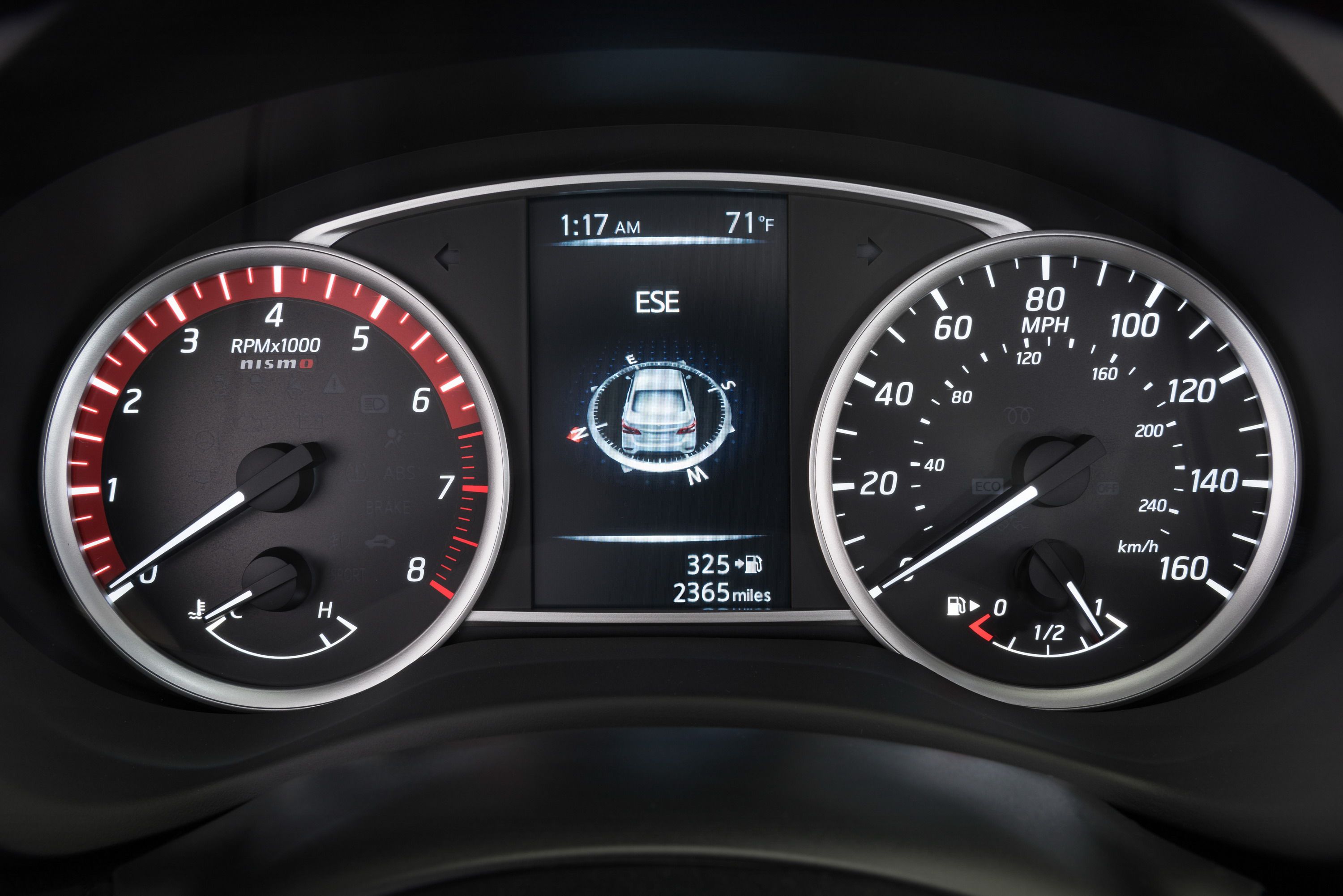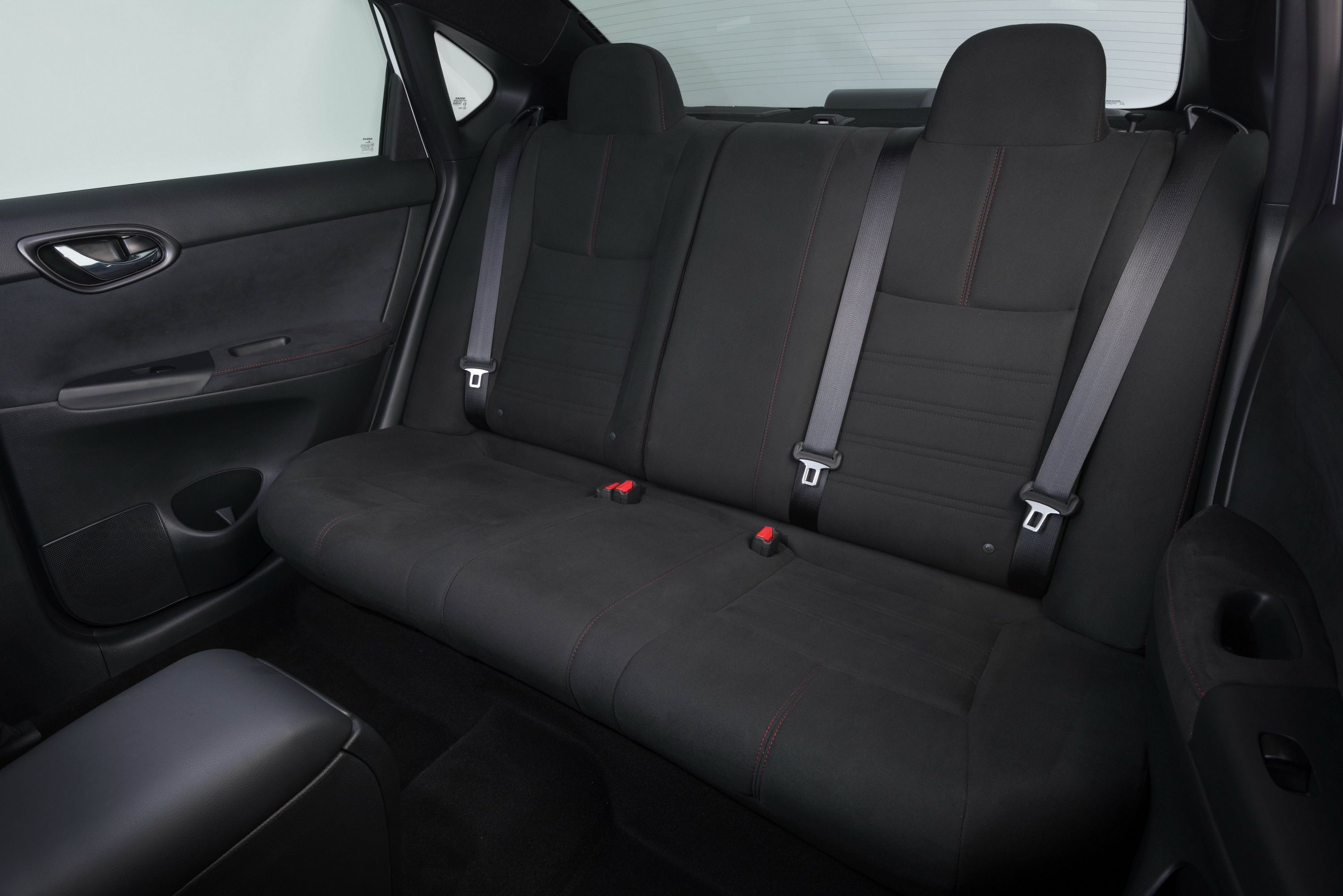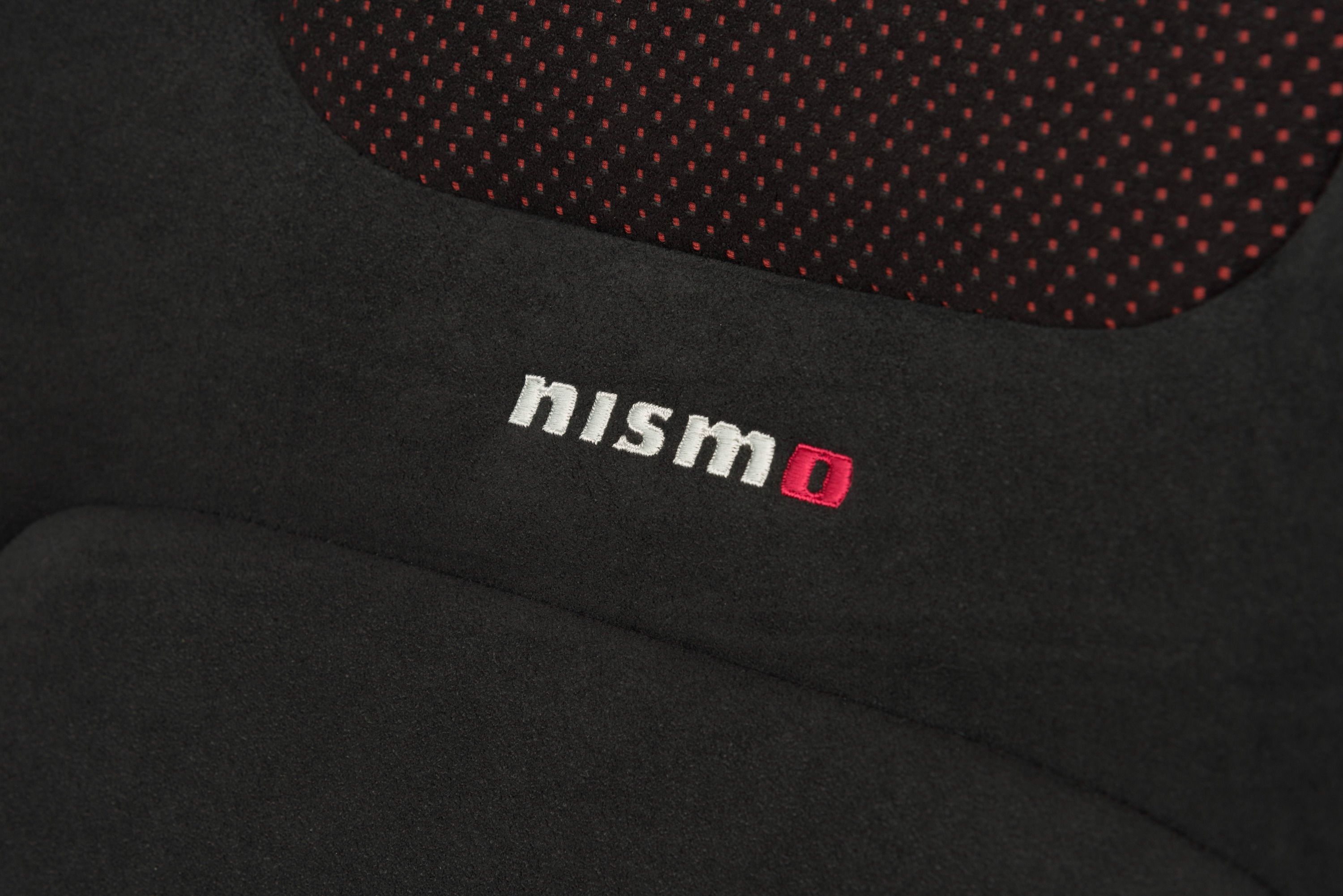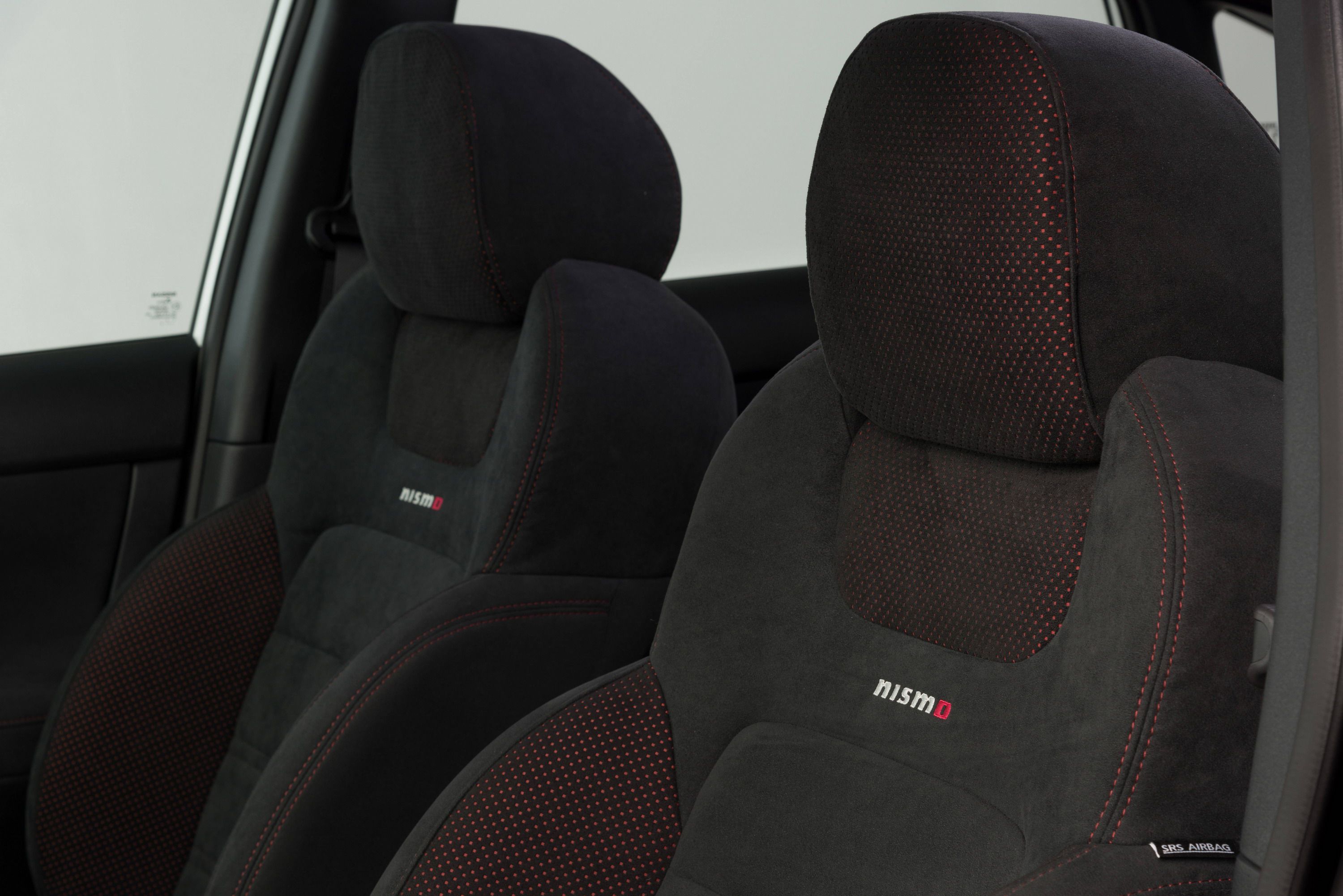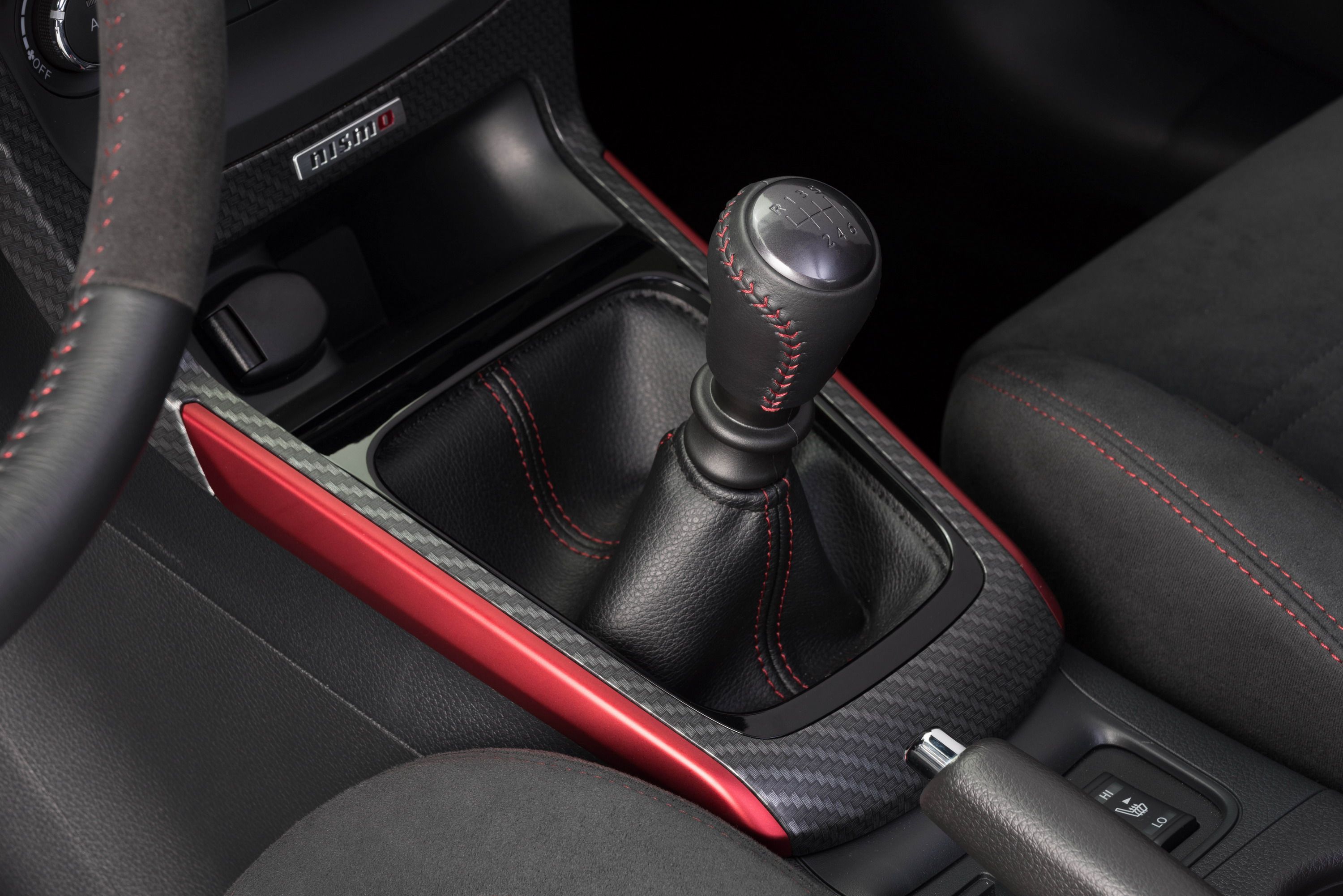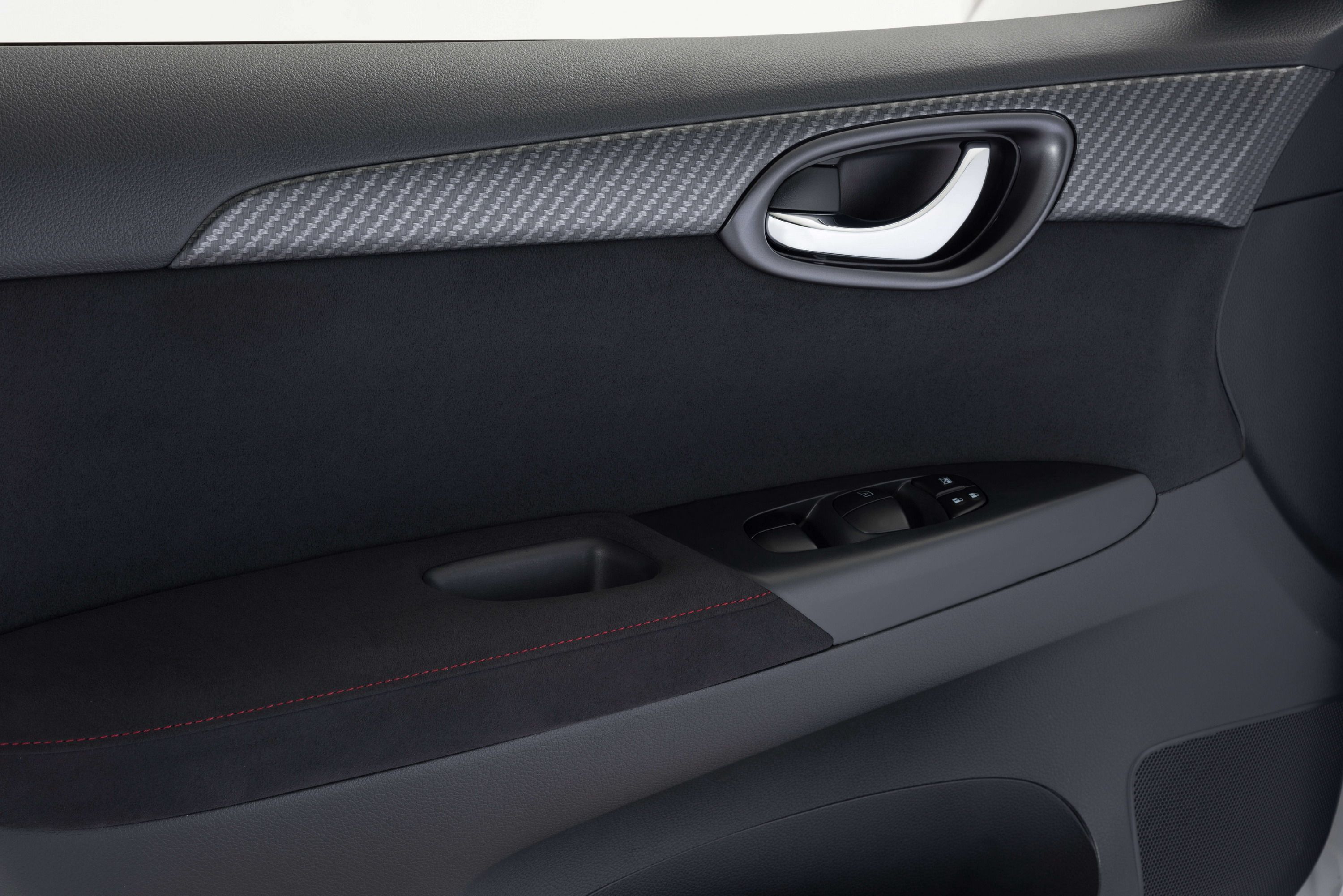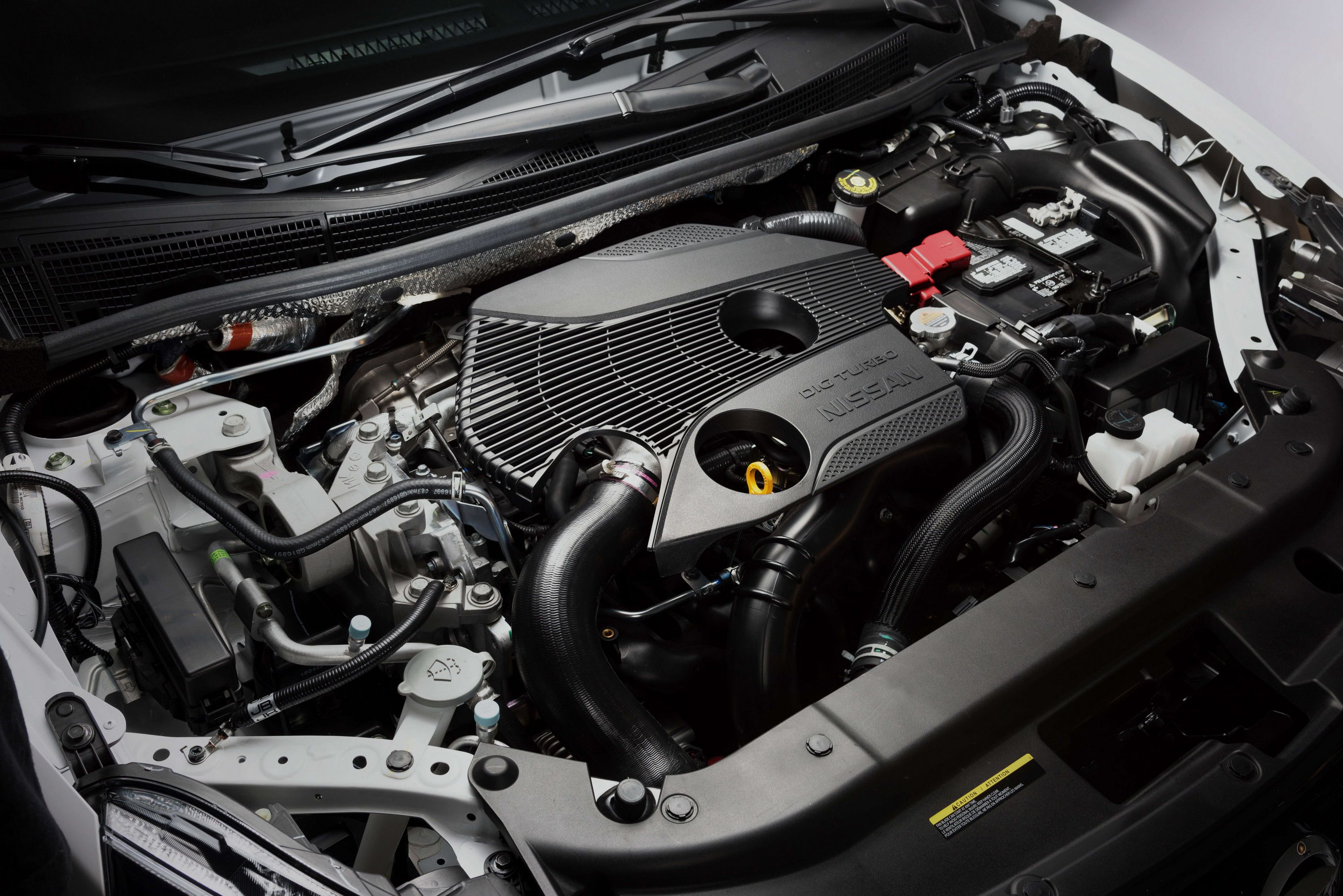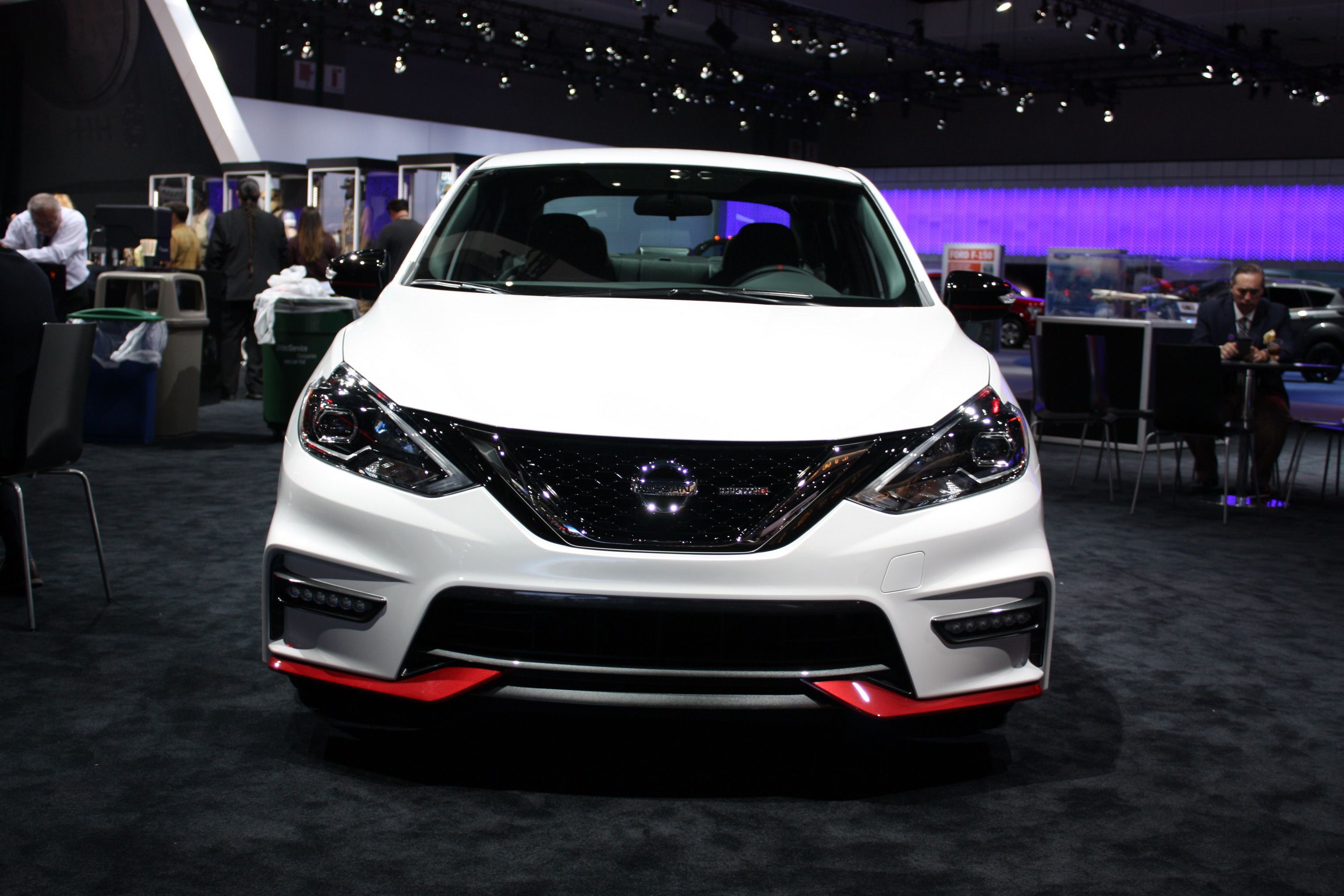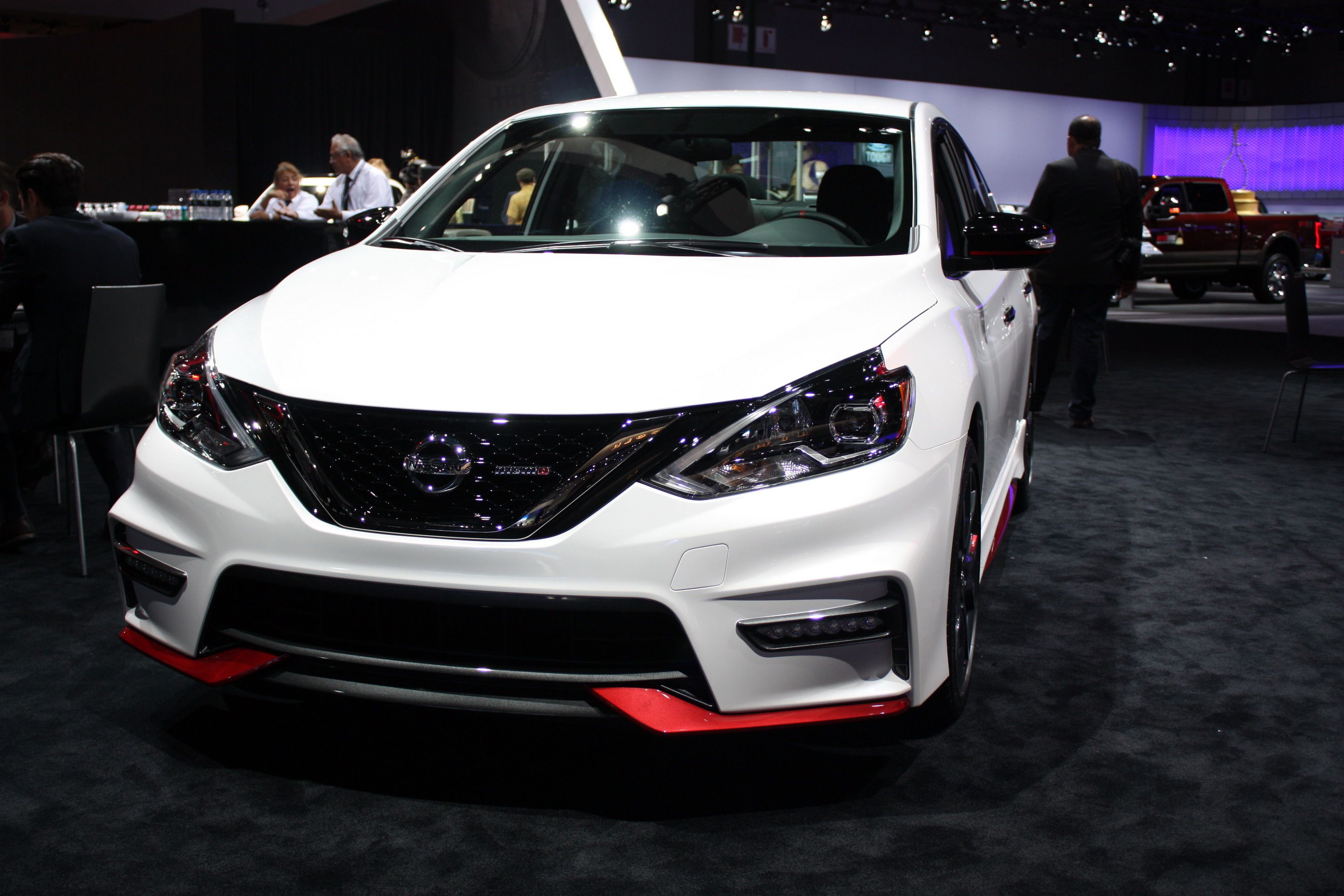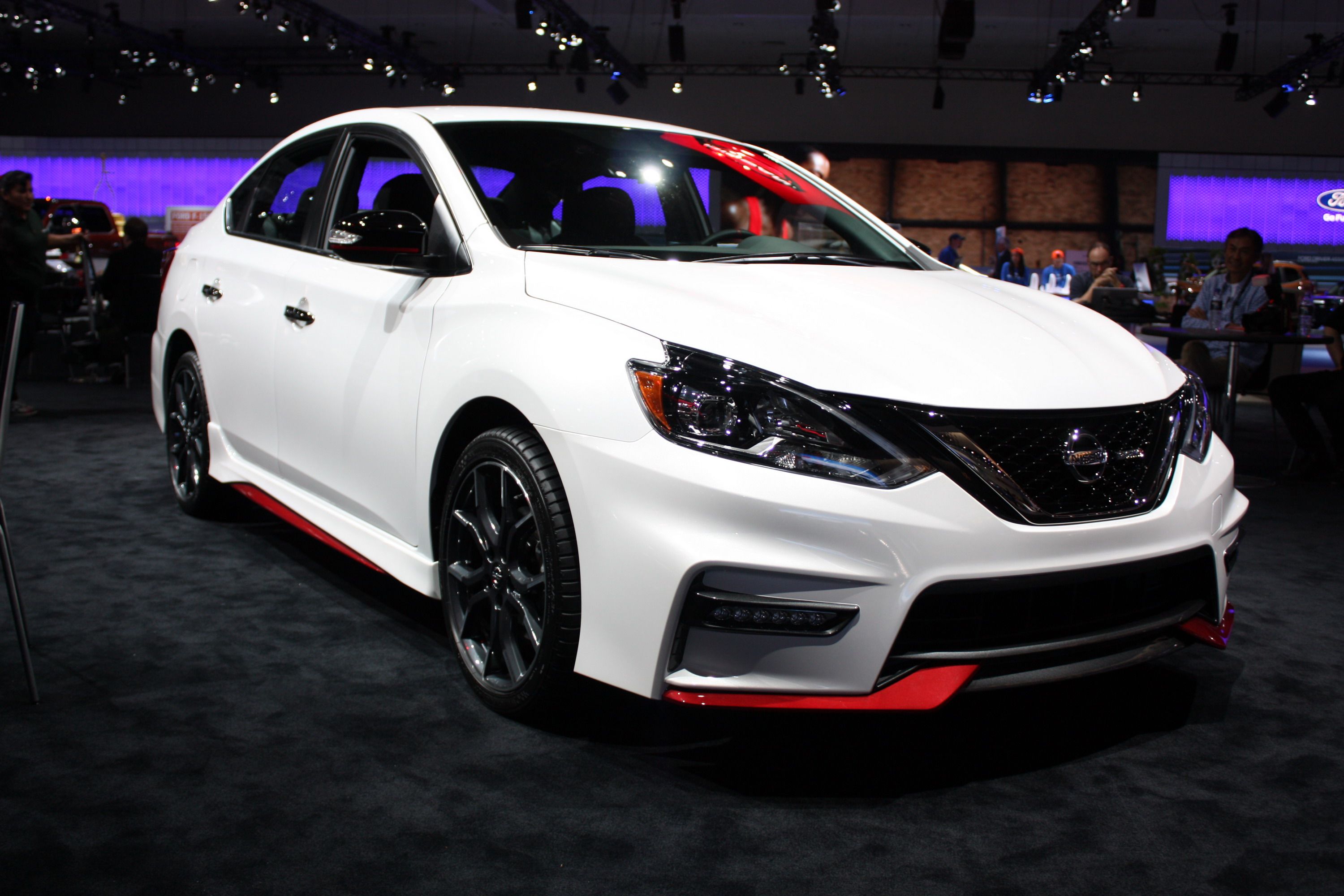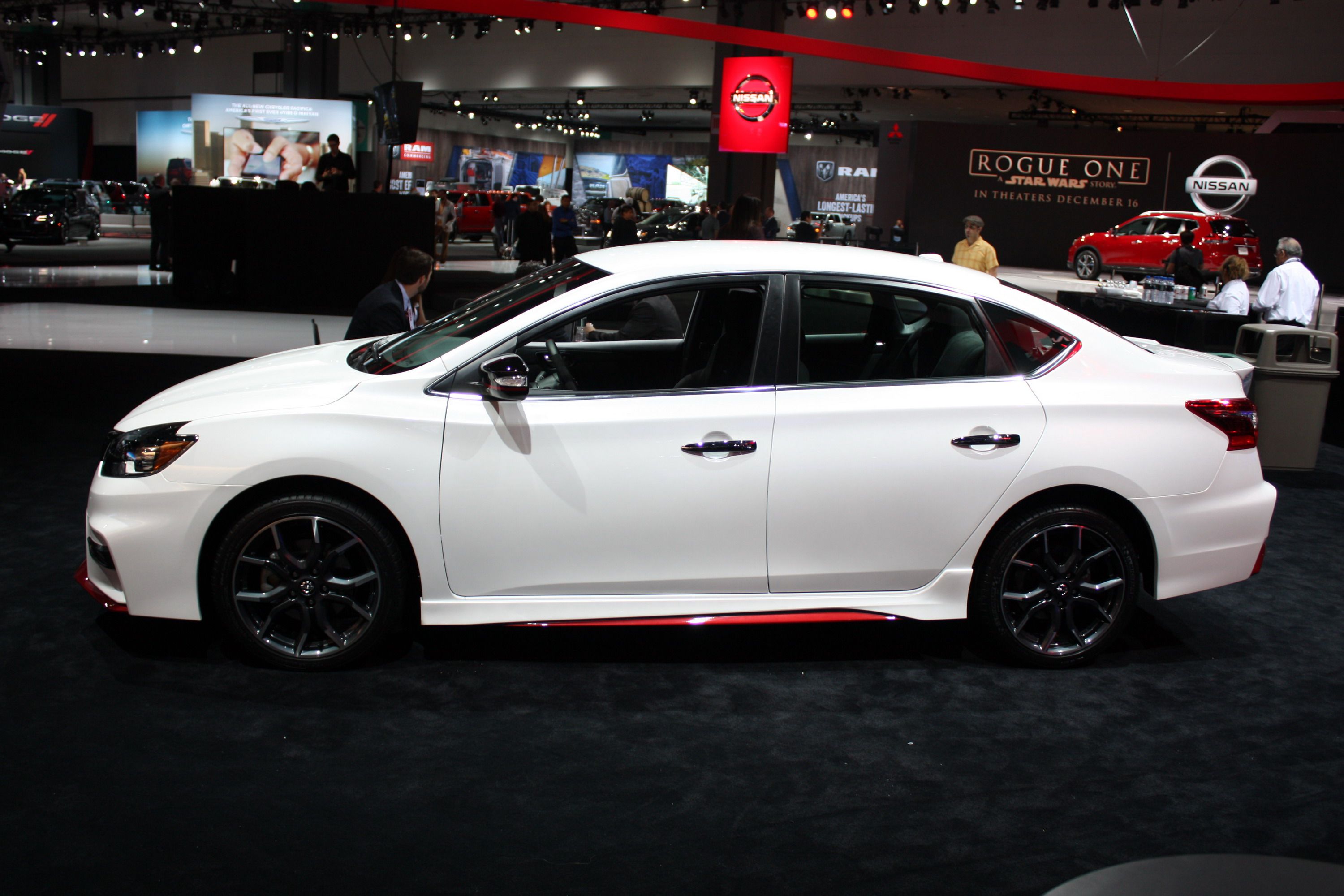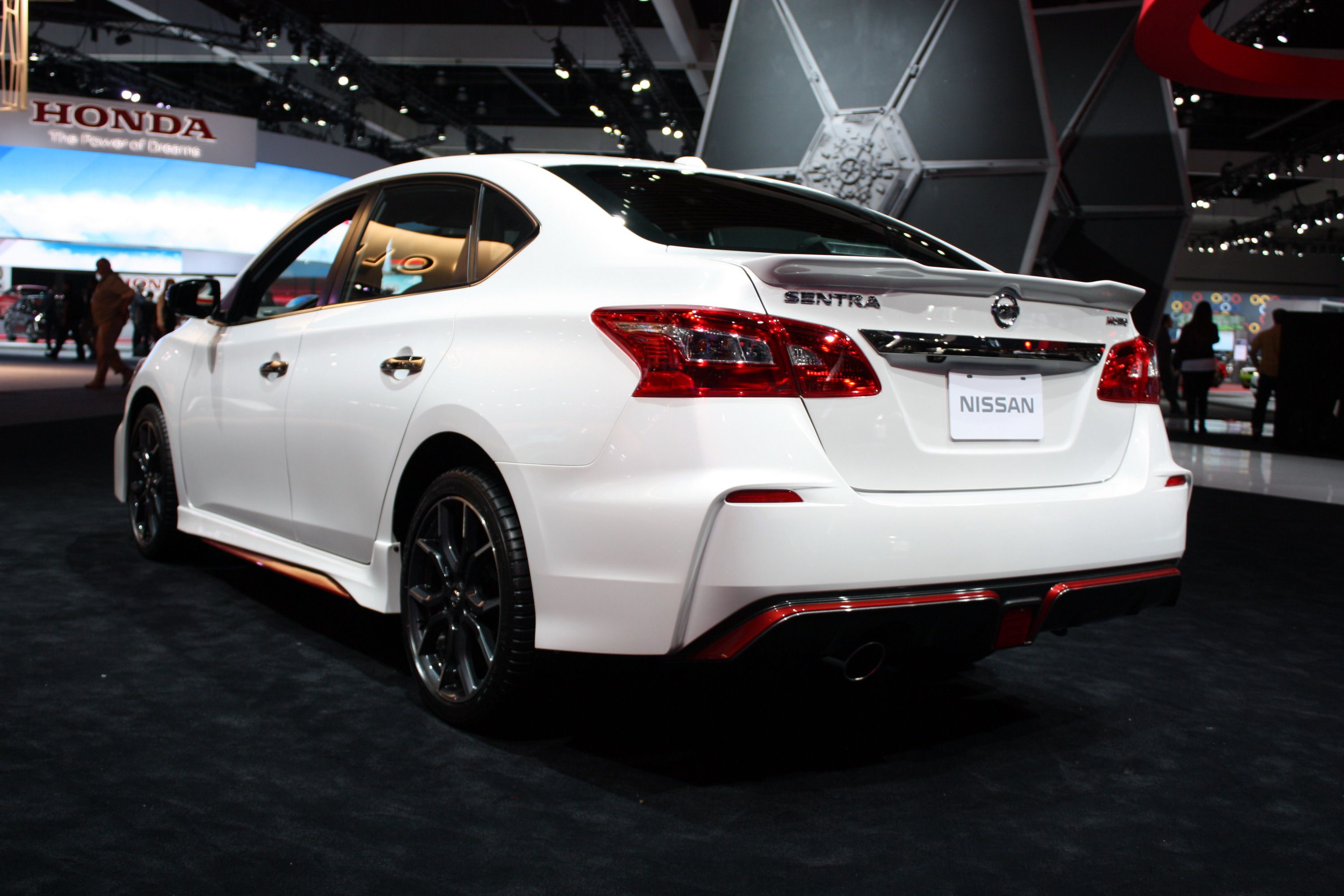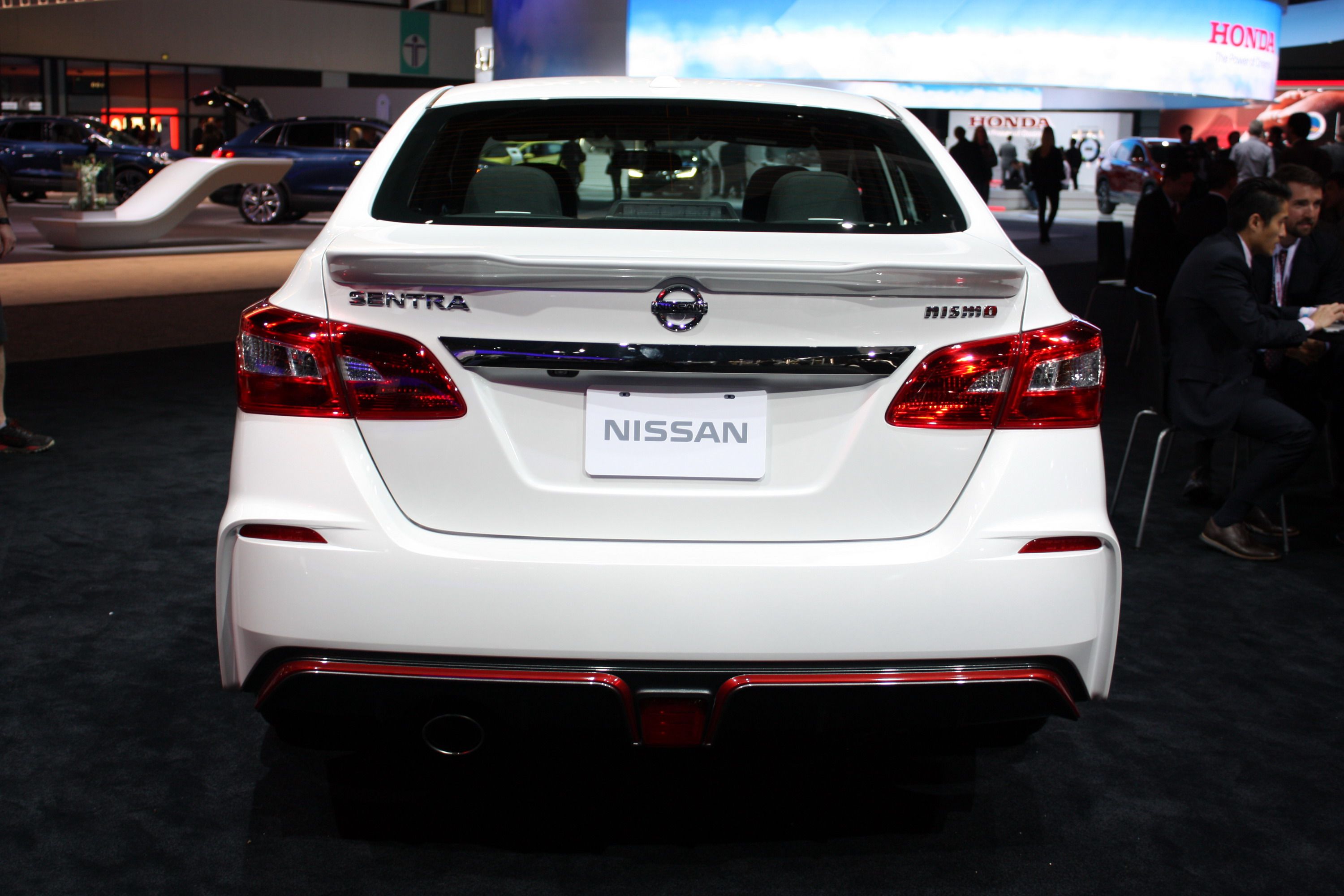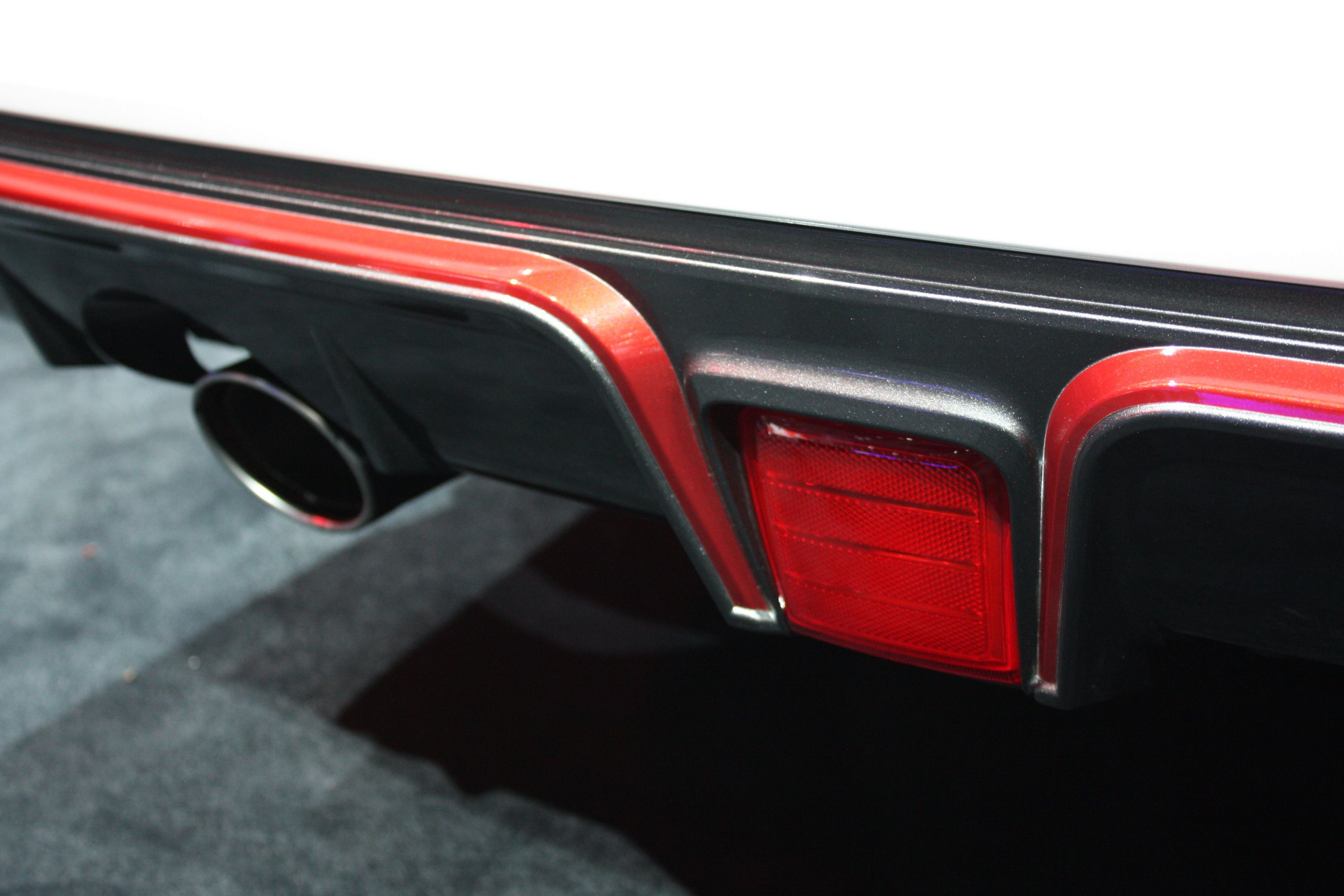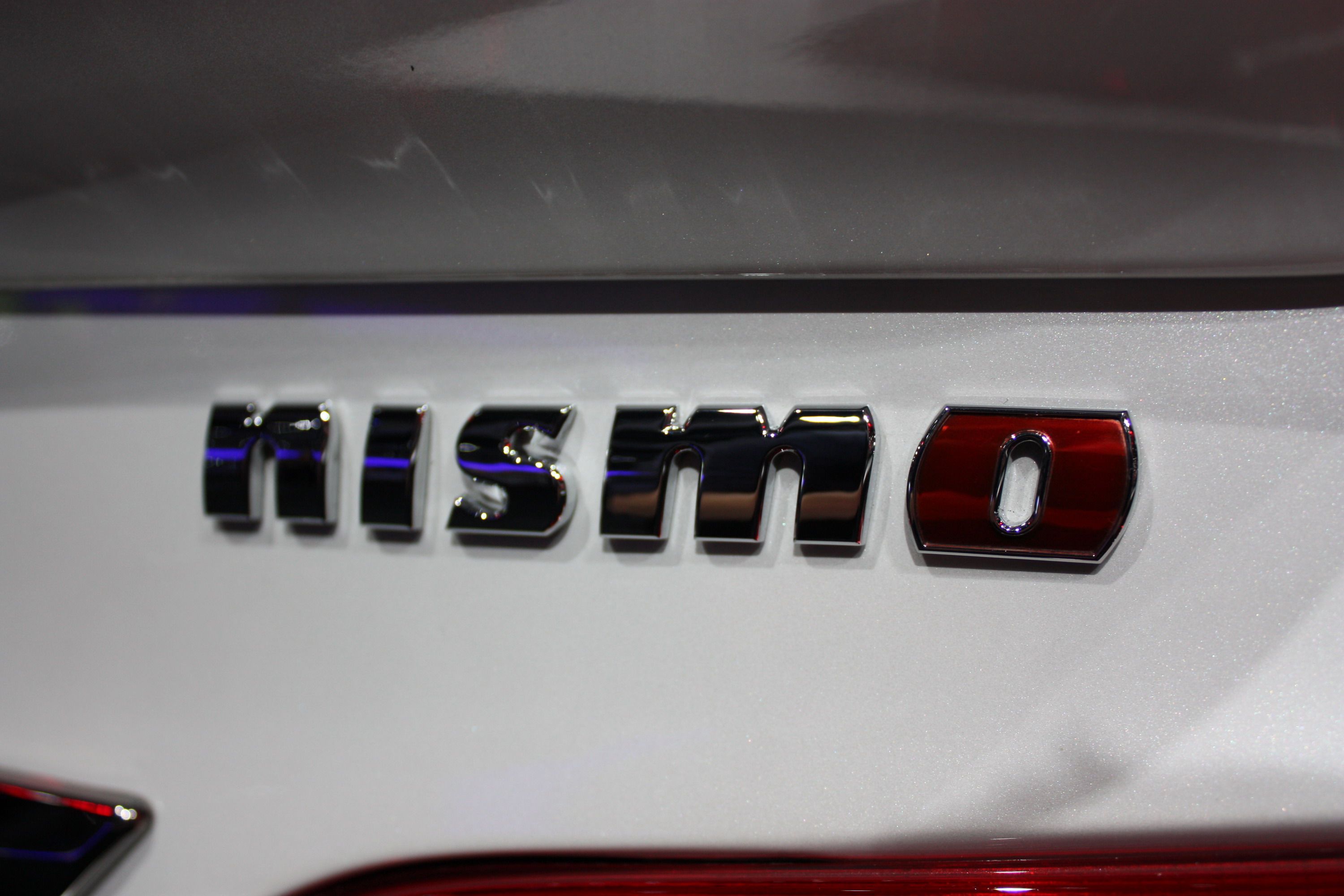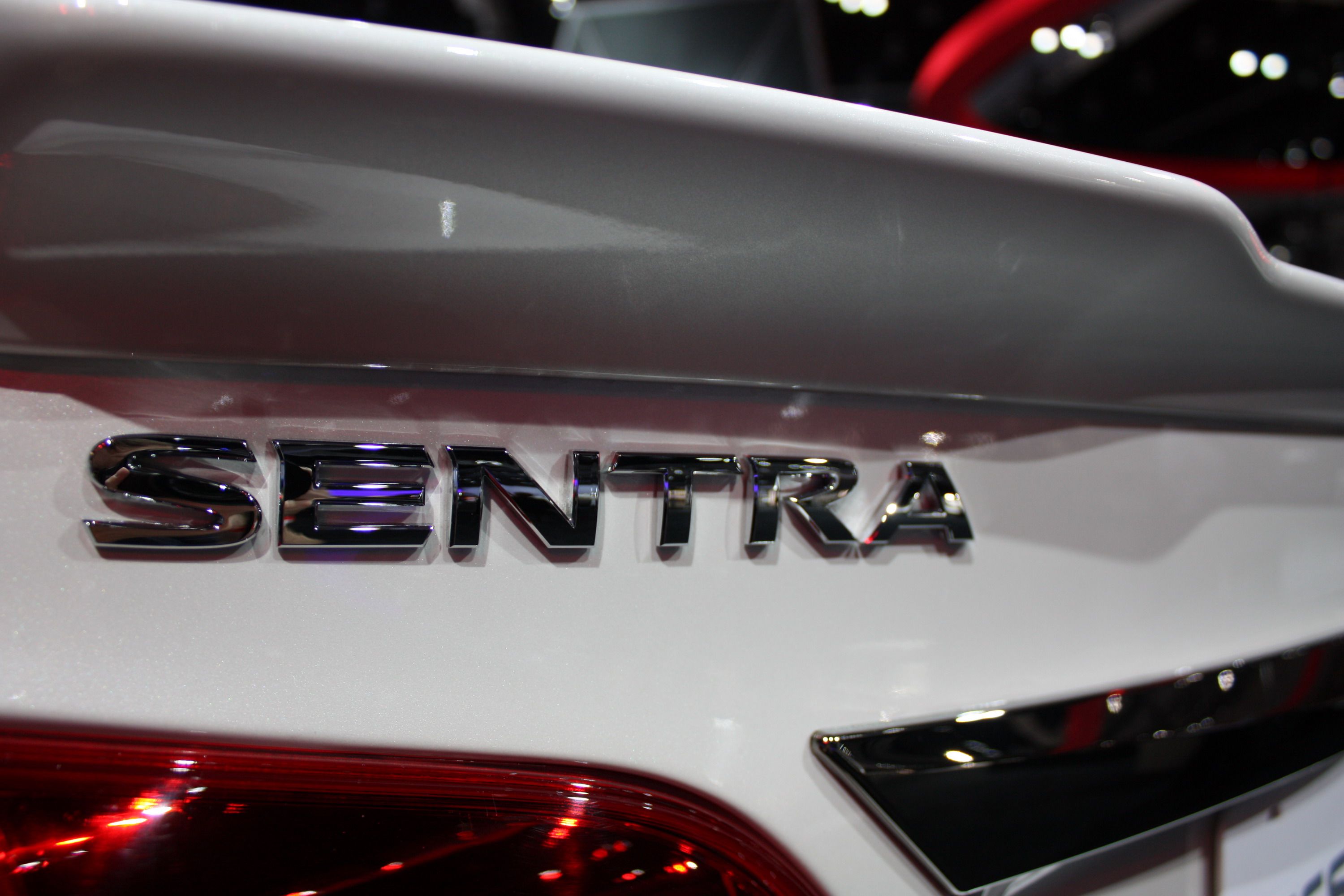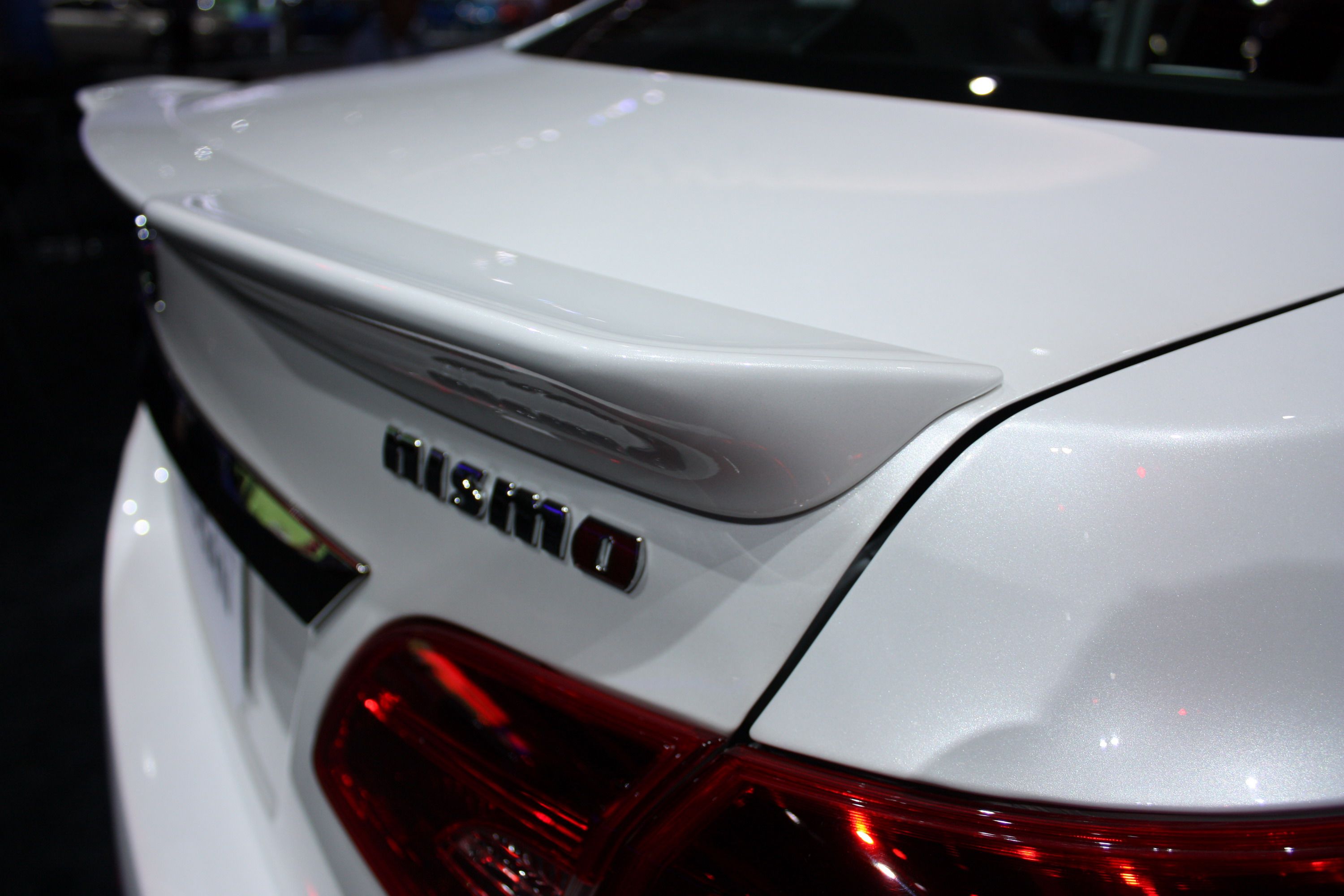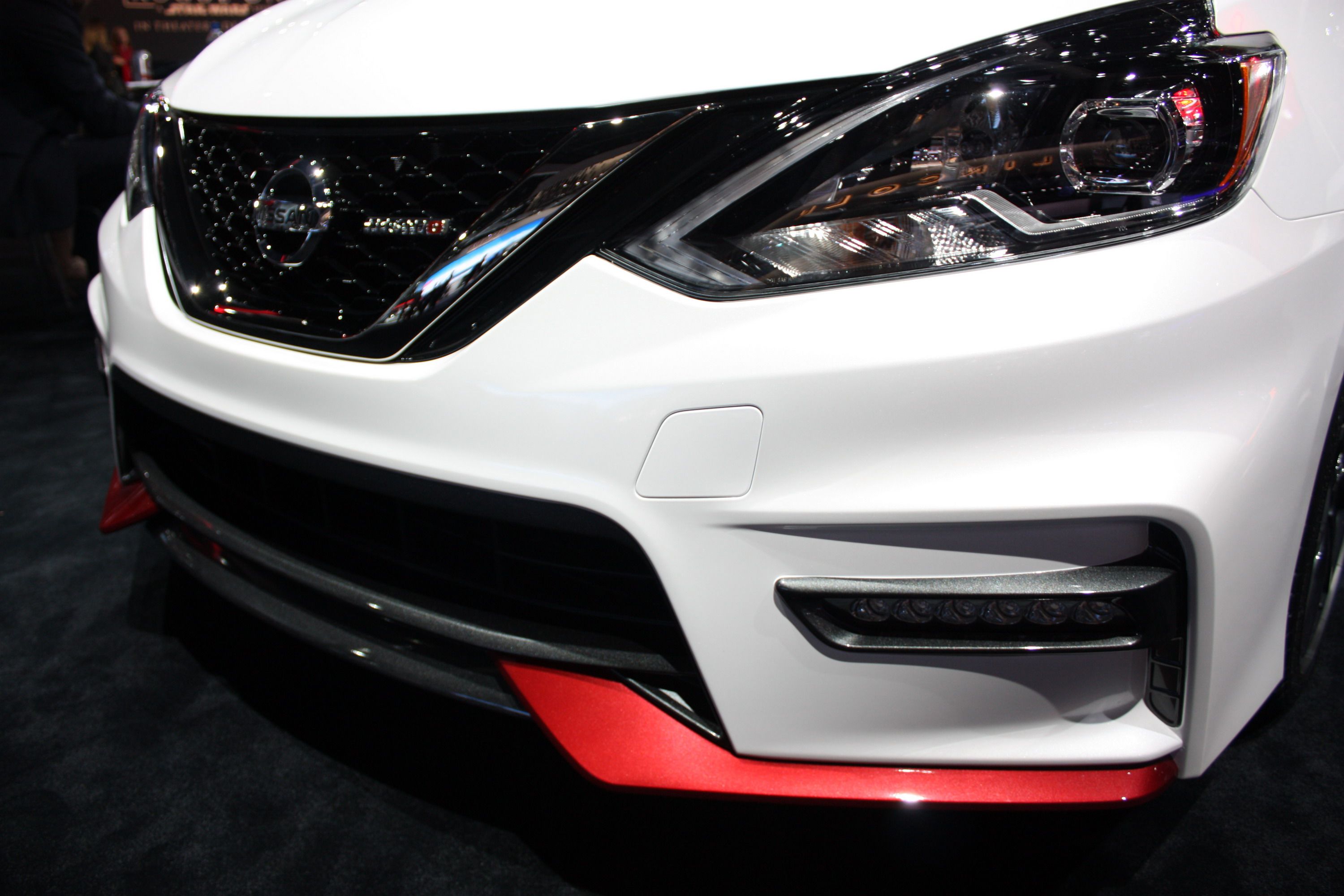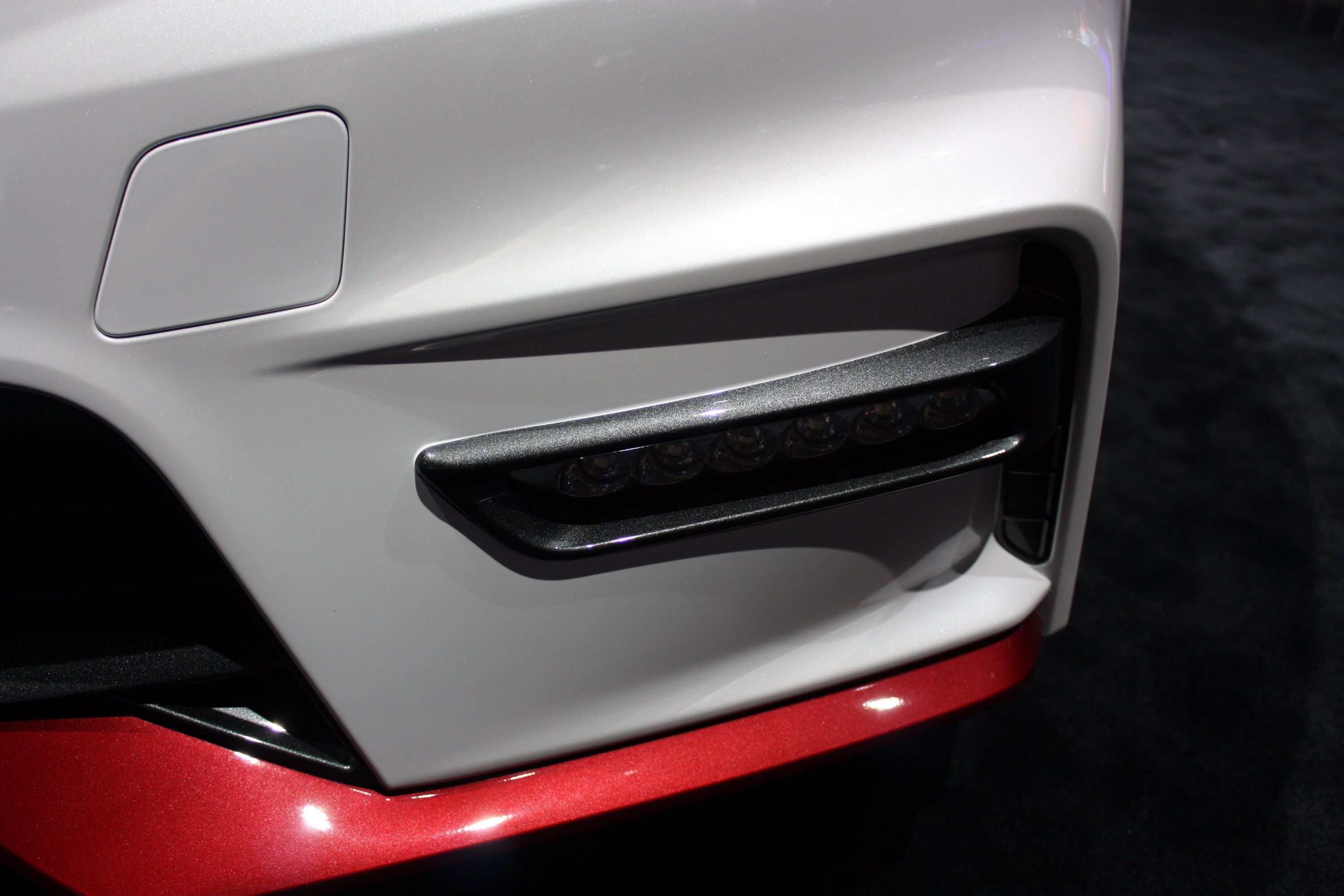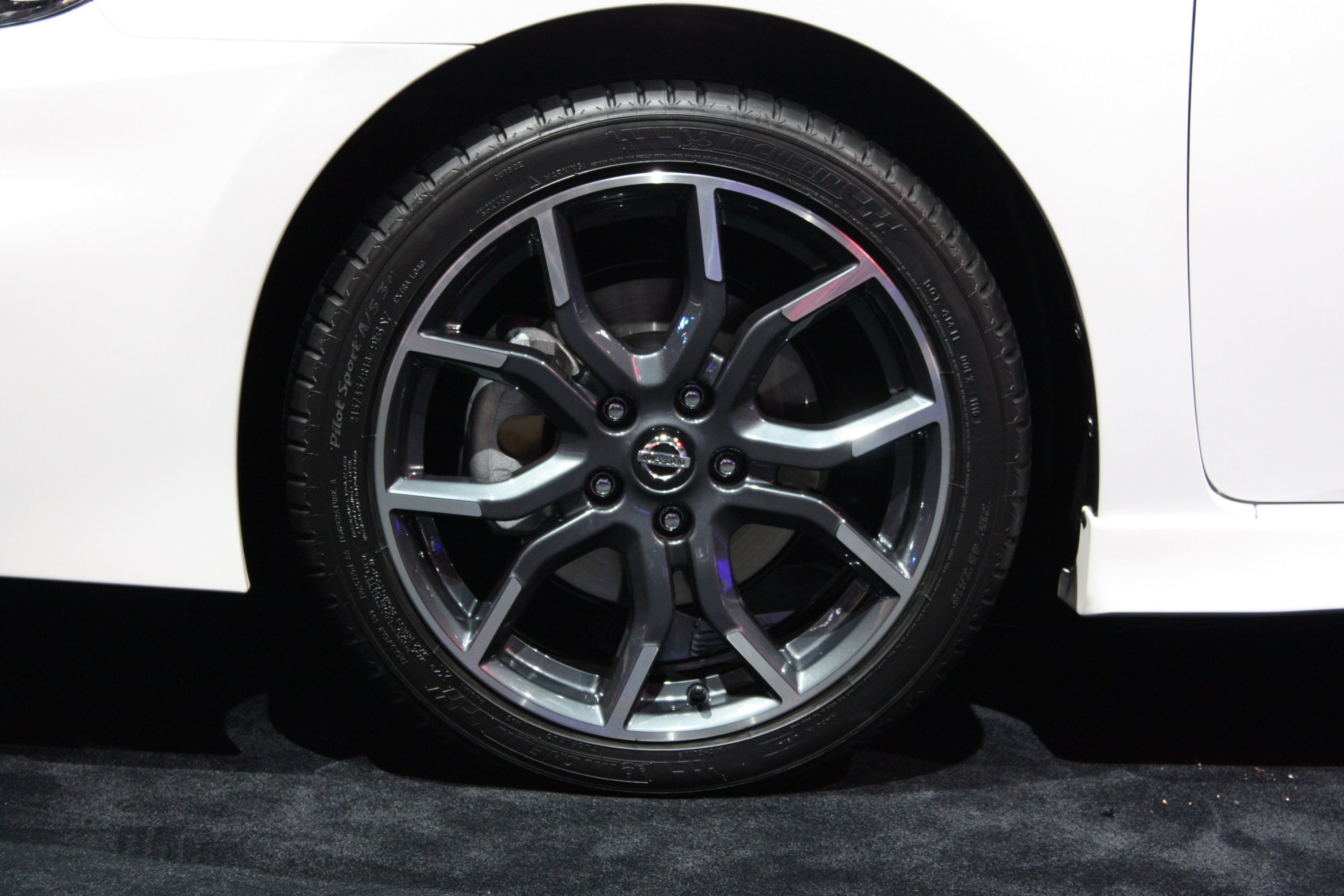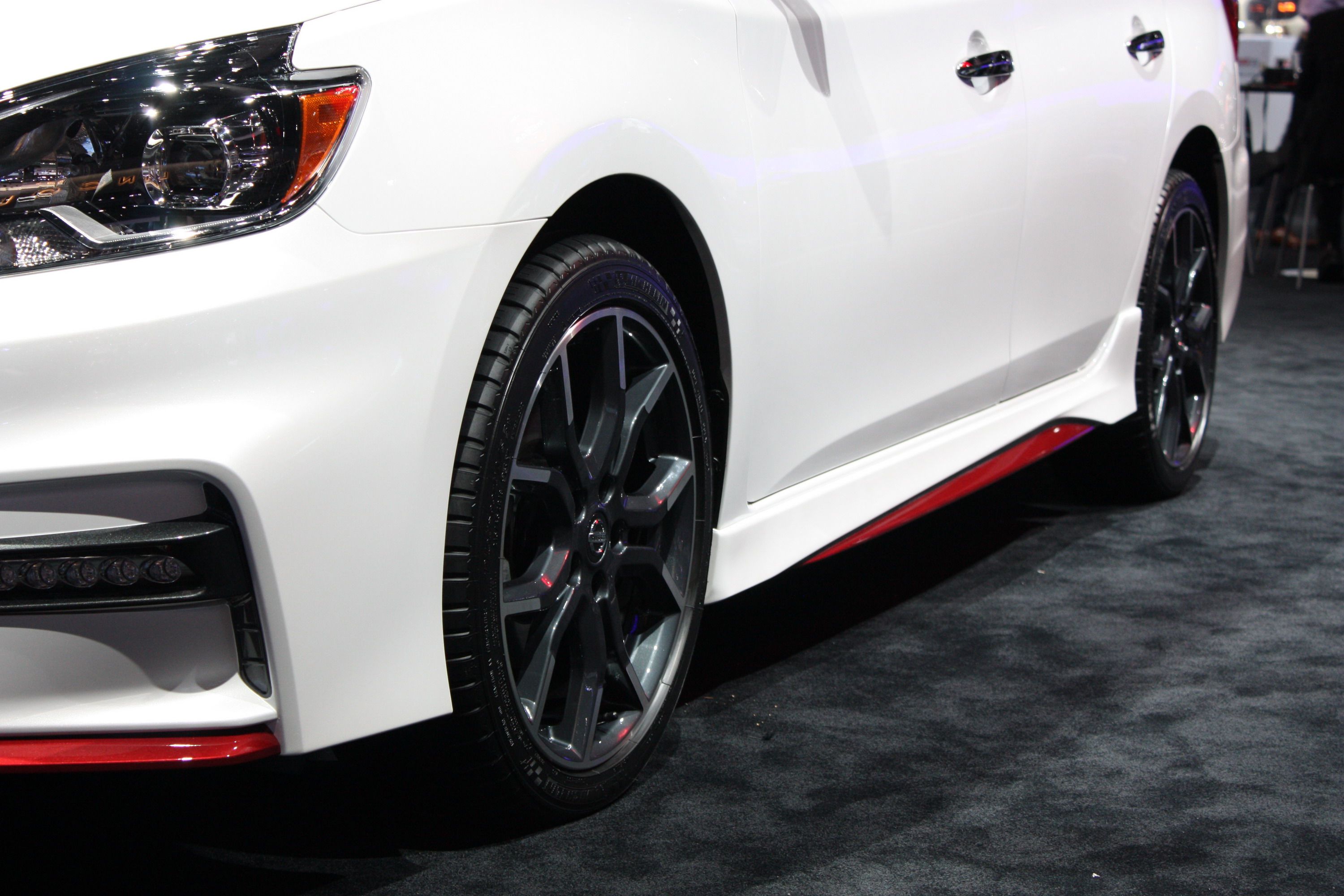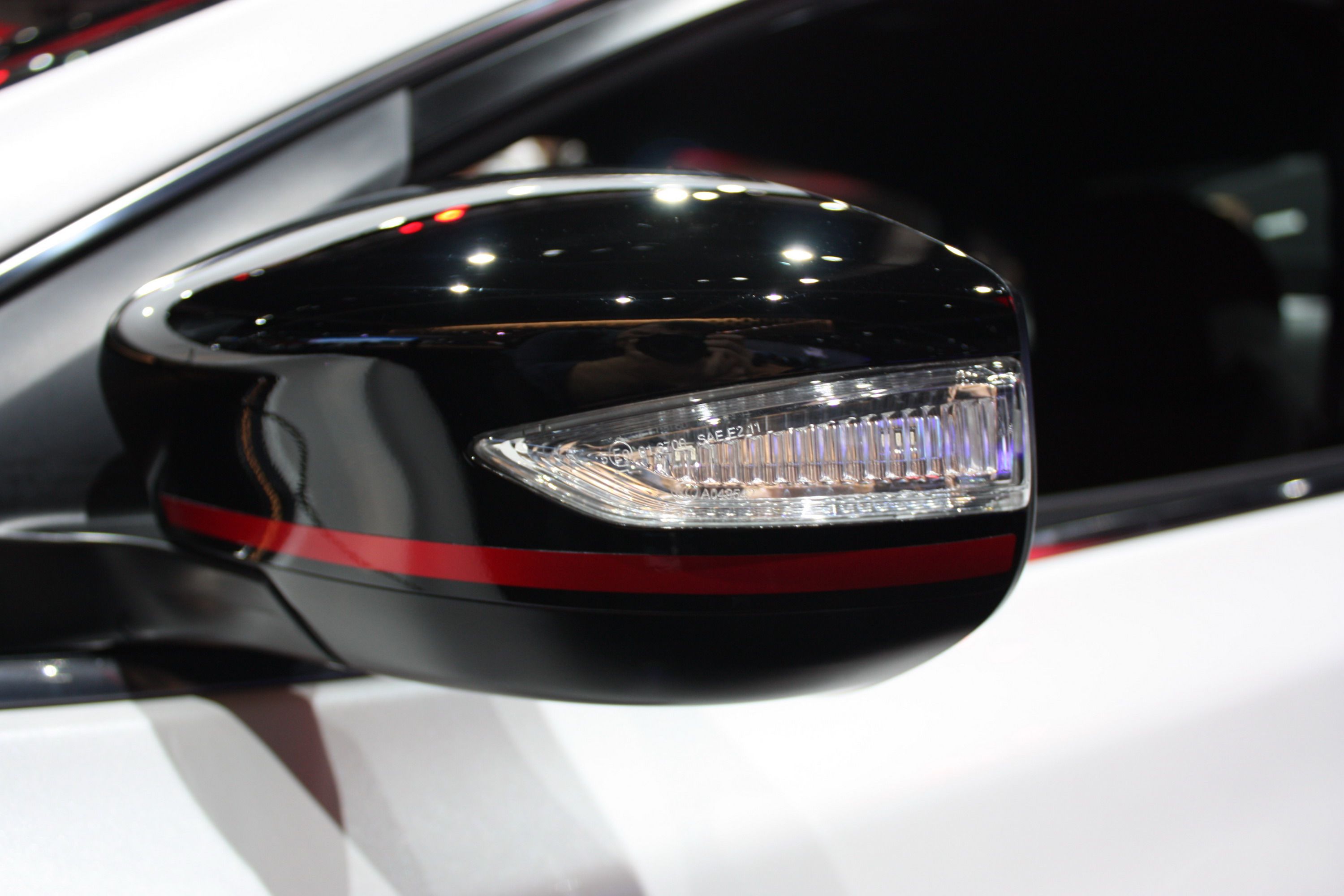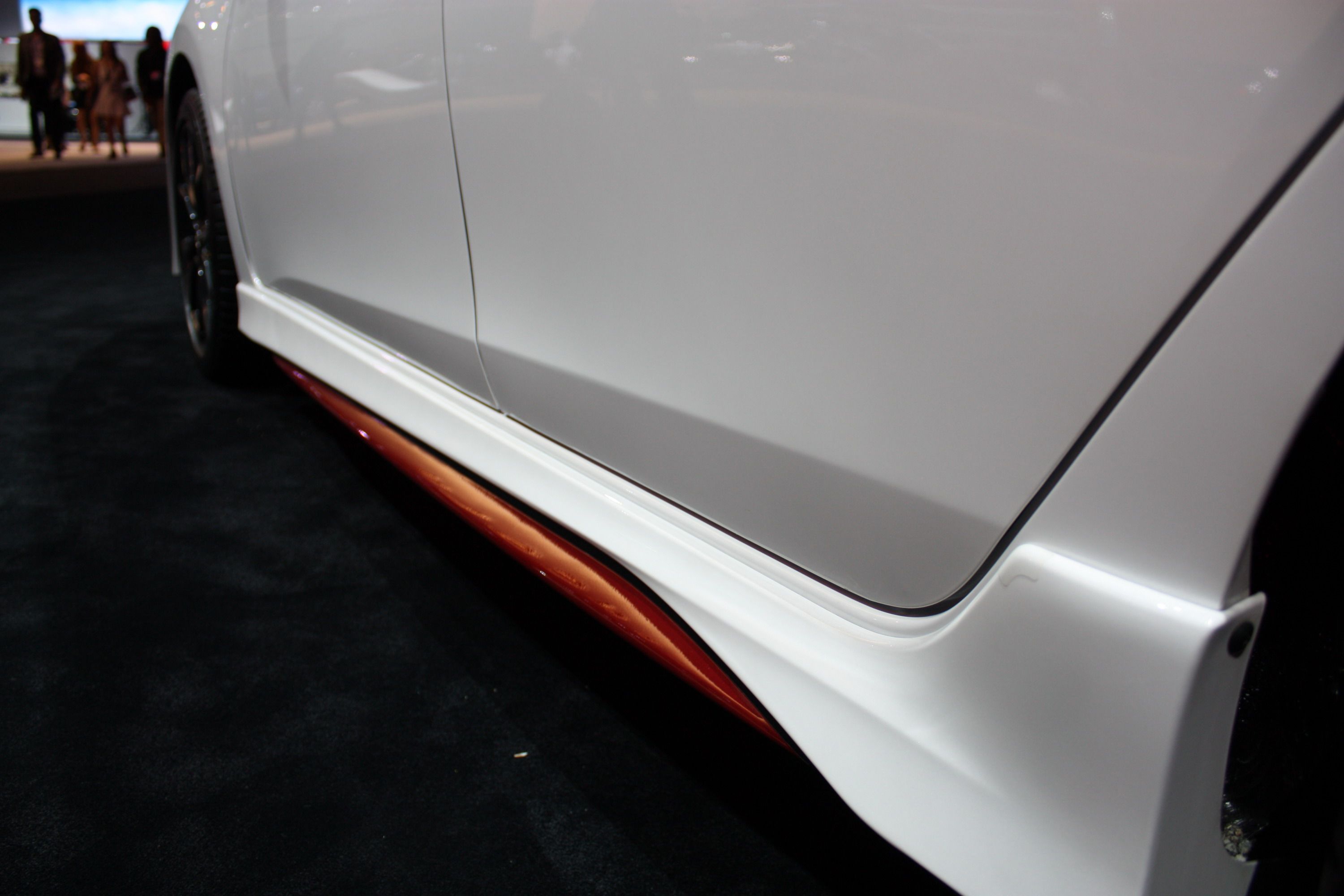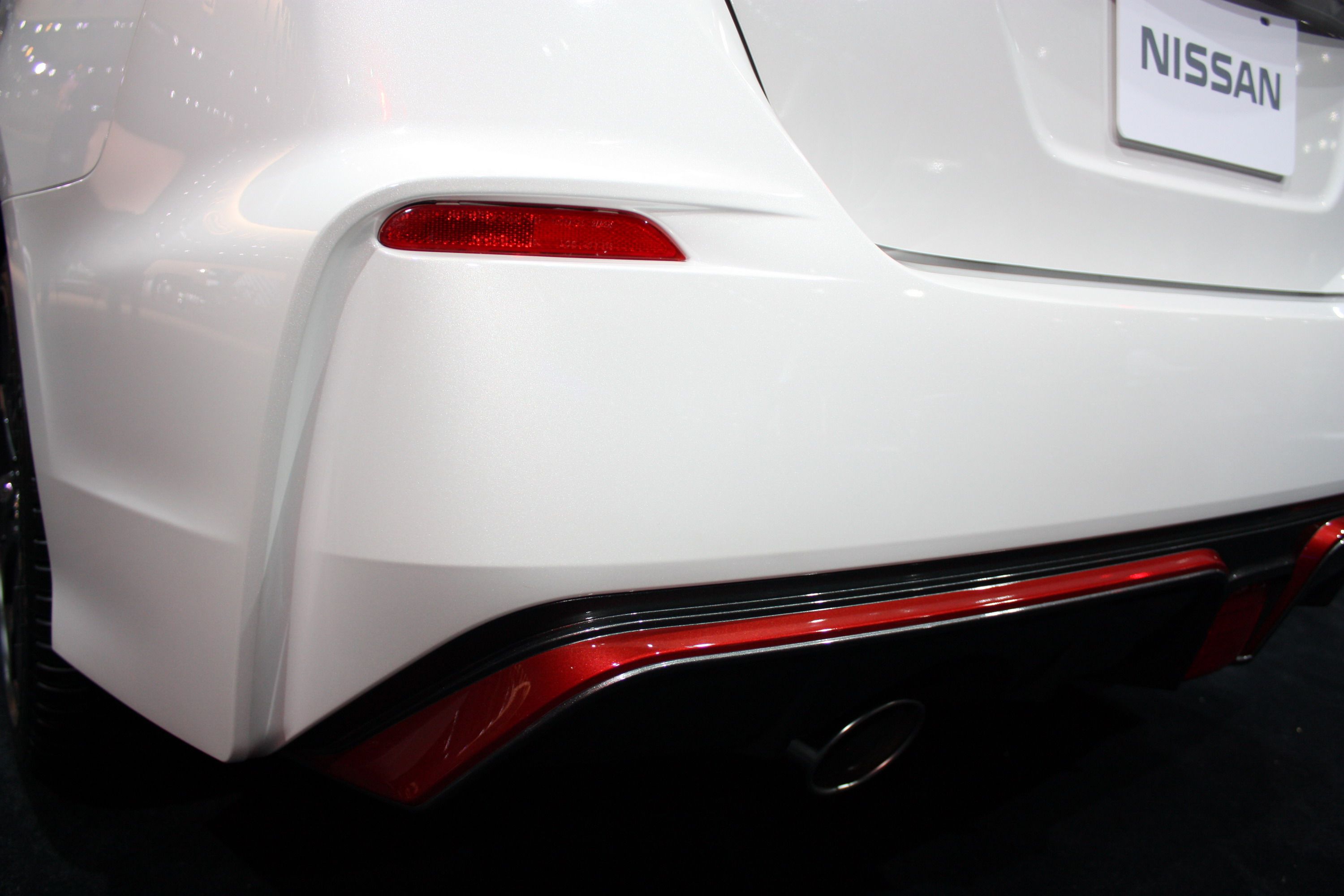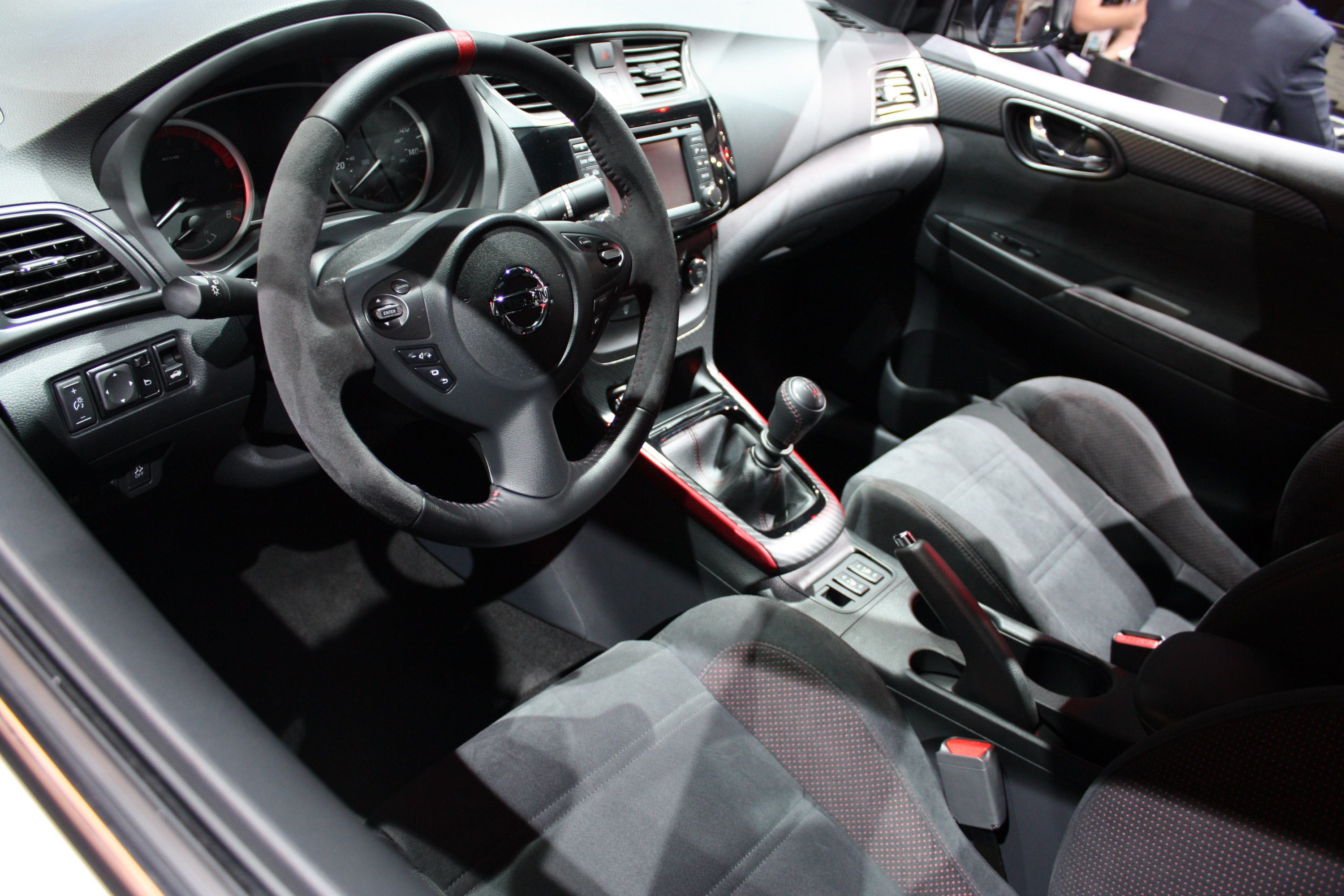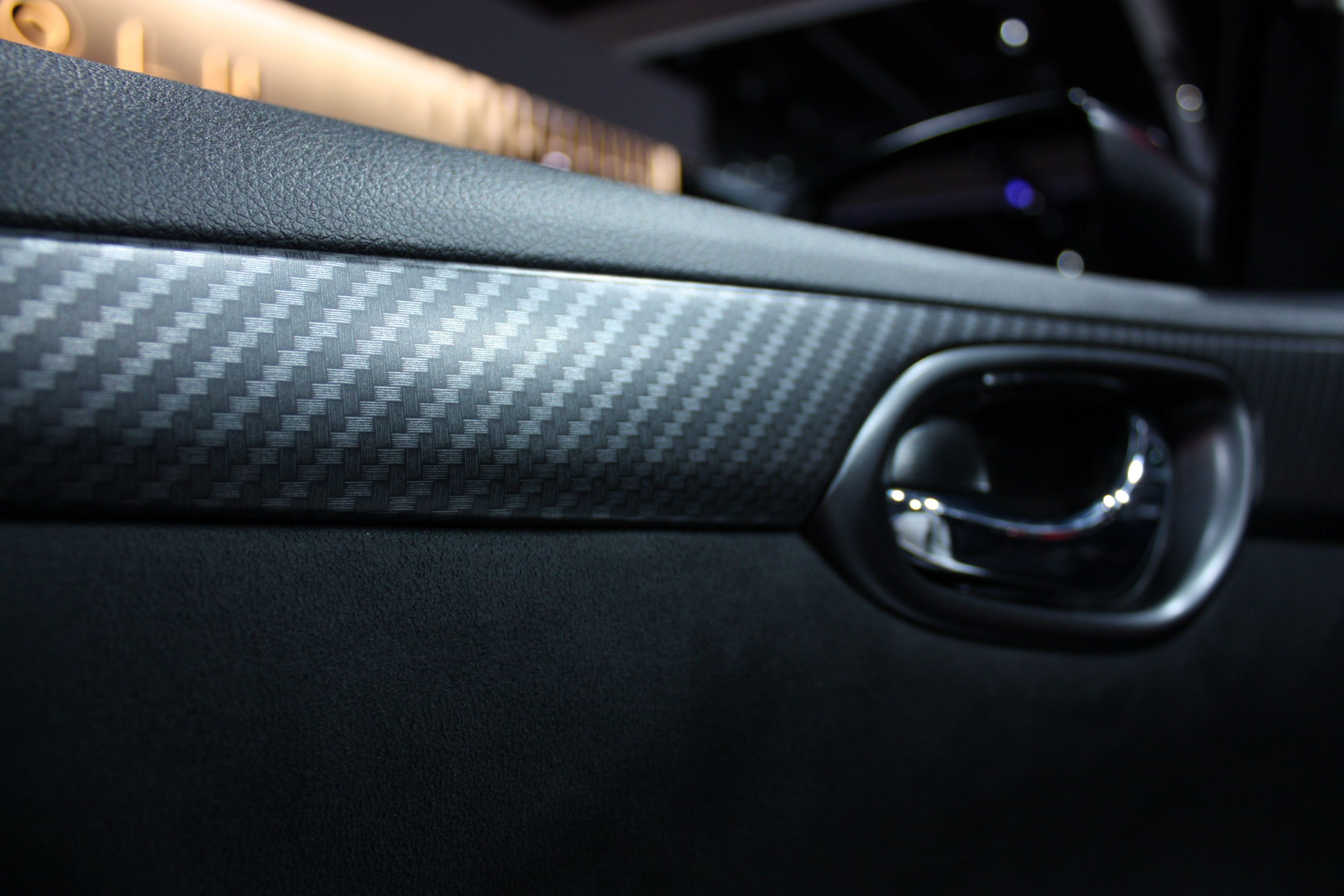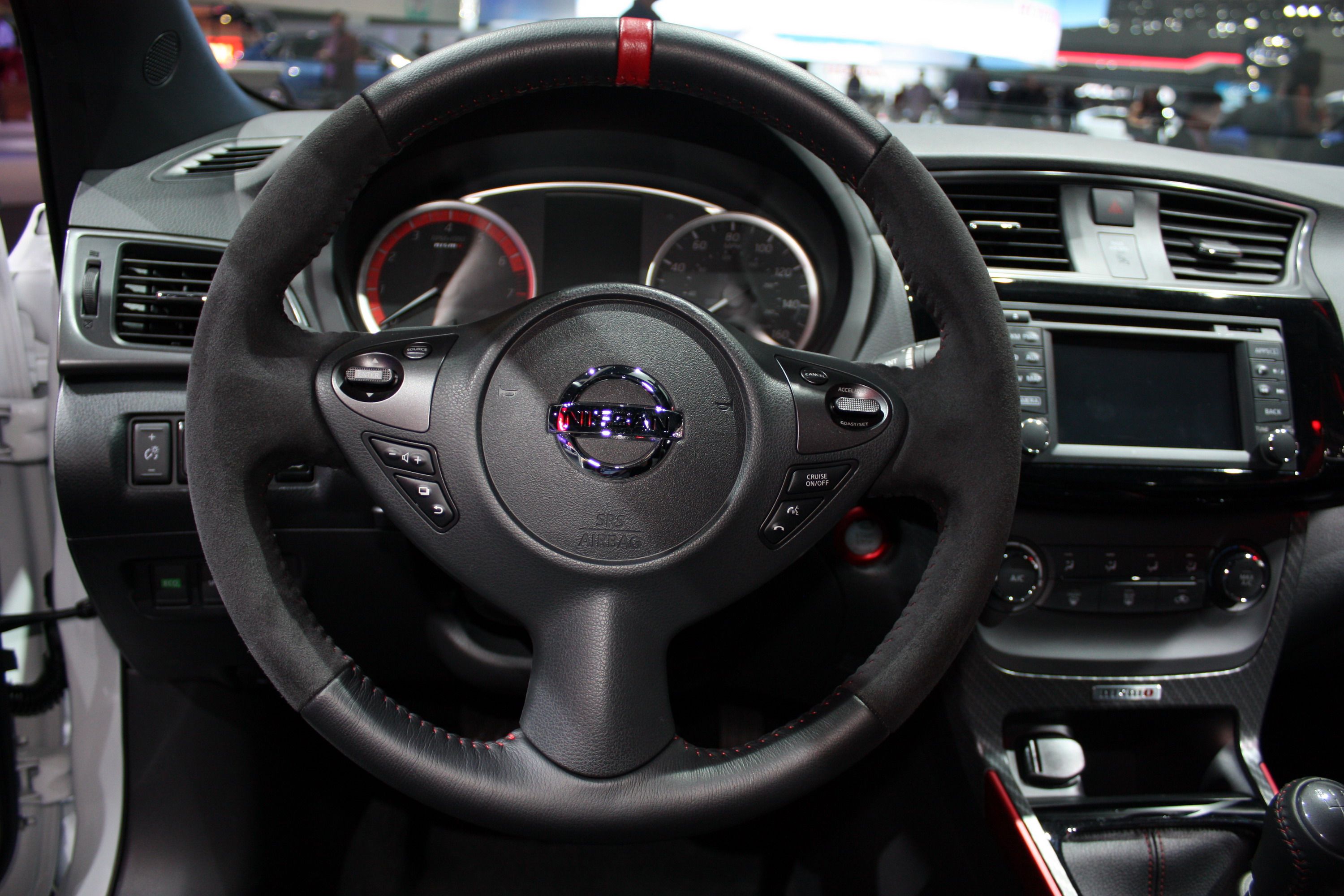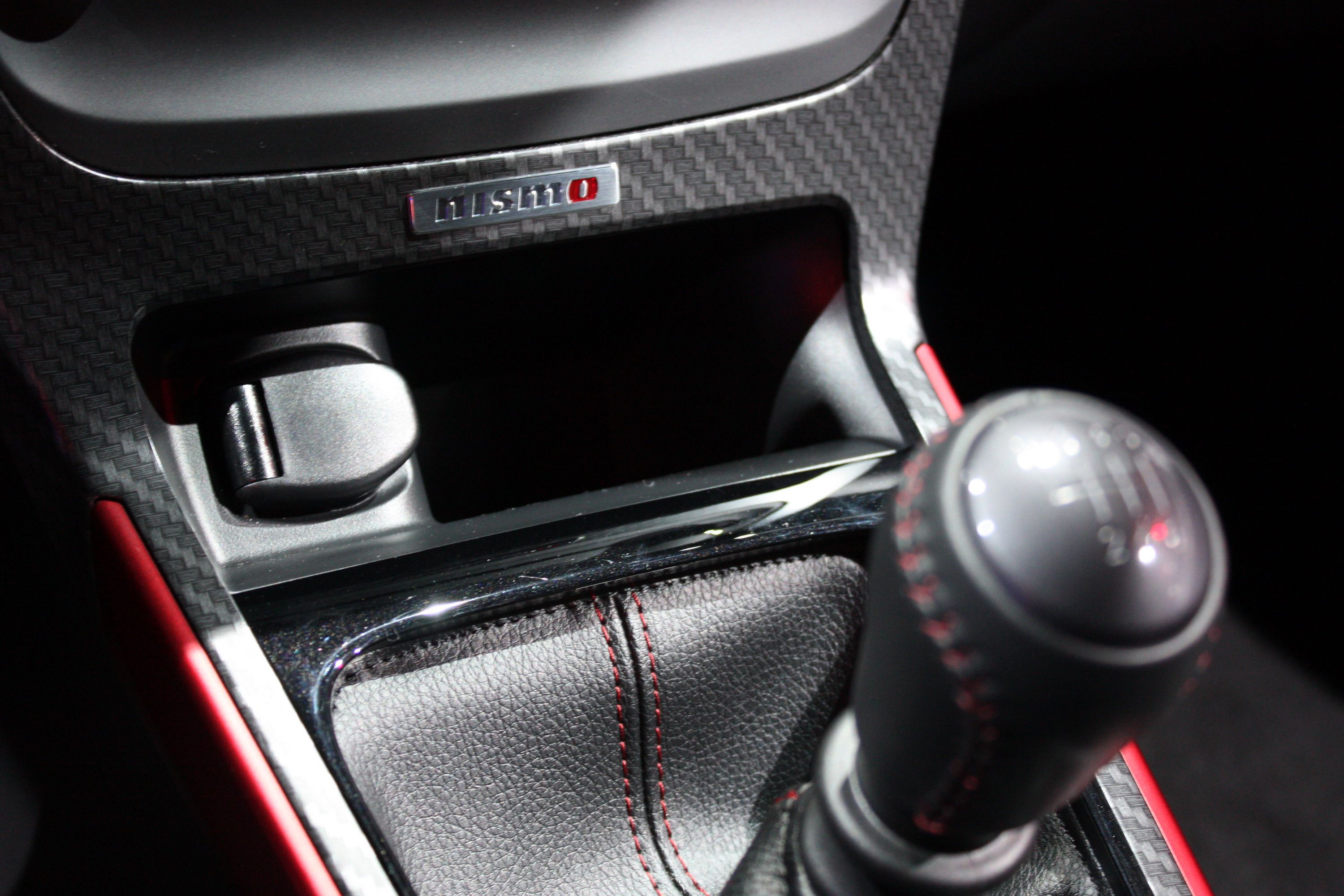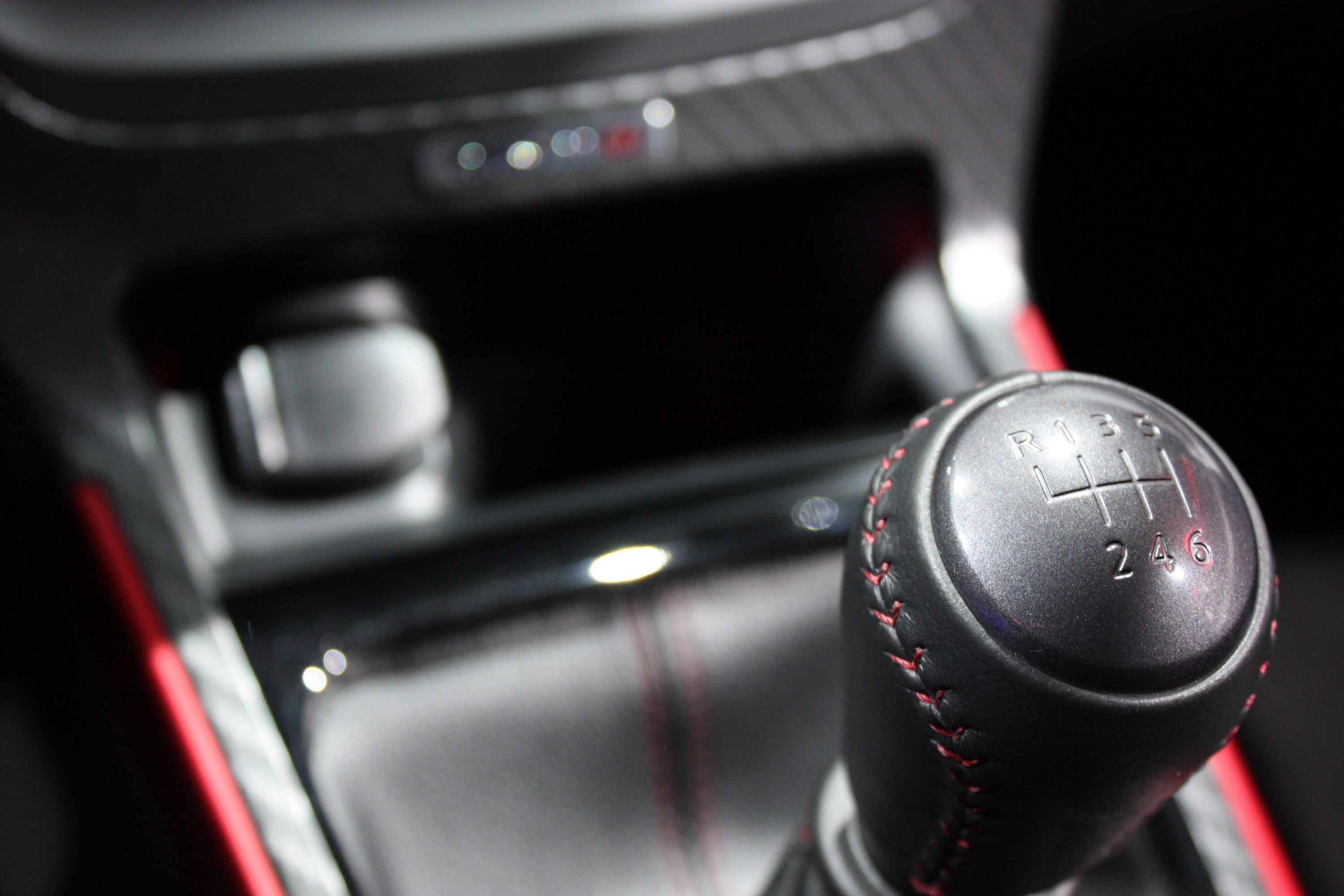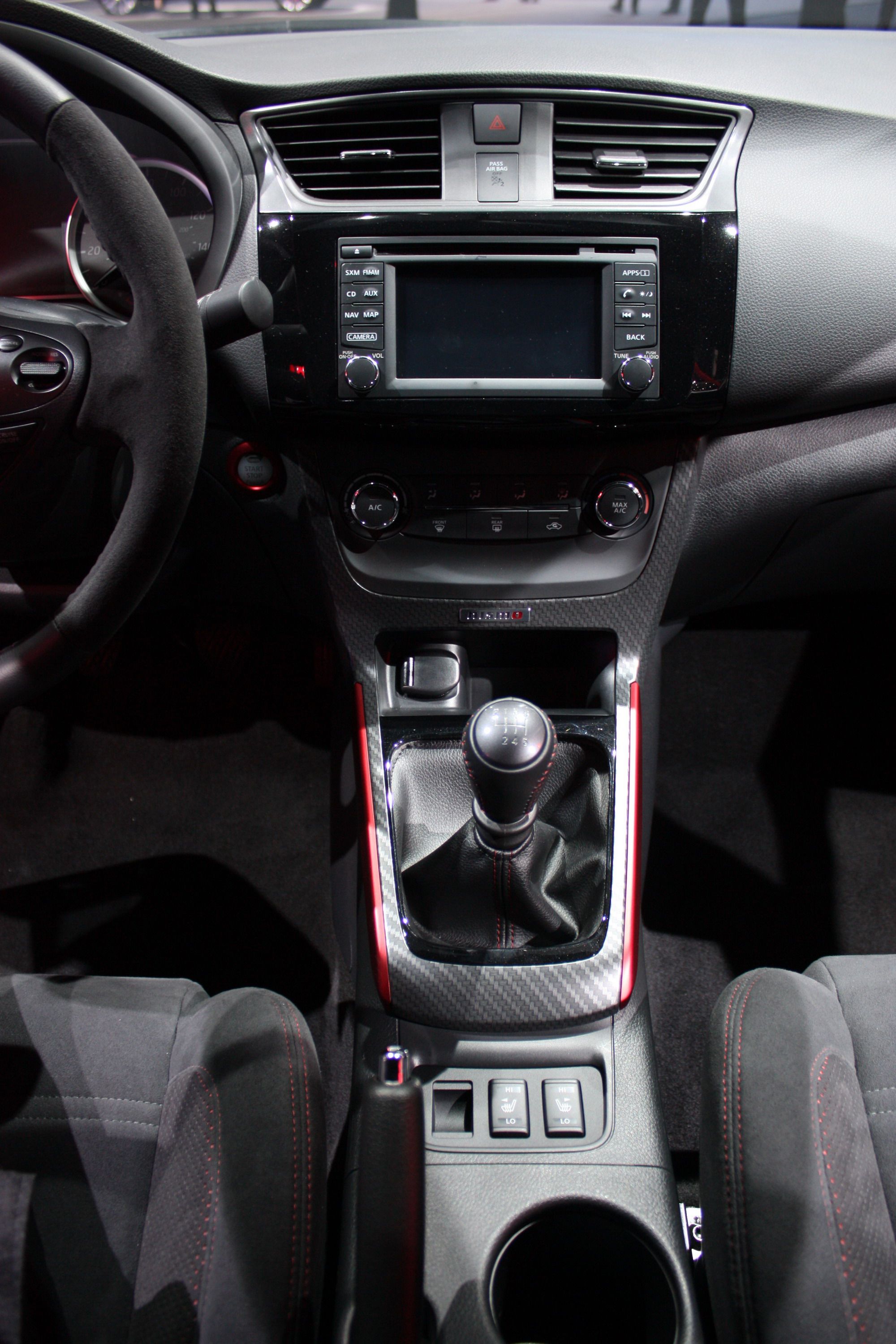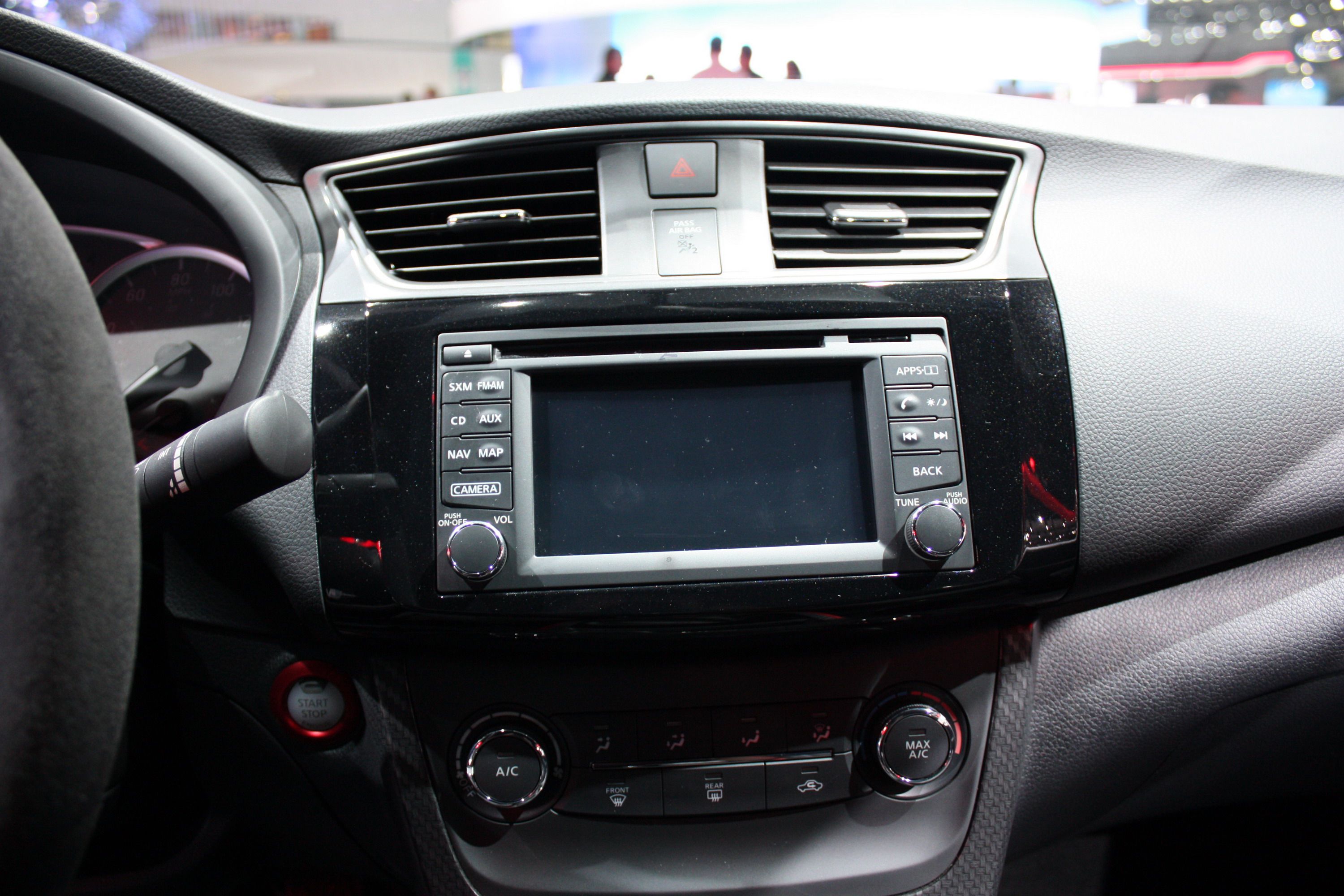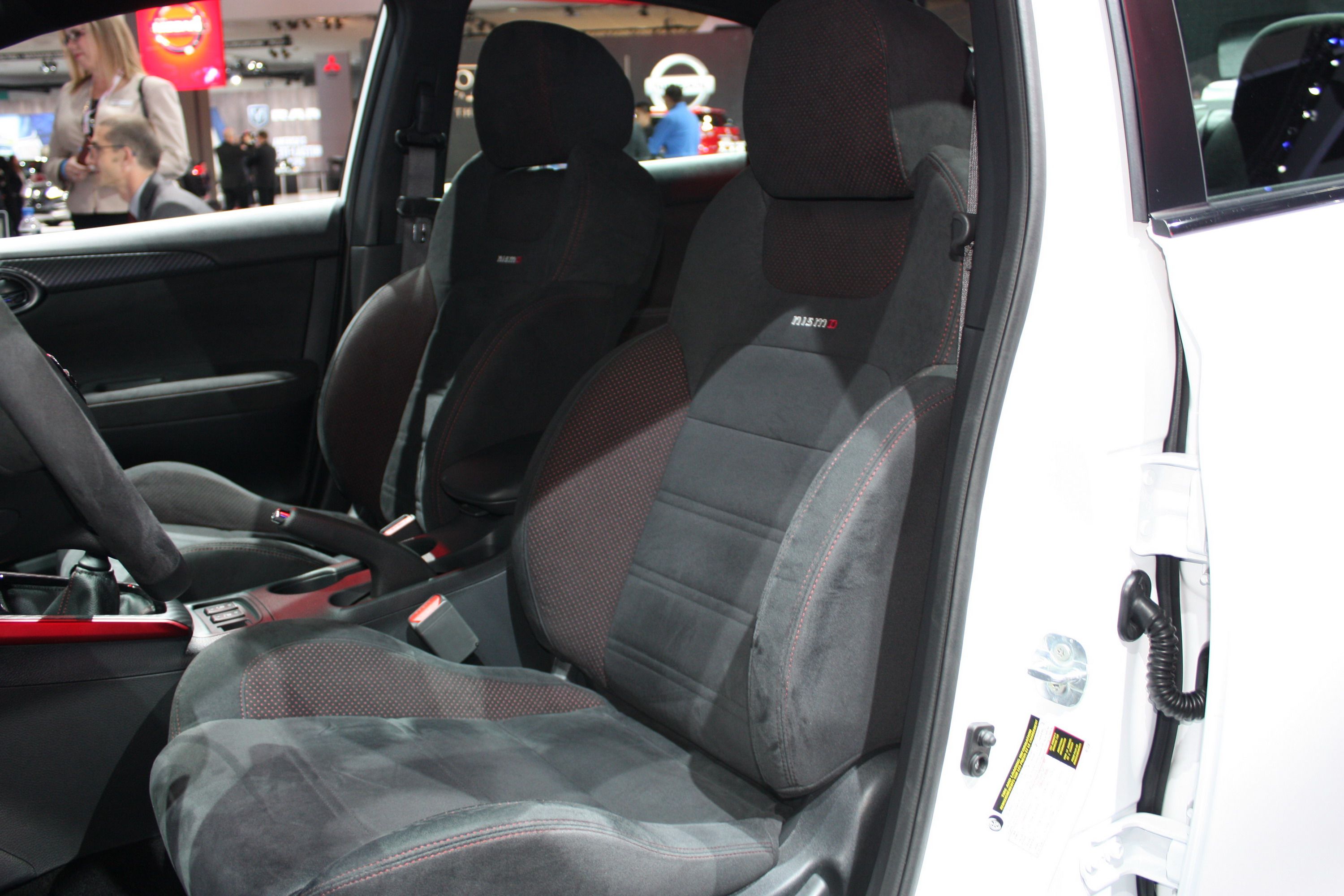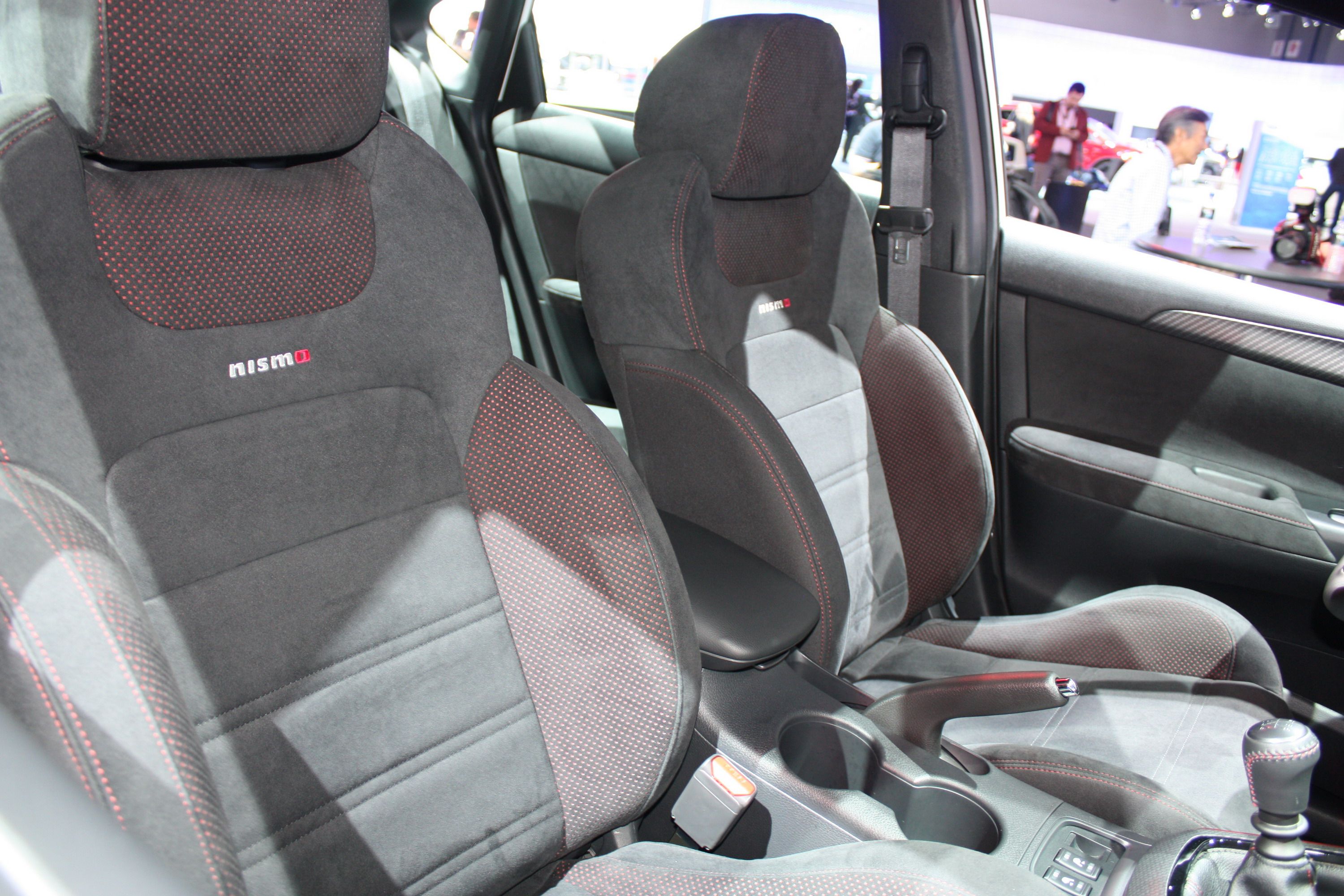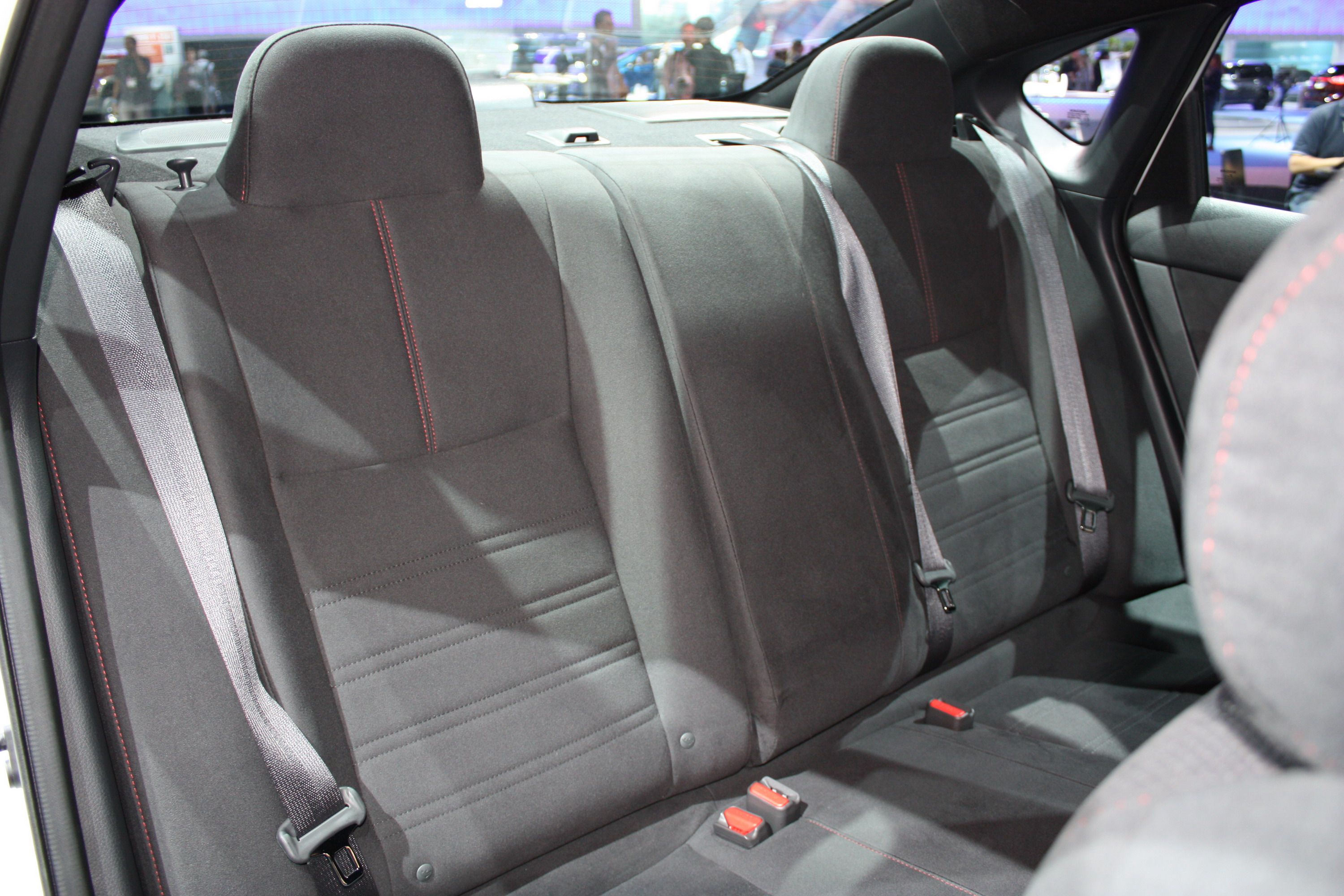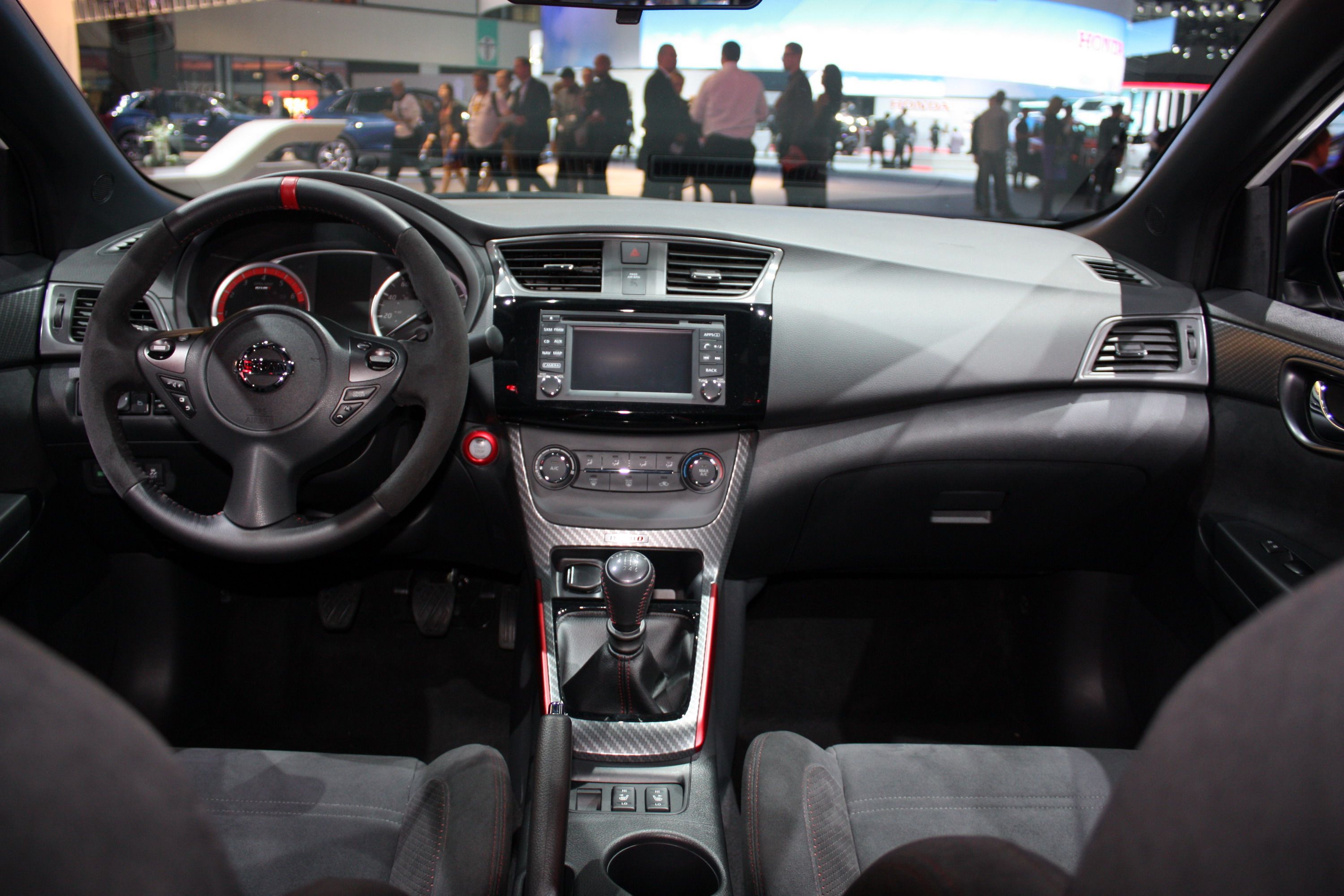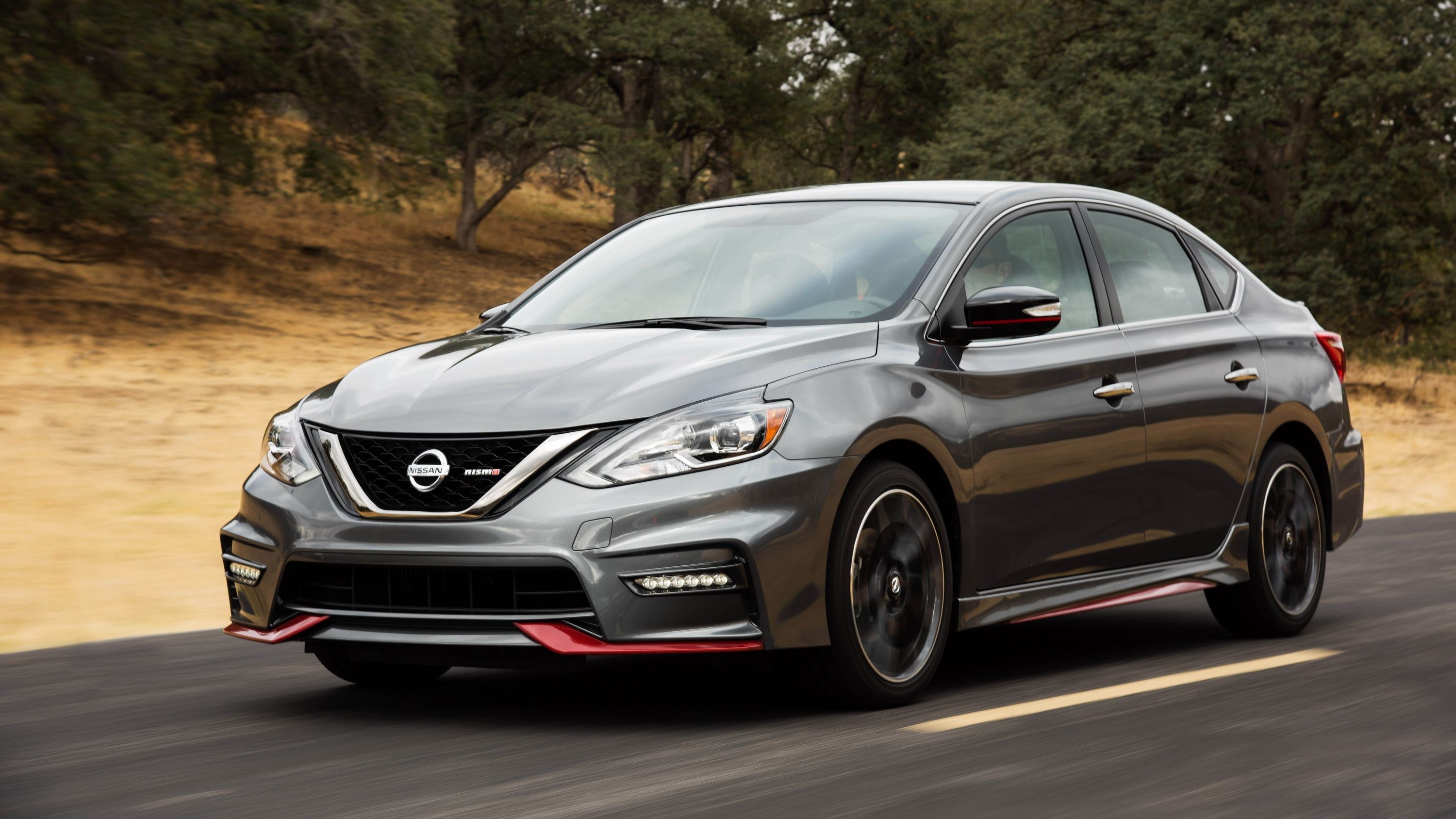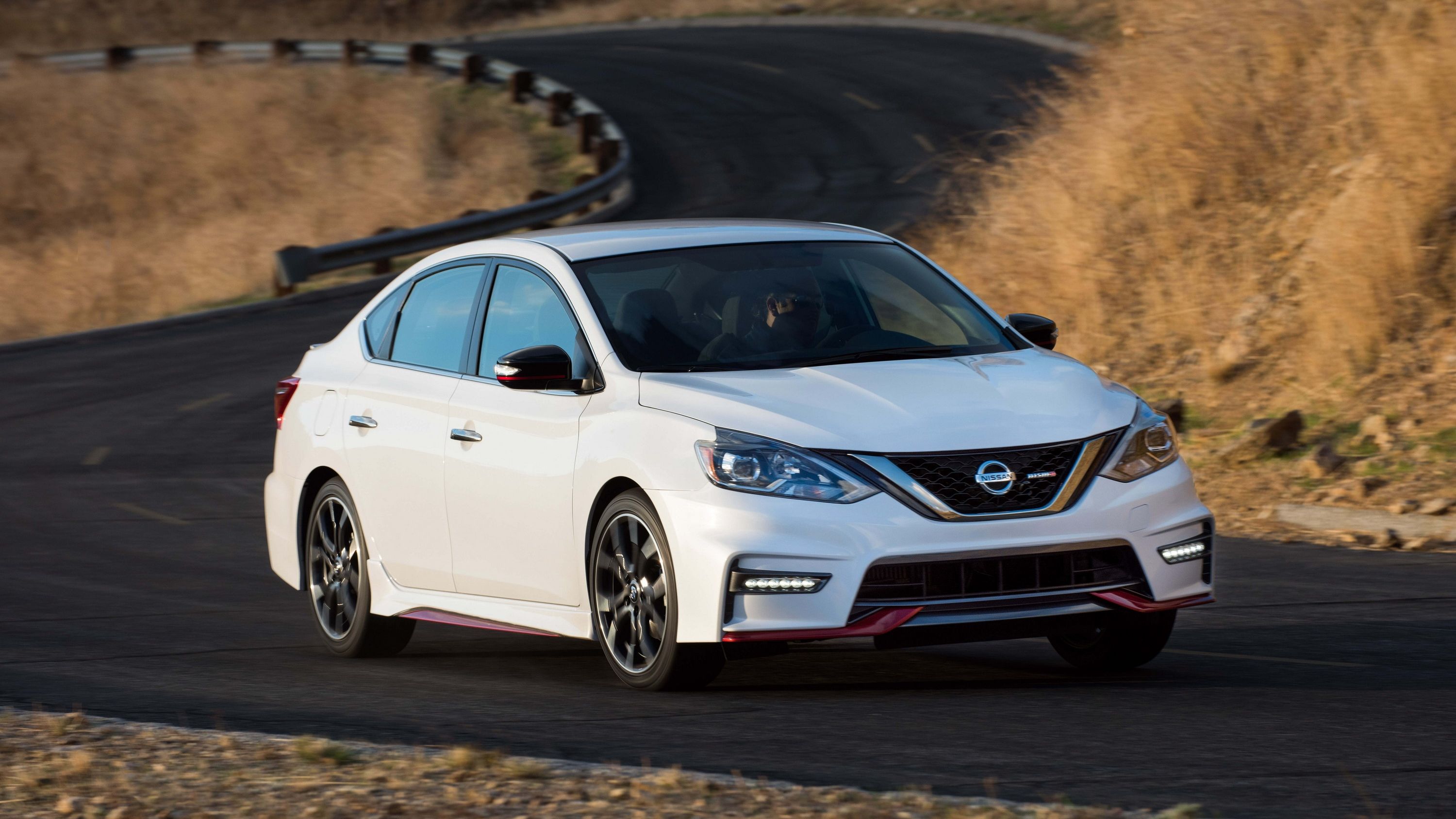These days, you’d be forgiven for dismissing the Nissan Sentra as just another eco-box for the daily A-to-B grind, but that wasn’t always the case. Believe it or not, there once was a Sentra designed for – brace yourself – fun. It was called the SE-R, and it was a glorious thing indeed, boasting a torquey four-cylinder engine, responsive suspension, and a price tag with room for aftermarket race tires. Unfortunately, the Sentra SE-R got shelved after the 2012 model year, causing enthusiasts to feel a bit left out in the cold. Luckily, Nissan is correcting that mistake, and now, there’s a new performance Sentra on the scene. This time around, however, it bears the Nismo nameplate, and compared to the standard-issue Sentra, it’s got a fresh exterior, race-inspired interior, and sharpened handling.
Nissan says the new Nismo Sentra is the first “mainstream,” “affordable” model to receive the Nismo treatment, and it hopes the four-door will broaden the brand’s appeal alongside the current crop of Nismo’d variants (GT-R, 370Z, and Juke). But the Japanese automaker is adamant that the Sentra Nismo won’t dilute the go-faster association of Nismo, and that the upgrades are much more than skin deep.
We’ve been waiting a while for Nissan to drop something like this, even going so far as to draw up a rendering and put together a speculative review. Now that the real thing has arrived, where were we right and where were we wrong? Read on the find out.
Continue reading to learn more about the 2017 Nissan Sentra Nismo.
2017 Nissan Sentra NISMO
- Make: Array
- Model: 2017 Nissan Sentra NISMO
- [do not use] Vehicle Model: Array
History And Background
Before we dive headfirst into the Sentra Nismo, let’s take a look at the model’s origins. Originally put into production in 1982 as a subcompact, the Sentra gained size and heft with each successive generation, eventually getting reclassified as a compact in 2000. Known as the Sunny in Japan (and later as the Sylphy), the model was rebadged as the Sentra for U.S. consumption.
The model’s pumped-up SE-R variant was offered outside the U.S. for several years, but in 1990, when the third generation (B13) came stateside, U.S. enthusiasts finally got a taste of the SE-R good life. Originally a two-door, the Sentra SE-R gained aggressive aerodynamics, fog lights, and large alloy wheels to set it apart, but the most important differences were under the skin. First and foremost, Nissan’s legendary SR20DE four-cylinder engine was found nestled into the nose, pumping out 140 horsepower at 6,400 rpm and 132 pound-feet of torque at 4,800 rpm, all of which was routed directly to the front axle. The SE-R managed a 7.6-second 0-to-60 mph time, while the quarter mile was dispatched in less than 16 seconds – both figures that were exceedingly good for an entry-level compact car at the time.
To back the muscle, the SE-R also got four-wheel disc brakes with optional ABS, a MacPherson strut suspension set-up in front, anti-roll bars, a close-ratio five-speed manual transmission, and a standard viscous limited-slip differential.
The Sentra SE-R was an instant hit amongst enthusiasts, gaining widespread support from amateur racers and the aftermarket. Autocrosses, track days, and even rally racing became favorite hunting grounds for owners looking to get the most from their SE-R.
In 1995, Nissan introduced the fourth-generation Sentra, and sadly, the SE-R failed to make the cut. Thankfully, it returned in 2000, when Nissan introduced the fifth generation (B15) model.
The new millennium added two doors, as well as a new powerplant. Replacing the SR20DE was the 2.5-liter QR25DE four-cylinder, which produced 165 horsepower and 175 pound-feet of torque. Initially mated to a five-speed manual as standard and a four-speed automatic as an available option, Nissan eventually dropped the five-speed altogether, leaving the automatic as the SE-R’s only gearbox. Outside, the
B15 Sentra SE-R took styling cues from the Nissan Skyline GT-R, while 16-inch alloy wheels, a leather-wrapped steering wheel, and the requisite sport-tuned suspension rounded out the features list.
The B15 generation also introduced even more performance via the SE-R Spec V, which saw output boosted to 175 horsepower at 6,000 rpm and 180 pound-feet of torque at 4,000 rpm. A six-speed manual transmission, Torsen limited-slip differential, 17-inch wheels, and revised suspension all came standard, while plus-sized Brembo brakes came later as an available option.
The next generational change dropped in 2007, and once again, the Sentra could be had in either SE-R or Spec V trim. Power was also increased, with the SE-R pushed to 177 horsepower and 172 pound-feet of torque, while the Spec V got 200 horsepower and 180 pound-feet of torque. Acceleration figures for the Spec V looked like a 0-to-60 mph sprint in 6.7 seconds and quarter-mile pass in 15.1 seconds.
Both the SE-R and Spec V were discontinued in 2012, but luckily, they weren’t gone for good.
Exterior
The Sentra just got a refresh for the 2016 model year, echoing aesthetic updates first seen on the Altima, Maxima, and Murano by way of Nissan’s new “Energetic Flow” design language. The biggest changes are to the front fascia, which gains the characteristic “V-Motion” grille and boomerang-shaped headlights. The boomerang shape was also used for the taillights, which are connected by a strip of chrome fitted to the trunk lid. More chrome is used on the window surrounds, effectively tying together the nose and tail with shiny metal front to back.
The changes make for a more premium look, effectively moving the Sentra out of its traditional styling doldrums. The SR trim level tries even harder, offering sporty flavoring with large 17-inch wheels, a rear spoiler, and available red exterior paint.
The Nismo variant kicks it all up to another level – exactly as expected.
Not to brag, but we pretty much nailed it with our rendering. We began with styling cues from the Nismo concept vehicle revealed at the 2013 Los Angeles Auto Show, then injected them straight into the current model, and the result is a near perfect match.
Let’s start with the color. We draped our rendering in a crisp white hue, a common color across the Nismo lineup, and Nissan brought exactly that to Los Angeles. Other exterior paint options include Brilliant Silver, Gun Metallic, and Super Black.
Accents are done in red and black, with unique Nismo touches for the side skirts, rear fasica, rear spoiler, and exhaust finisher. Dark chrome is used for the V-Motion grille, door handles, and trunk finisher, while the side-view mirrors are capped in black and get integrated turn signals. The distinctive Nismo red stripe is present in the mirrors, and continued in the front bumper spats and side skirts.
Nismo badges can be found front to back, while a “layered double wing” aesthetic is used for the lower body panels. Up front is standard LED daytime running lights.
Exterior Comparison: Standard Sentra (left) - Sentra Nismo (right) - Sentra TopSpeed Rendering (center)
In the corners are 18-inch Nismo wheels, made from aluminum alloy. The Nismo Sentra is the first Sentra to offer 18-inch rollers from the factory, and the 10-spoke design harkens back to the old-school Spec V. To help it achieve the right stance, the Nismo Sentra was also lowered by 0.4 inches.
The result is a clear break from the usual compact humdrum, but Nissan says the styling isn’t just about looking good – it’s also about making more stick. As such, all those new “layered double wing” curves and creases work together to create 30 percent less lift than the standard model. Impressively, the revised aero also manages the same coefficient of drag as the regular Sentra, rated at 0.29.
Competition
The world of sport compact performance has seen lots of new and exciting models introduced over the past few years, and the Sentra Nismo has its work cut out for it if it wants to stand apart from the pack.
Side-by-side Exterior Comparison: Civic Si (left) - Focus ST (right) - Sentra Nismo (center)
To my eye, the Nissan does exactly that. The boxy upper body panels, curvy ground effects, and red accents give the Sentra Nismo a uniquely eye-catching appearance, especially when it’s finished in white.
Compared to competitors like the Focus ST, and in particular the newly introduced Civic Si, the Nissan gives off a “modified tuner” vibe, whereas the Ford and Honda look more “factory-spec.” Essentially, I feel like the Focus and Civic look like they were designed holistically, while the Sentra looks like it was equipped with a body kit.
But that’s definitely not a bad thing. Some folks love that “modified” look, and the Sentra pulls it off cleanly and without fault. And while other folks will probably knock the car for looking cheap, I think Nismo successfully transformed the Sentra from eco-box to head-turner – stylistically speaking, at least.
|
Nissan Sentra Nismo |
Ford Focus ST |
Honda Civic SI |
|
|
Wheelbase (inches) |
106.3 |
104.3 |
106.3 |
|
Overall length (inches) |
183.6 |
171.7 |
182.3 |
|
Overall width (inches) |
69.3 |
71.8 |
70.8 |
|
Overall height (inches) |
58.9 |
57.9 |
55.7 |
Interior
Inside the cabin, you’ll find some appropriately motorsportsy cues, implemented with the intention to support spirited driving without hampering usability and comfort.
Starting things off are unique bucket seats for both front passengers, offering large side bolsters and branded with the Nismo logo below the headrest. Covered in black Alcantara and lined with offset red stitching, the seats definitely find a nice balance between performance and backside coddling.
The rear bench offers the same trio of seating appointments as the standard Sentra, but like the front seats, it comes upholstered in black Alcantara with red stitching. Additional soft-touch materials are added to the door panels and instrument panel.
Buyers only get a single color scheme option – charcoal with red accents.
Moving back up front, we find further driver-oriented features, such as a three-spoke steering wheel wrapped in Alcantara and leather, and topped with a red center mark. The shift knob is also wrapped in leather. Below, the driver’s feet get the option for three pedals (more on that in a bit).
The instrument cluster is upgraded with a Nismo-specific tachometer and speedometer. Both gauges get a black backing and white numbers. Mounted between these two analogue gauges is a 5.0-inch digital Advanced Drive-Assist Display for basic info like available range, the time, outside temperature, etc. Below and to the right of the steering wheel is a push button starter, ringed in red.
Further features include faux carbon fiber trim (of course), which is added to the central tunnel and doors. You also get Nismo-branded carpeting, a dark headliner, red accent stripes, and a plethora of Nismo badges throughout the cabin.
On the infotainment front, the Sentra Nismo comes standard with an AM/FM/CD head unit and 5.0-inch color display, Sirius XM radio capability, Siri Eyes Free voice recognition, and iPhone/Android smartphone integration.
There’s also a sliding armrest, keyless entry, a RearView Monitor, power windows with one-touch up/down on the driver’s side, power locks, a remote trunk release, and a remote fuel filler release.
Optional equipment is limited, but folks looking for a more upscale interior can select the Nismo Premium Package, which throws in NissanConnectSM with Navigation and Mobile Apps, a larger 5.8-inch color display, Nissan’s voice recognition feature for audio and navigation control, Sirius XM Traffic, Sirius XM Travel Link, and a Bose audio system with eight speakers.
Competition
In terms of interior coolness, the Civic Si Prototype is far and away the favorite here. One quick note before we dive in, though – while it’s still possible Honda will change a few things when the Si reaches its final production form, it’s unlikely, so for the sake of this comparison, we’ll assume the Prototype is representative of what we’ll get at dealers.
Moving on, the Civic gets the same sort of stuff as the Sentra, including well-bolstered bucket seats, sporty controls, and red contrast stitching. However, the Civic’s upgraded gauges offer a digitized readout that makes the Nissan cluster look like an antique. The Civic’s color scheme is also much brighter, with far more red and glitz added overall. The shift knob and pedals are made from aluminum, and we expect the infotainment to be as good (if not better) than the upgraded Sentra’s.
Side-by-side Cabin Comparison: Honda Civic Si Prototype (left) - Ford Focus ST (right) - Nissan Sentra Nismo (center)
Of course, it’s not all roses and sunshine for the Si. The fabric upholstery feels cheaper than the Sentra’s Alcantara coverings, and the cramped rear bench and two-door access makes it far less practical in terms of moving people around (a more expensive sedan variant will also be available if four doors is a must).
Next, we have the Focus ST. Unfortunately for the Blue Oval, the cabin in the Focus looks a bit drab. The color scheme is all black, gray, and silver, and doesn’t offer the same kind of pop as the Sentra or Civic (especially the Civic).
There are still some nice touches, though. The seats are appropriately sporty, and there’s a nice arrangement of performance gauges on top of the dash. The flat-bottom steering wheel and well-trimmed shifter are nice as well. That said, the layout still feels a little too clunky and old, and definitely gives a bit of a rental vibe.
Still, the infotainment options in the Ford are decent enough, and there’s a good amount of space in the rear thanks to four-door accessibility and a hatchback cargo area.
|
Nissan Sentra Nismo |
Ford Focus ST |
Honda Civic SI |
|
|
Head room front/rear (inches) |
39.4/36.7 |
38.3/38 |
39.3/37.1 |
|
Leg room front/rear (inches) |
42.5/37.4 |
43.1/33.2 |
42.3/37.4 |
|
Shoulder room front/rear (inches) |
54.7/53.9 |
55.6/52.6 |
57.0/55.0 |
Drivetrain
Unfortunately, the powertrain is one area where we didn’t quite nail it with our speculative review. Originally, we were thinking the Sentra’s 1.8-liter four-cylinder would get turbocharged, boosting it from 130 horsepower and 128 pound-feet of torque, to a much more exciting 265 horsepower and 260 pound-feet of torque. With that much output, a run to 60 mph would probably take less than six seconds, with the quarter mile sprint completed somewhere in the high 14’s.
Nissan had other ideas in mind. Rather than modifying the existing 1.8-liter, the automaker decided to swap in the same boosted 1.6-liter Direct Injection Gasoline four-cylinder as can be found in the Juke and newly introduced 2017 Sentra SR Turbo.
Specs on this powerplant include 16 valves, double overhead cams, a 10.5:1 compression ratio, continuously variable valve timing, polished cylinder bores, a variable pressure oil pump, and a low-pressure exhaust gas recirculation system.
Now for the important bit – peak output is rated at 188 horsepower at 5,600 rpm, and 177 pound-feet of torque 1,600 rpm.
Buyers get their choice of transmissions, including both the painfully obvious six-speed manual gearbox, or the simply painful Xtronic CVT.
Competition
This is where the Sentra Nismo loses all its momentum. While I’m very happy Nissan didn’t just throw a new intake and exhaust on the old NA 1.8-liter and call it a day, I don’t think the Turbo’s 188 horsepower is gonna cut the mustard.
With over 3,000 pounds of heft to lug around, 188 ponies should propel the Sentra Nismo to 60 mph in around seven seconds. While not awful, it’s simply not what we were hoping for.
By comparison, we expect the Civic Si to offer up 235 horsepower and 200 pound-feet of torque, netting it a 0-to-60 mph time in the low-six-second range.
Meanwhile, the Ford is even more impressive, pumping out 252 horsepower and 270 pound-feet of torque, which means 0-to-60 mph happens in less than six seconds.
Summed up, 188 horsepower would work on a car that’s 15 years older and a few hundred pounds lighter, but as is, it’s a disappointing figure in an otherwise brilliant little package.
|
Nissan Sentra Nismo |
Ford Focus ST |
Honda Civic SI |
|
|
Engine |
1.6-liter inline 4-cylinder |
2.0L Ti-VCT EcoBoost® I-4 |
1.5-liter, direct-injected, turbocharged, four-cylinder |
|
Horsepower |
188 Hp @ 5,600 RPM |
252 HP @ 5,500 RPM |
235 HP (est). |
|
Torque |
177 LB-FT @ 1,600–5,200 RPM |
270 Lb-FT @ 2,500 RPM |
200 LB-FT |
|
Weight |
3,037 Lbs |
3,223 Lbs |
|
|
EPA city/highway/combined |
TBA |
22/30/25 |
TBA |
|
0 to 60 mph |
TBA |
6.3 seconds |
TBA |
|
Top Speed |
TBA |
150 mph |
TBA |
Chassis And Handling
One of the defining characteristics of the old Sentra SE-R was its incredibly sharp handling, and thankfully, it looks like Nissan put in some work for the new Nismo variant.
Across the line, the Sentra comes equipped with an independent strut set-up in front and a torsion beam in the rear, which is a real shame considering it had four-wheel independent suspension prior to 1995. But alas, thus is the nature of space and weight savings, and it’s still possible to get decent handling with a torsion beam if you know what you’re doing. And Nismo definitely knows what it’s doing.
First, Nismo stiffened and tuned the suspension using new front springs and struts, as well as fresh monotube dampers in the rear. The rear dampers get separate oil and gas chambers, plus a high-pressure gas charge, offering snappy response to stroke and velocity changes.
The chassis was also stiffened, with reinforcements added to the cowl, floor, and rear parcel shelf.
The result, according to Nissan, is sharper handling and less body roll, both characteristics that the Sentra desperately needs if it hopes to impress enthusiasts.
Better steering is also vital, and as such, Nismo tuned the Sentra’s electric power set-up for quicker response and a more connected feel at speed. Steering effort was also reduced for slower maneuvering and parking.
Throwing the anchor are four-wheel disc brakes, with 11.7-inch rotors up front, and 11.5-inch rotors in the rear. Making it stick are Michelin’s Pilot Sport all-season tires, sized at 215/45R18, offered as standard. Alternatively, you can select Bridgestone’s Potenza RE-71R summer rubber (same size) as a dealer-installed option.
Competition
Without actually driving the Sentra Nismo, Honda Civic Si, and Ford Focus ST back-to-back-to-back, it’s impossible to tell which will come out on top on the autocross course. However, with both the Focus and Civic getting independent rear setups (the Focus uses Ford’s “Control Blade,” while the Civic is expected to get a retuned multi-link), the Sentra might be forced to play catch up, even with all the fancy Nismo upgrades.
Safety And Convenience
If crash worthiness is a major concern, the Sentra Nismo looks to be pretty safe. Included as standard is the automaker’s Advanced Air Bag System, which includes dual-stage supplemental front airbags, side impact supplemental airbags, roof mounted curtain airbags, and more.
And while the National Highway Traffic Safety Administration (NHTSA) and Insurance Institute for Highway Saefty (IIHS) have yet to release official crash test results for the 2017 Sentra Nismo, previous models have scored quite high. For example, the NHTSA gave the 2017 Sentra four out of five stars overall, with four out of five stars in frontal crashes and rollovers, and five out of five stars in side impacts (check it out here). Meanwhile, the IIHS gave the 2016 Sentra it’s top “Good” rating in all categories (excluding child seat anchors) as well as its “Top Safety Pick+” designation (check it out here).
Finally, the Sentra Nismo also includes an immobilizer system, and an anti-theft alarm system.
Prices
Pricing for the 2017 Nissan Sentra Nismo will start under $25,000. Look for it this January.
Competition
Honda Civic Si
Honda revealed the new Civic Si at the 2016 Los Angeles Auto Show, just a stone’s throw away from the Sentra Nismo, and clearly, the competition between these two models is heating up. On paper, the Civic is looking like the better car, but all the extra stuff comes with an MSRP that’s $5,000 more than the Nissan.
Read the full review here.
Ford Focus ST
If I had to pick a FWD muscle car from this group, the Focus ST would be the obvious choice. With a torque-filled 2.0-liter engine and a serious dose of Blue Oval attitude, the Focus ST is one hot hatch ready to deliver the goods. Pricing is on par as well, starting under $25,000.
Read the full review here.
Conclusion
I had pretty high hopes for the Sentra Nismo, and for the most part, Nissan delivered. Unfortunately, there’s one glaring, almost unforgivable error here – the engine.
Long story short, 188 horsepower is simply not enough for a car like the Sentra Nismo. If it were the year 2000, I’d let it slide, but this is 2016 people, and to not even crack the 200-horspeower mark with something called Nismo is unacceptable in my eyes (that includes the Juke, by the way). And yes, you could dig into the engine with some aftermarket mods and make the four-banger a worthy powerplant for the badge, but that doesn’t make up for it being so underpowered from the factory.
“But wait,” you might say, “Nissan says it also made the Sentra much more interesting in the corners.”
While I agree that improved handling is very much a good thing, it’s also the bare minimum for a model like this, especially when you consider the wooly, uninspired agility of the base model.
At the end of the day, a focus on handling ability works wonders for something like the Toyota 86, which offers RWD balance and the associated fun such a layout is capable of, all with just 200 horsepower. Move that focus over to a four-door, FWD eco-box with a torsion beam rear suspension, and you lose some of the magic, even with all the extras.
You can always make up the slack with a decent wallop under the hood, but I’m worried the Sentra Nismo just doesn’t have that.
I think the available CVT and low pricing is indicative of what Nissan is trying to do here. It feels like the Sentra Nismo is trying real hard to be hugely accessible, and while it might make sense to the bean counters, enthusiasts can tell the difference. Enthusiasts don’t want accessibility – enthusiasts want maximum speed bang for their buck. To folks like us, all things are secondary to potential velocity, and I’m afraid the Sentra Nismo is just too slow and soft to meet that harsh criteria.
In some ways, it’s similar to the most recent batch of Mercedes-AMG SUVs and BMW M-branded sedans, both of which dilute their respective performance badges.
So then, where are we? Well, it looks good, and it’s got a nice interior, and it’s well priced, but at the end of the day, the Sentra Nismo just feels like too much like a missed opportunity to get my firm seal of approval.


